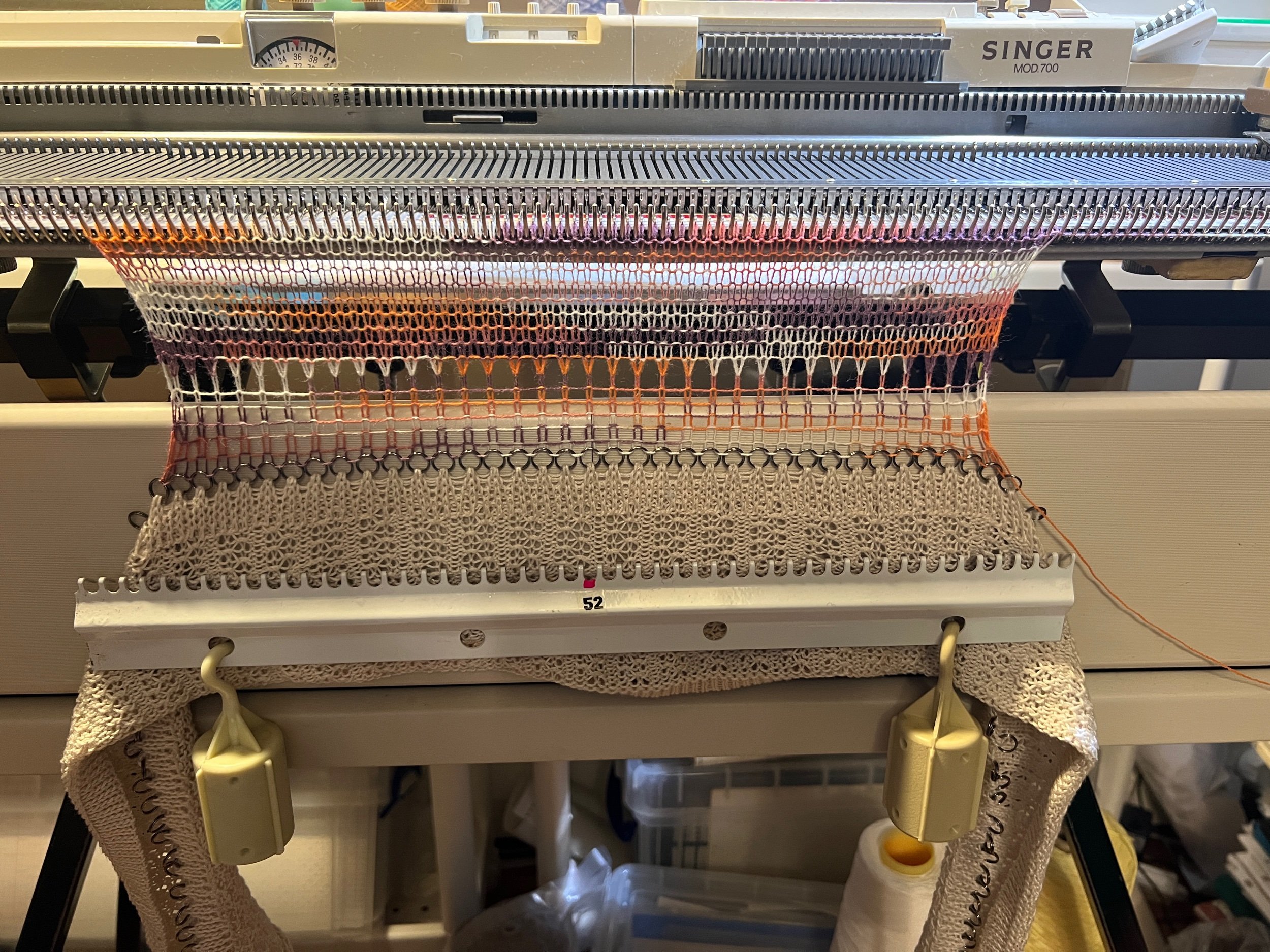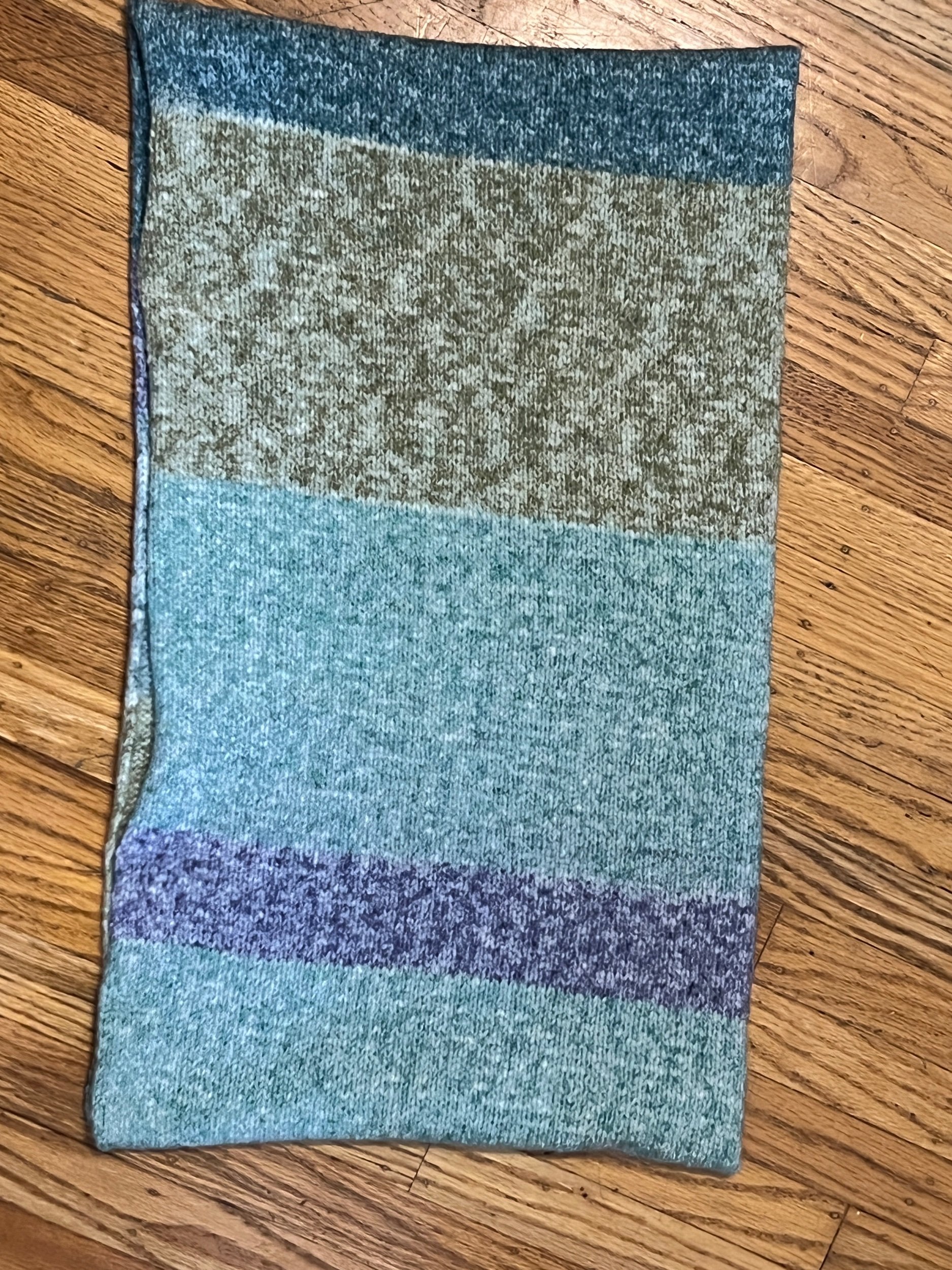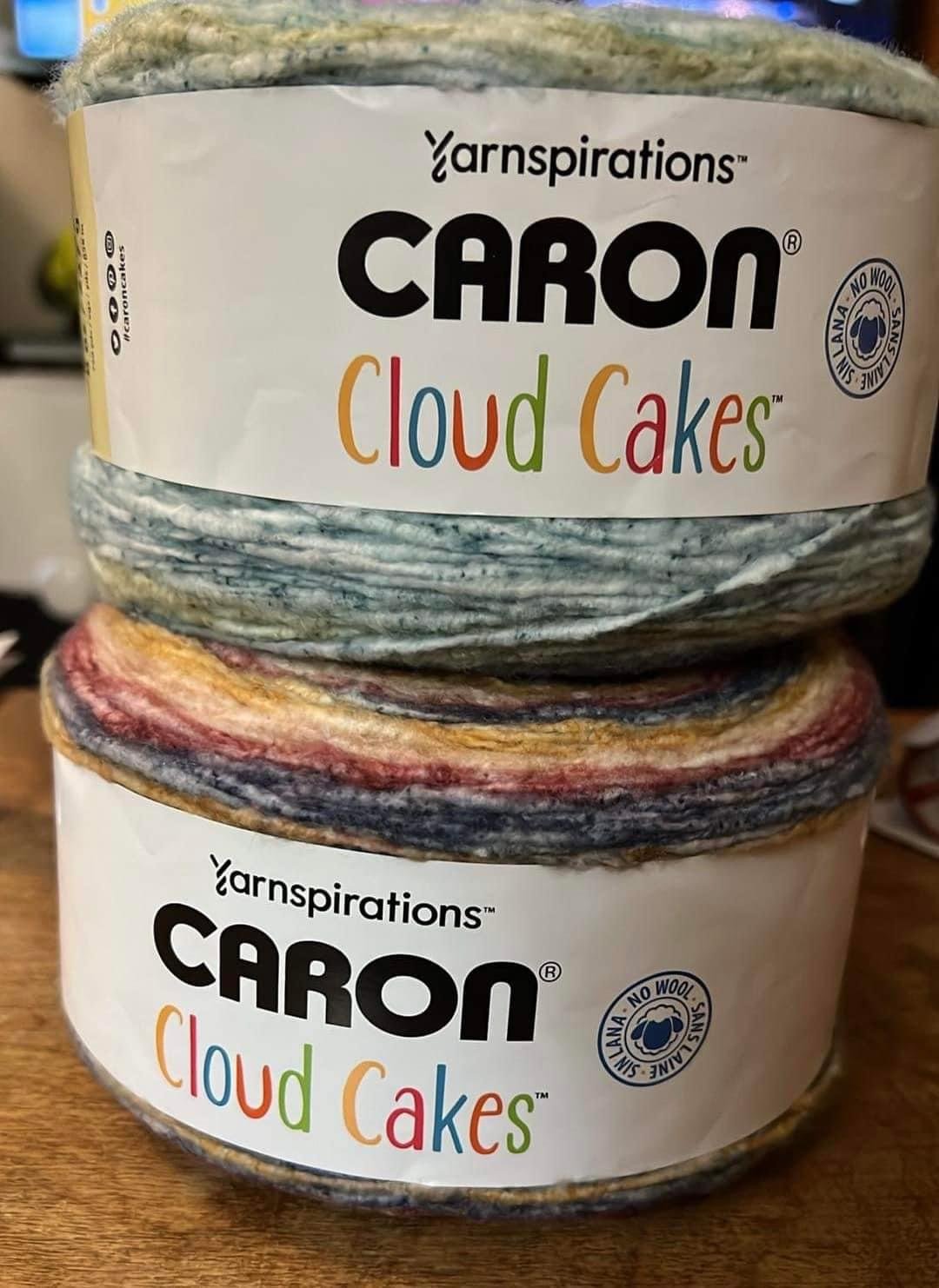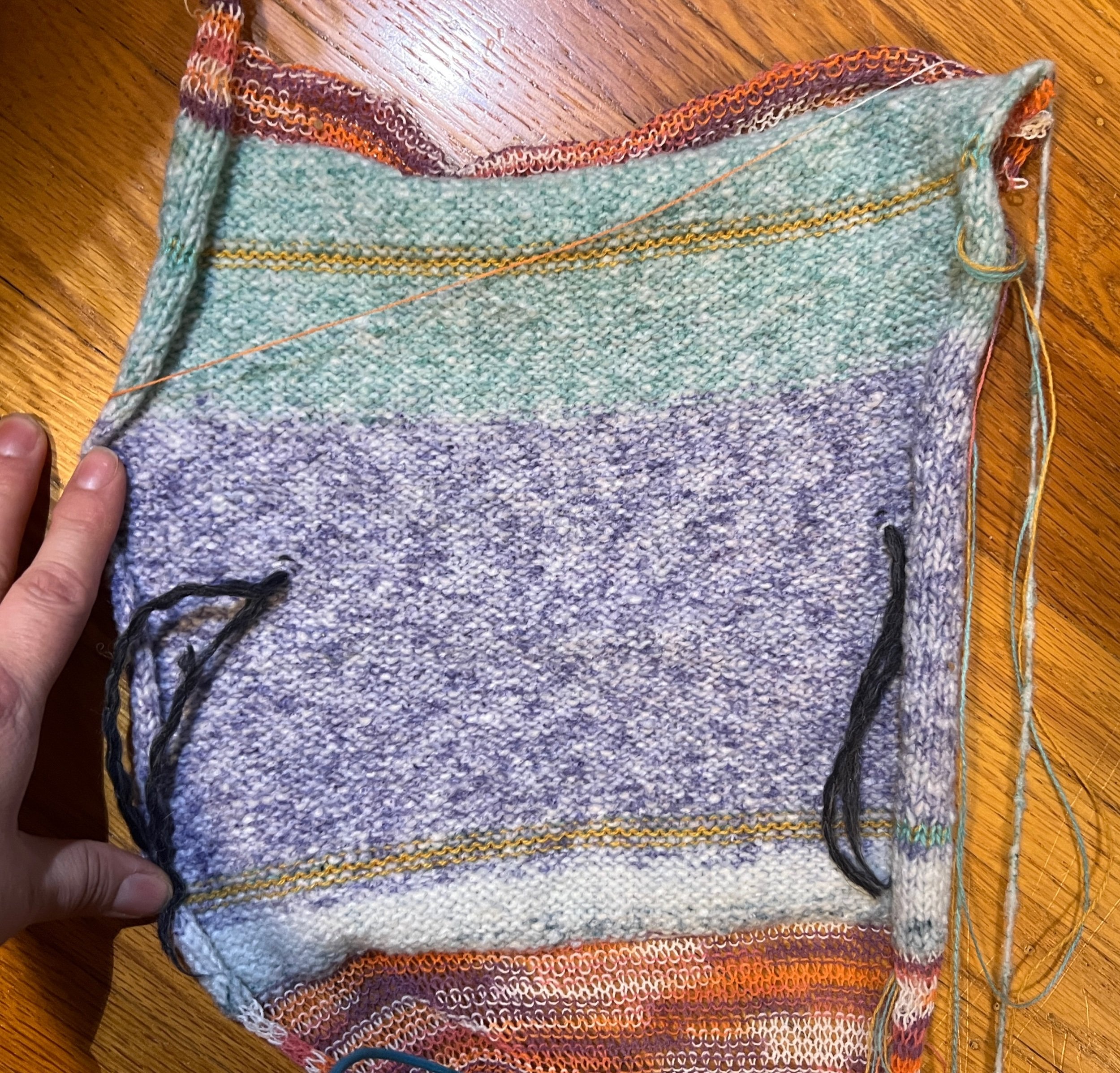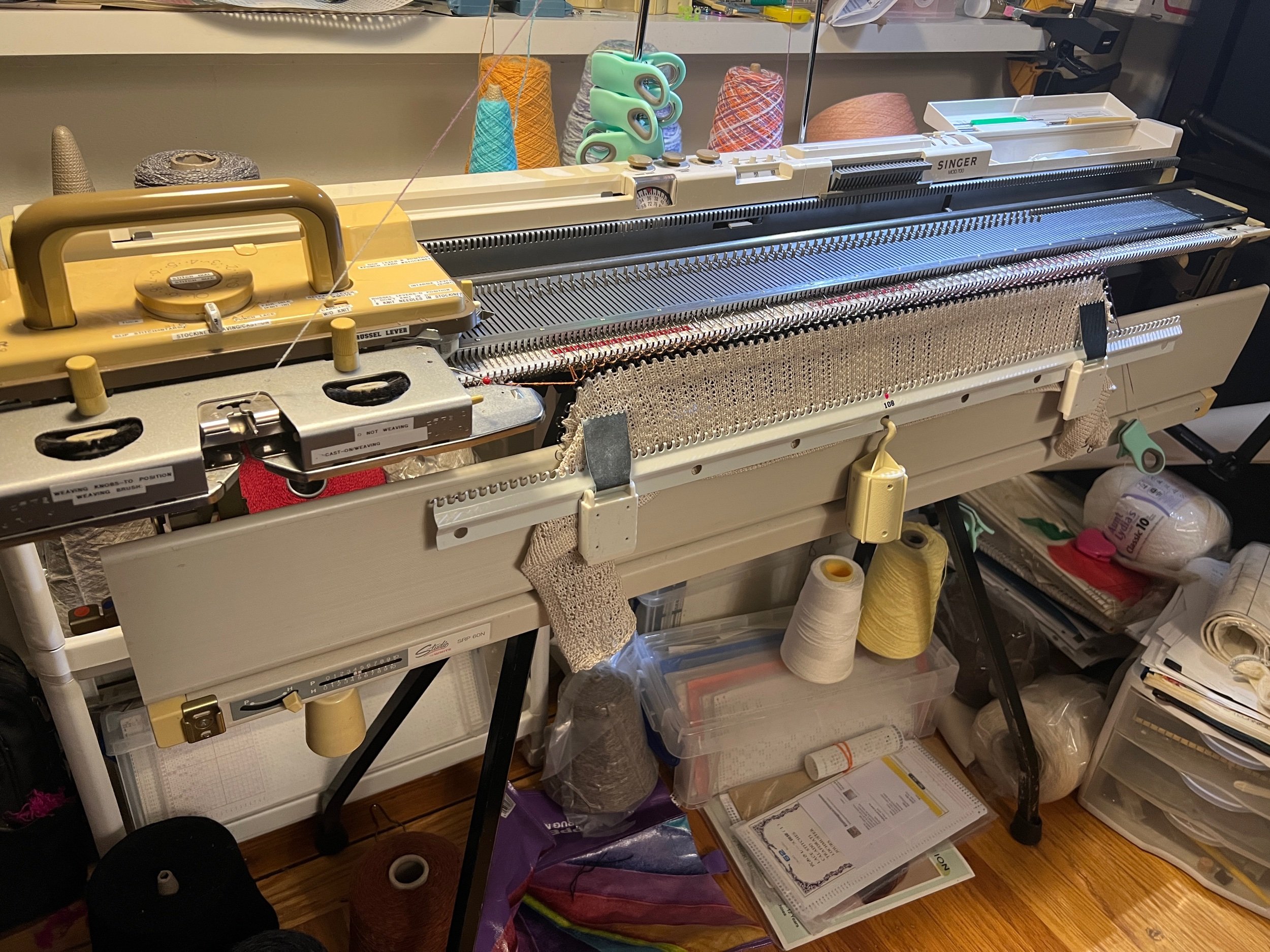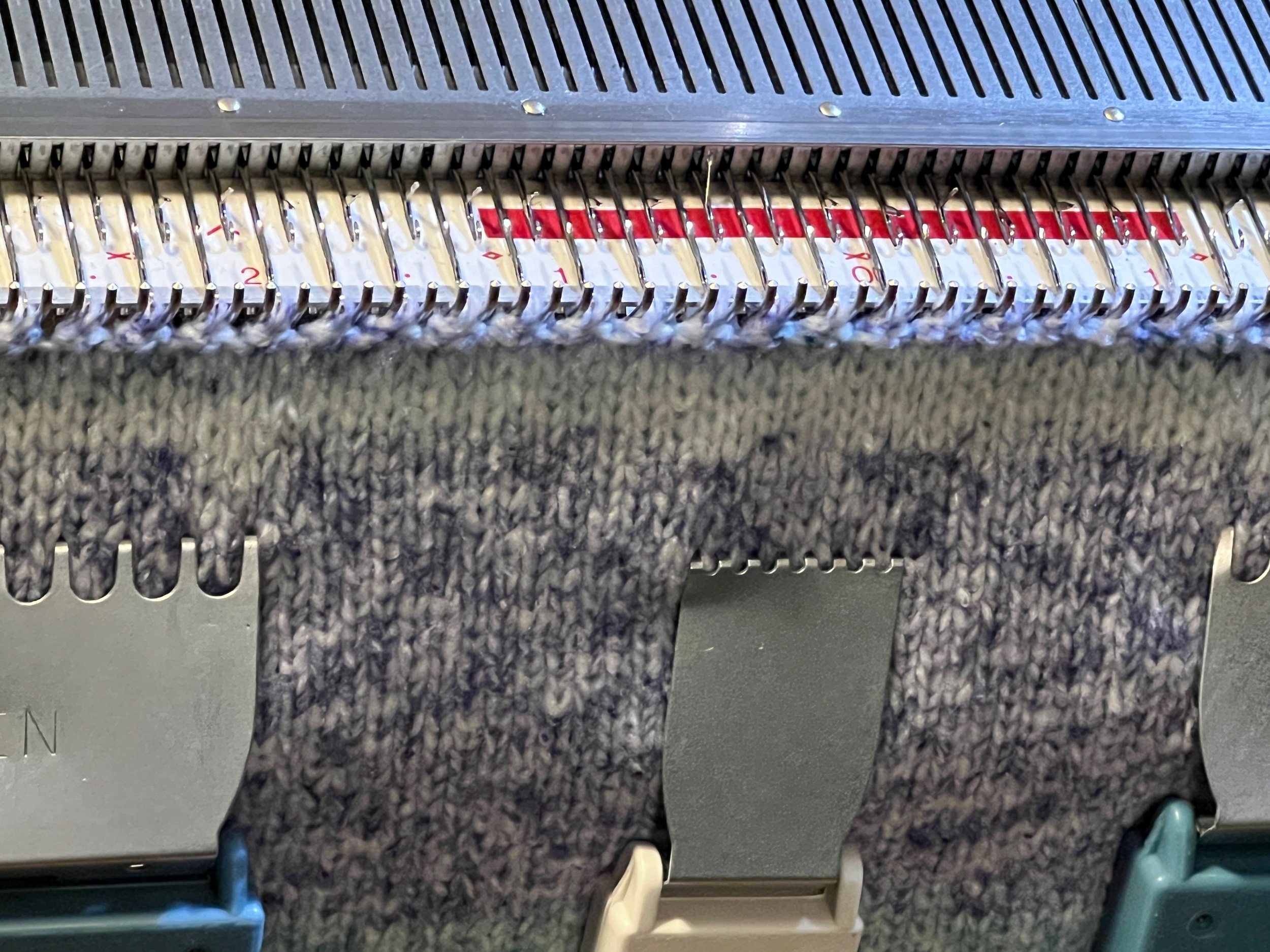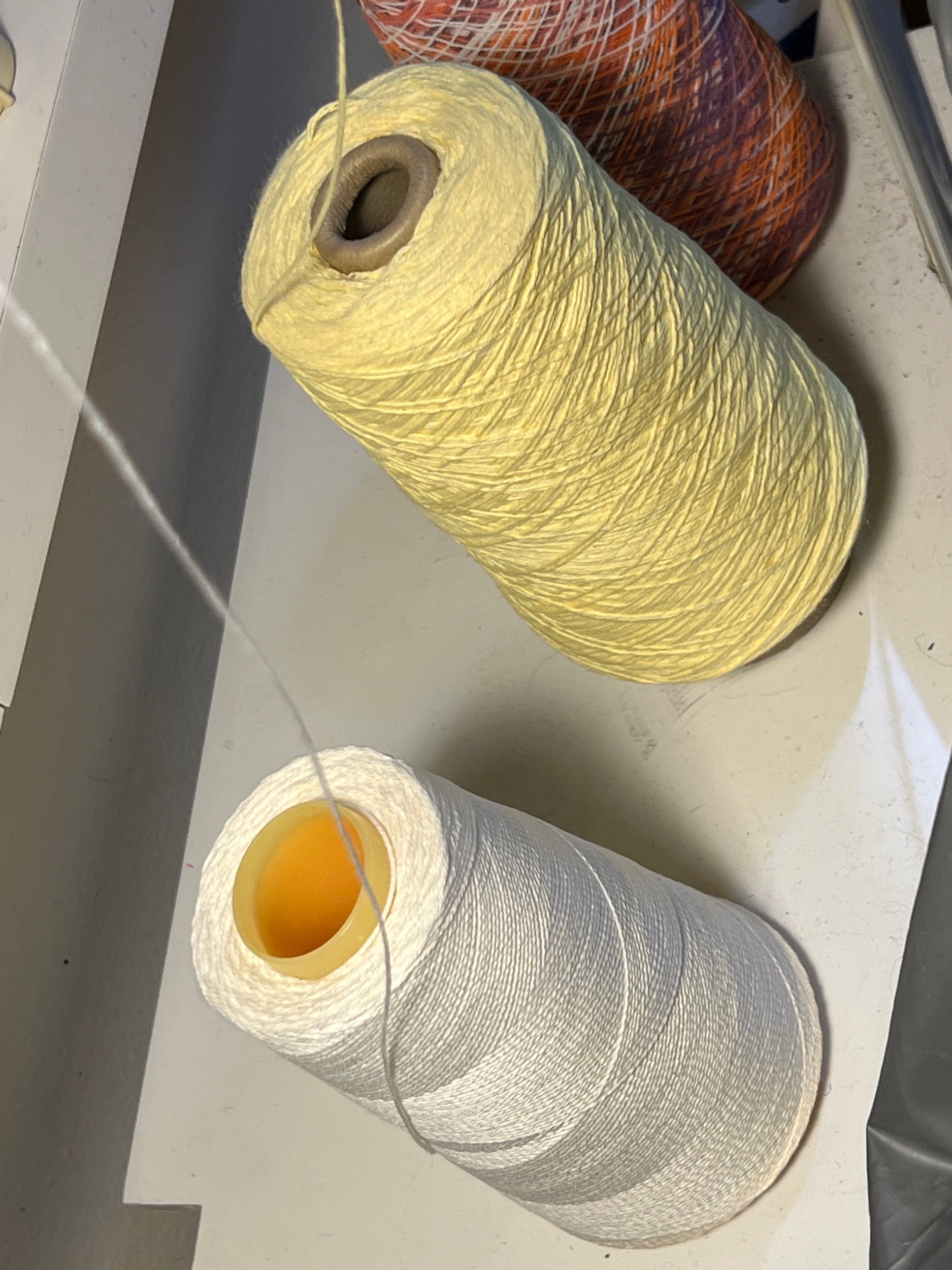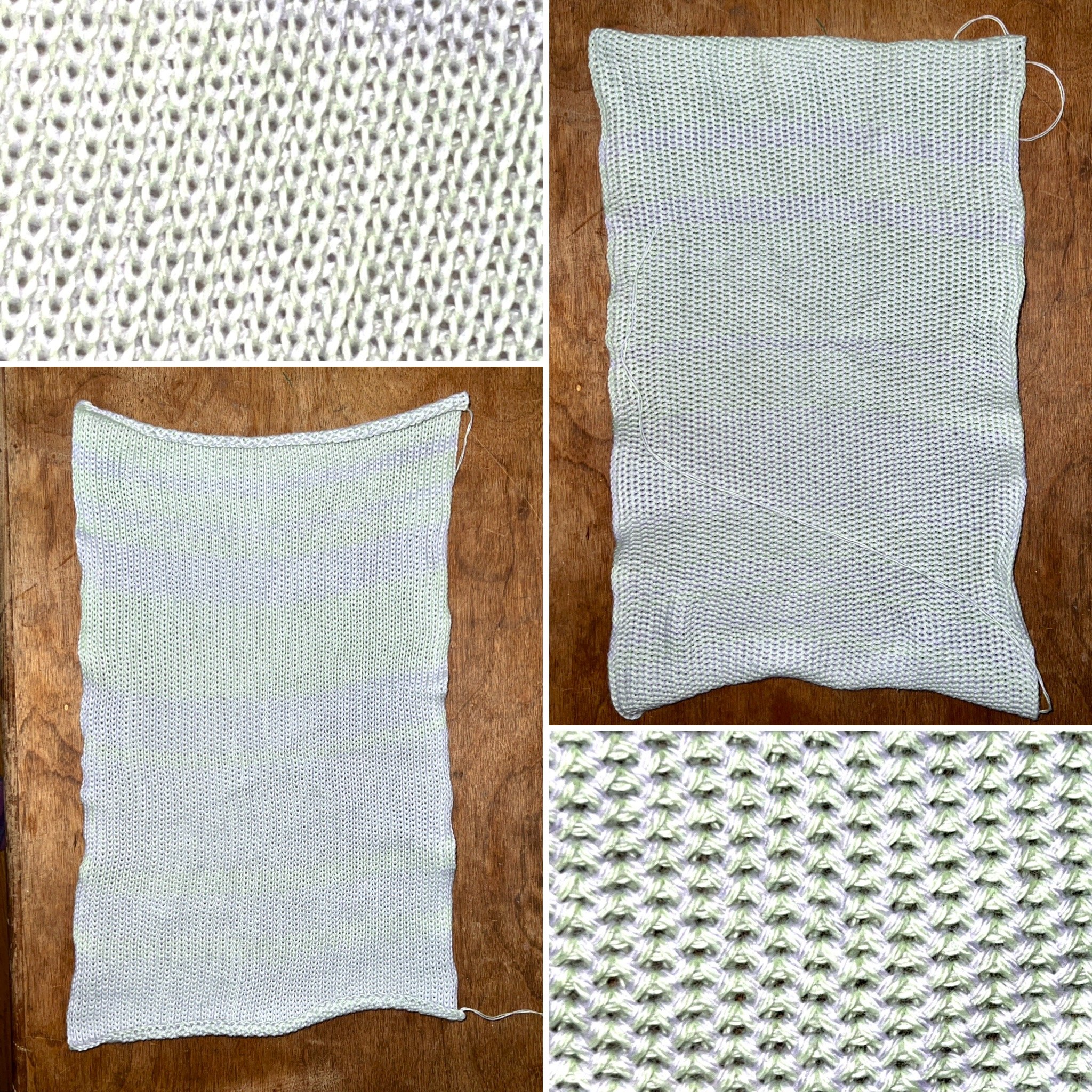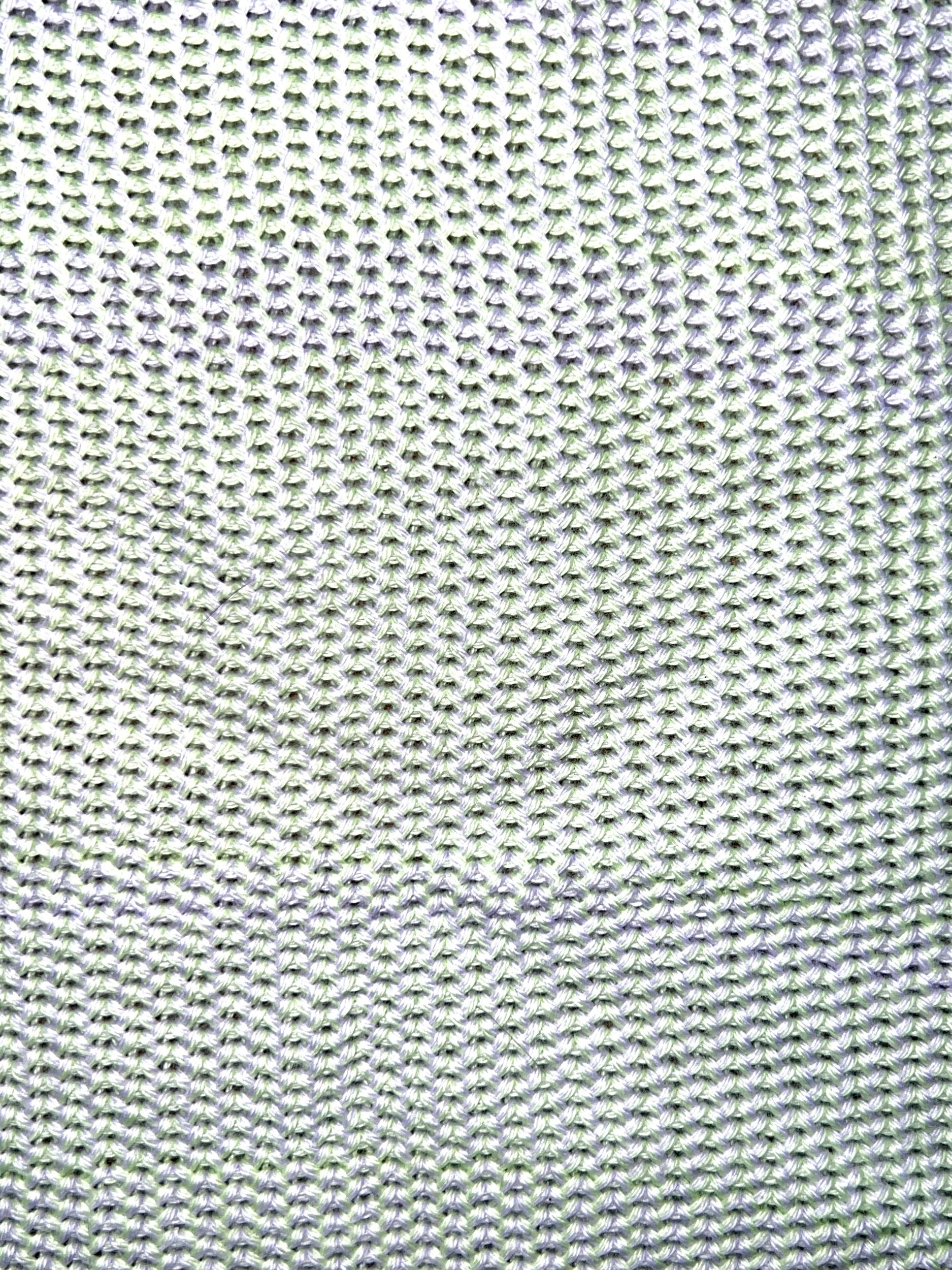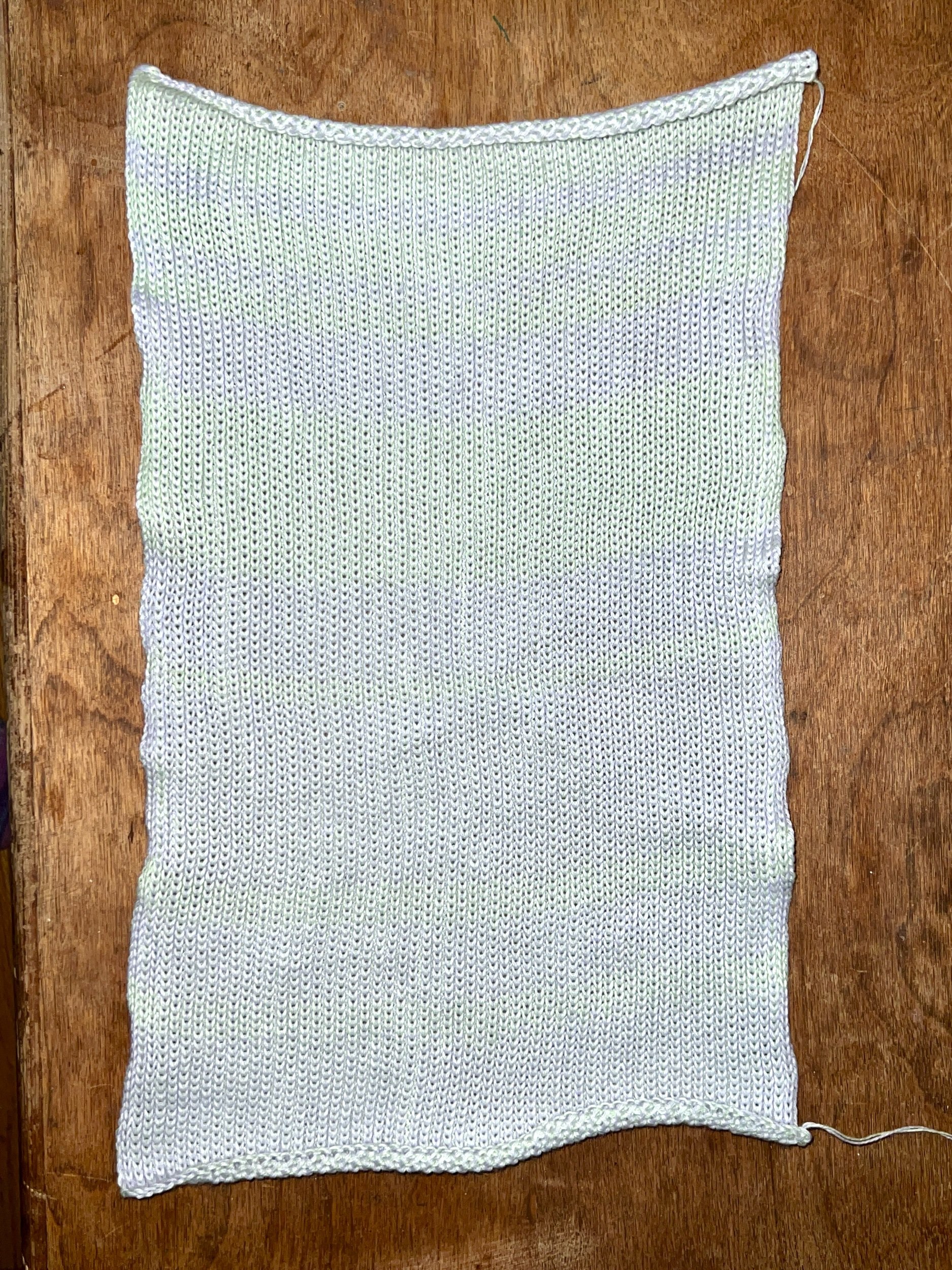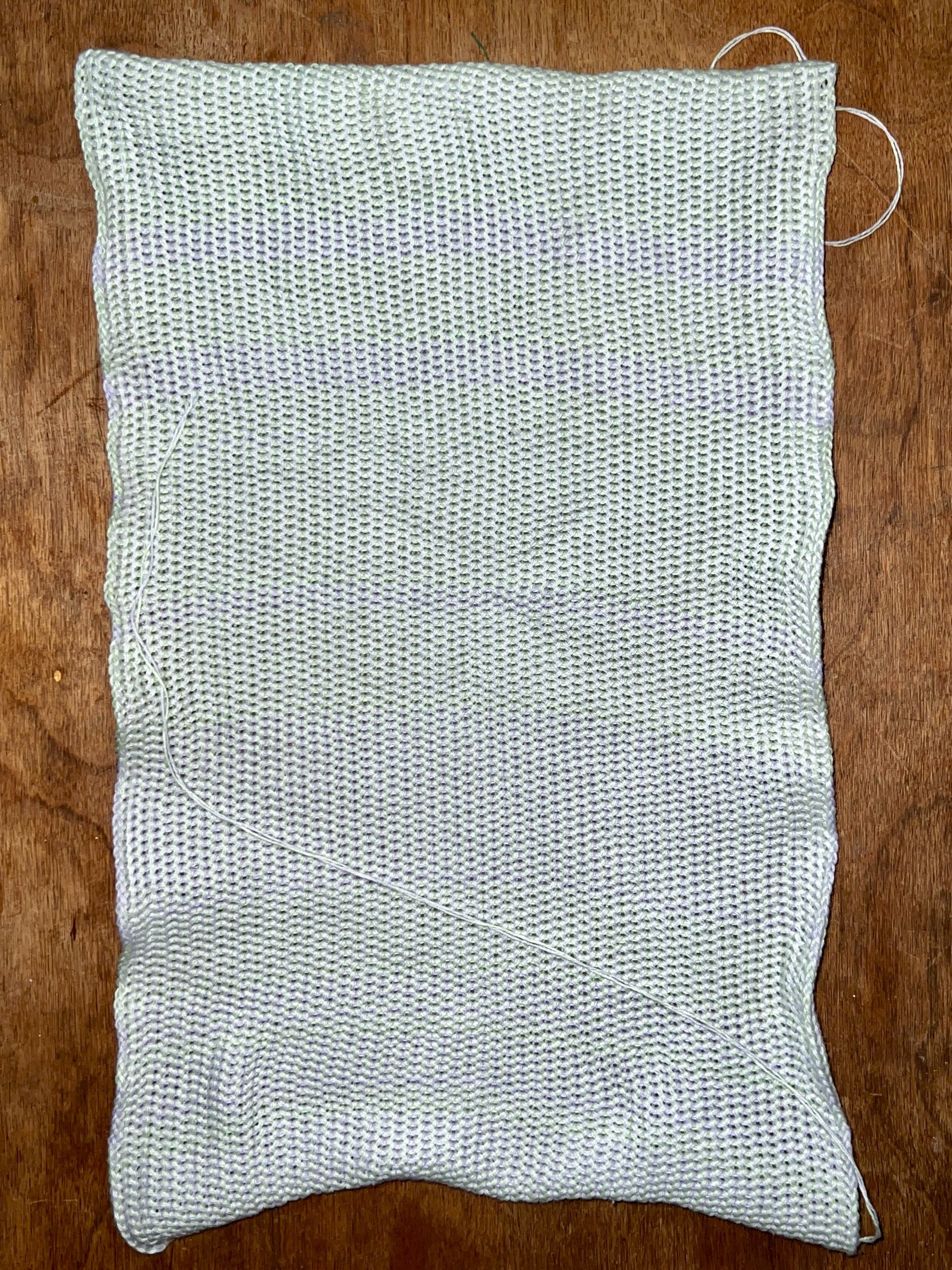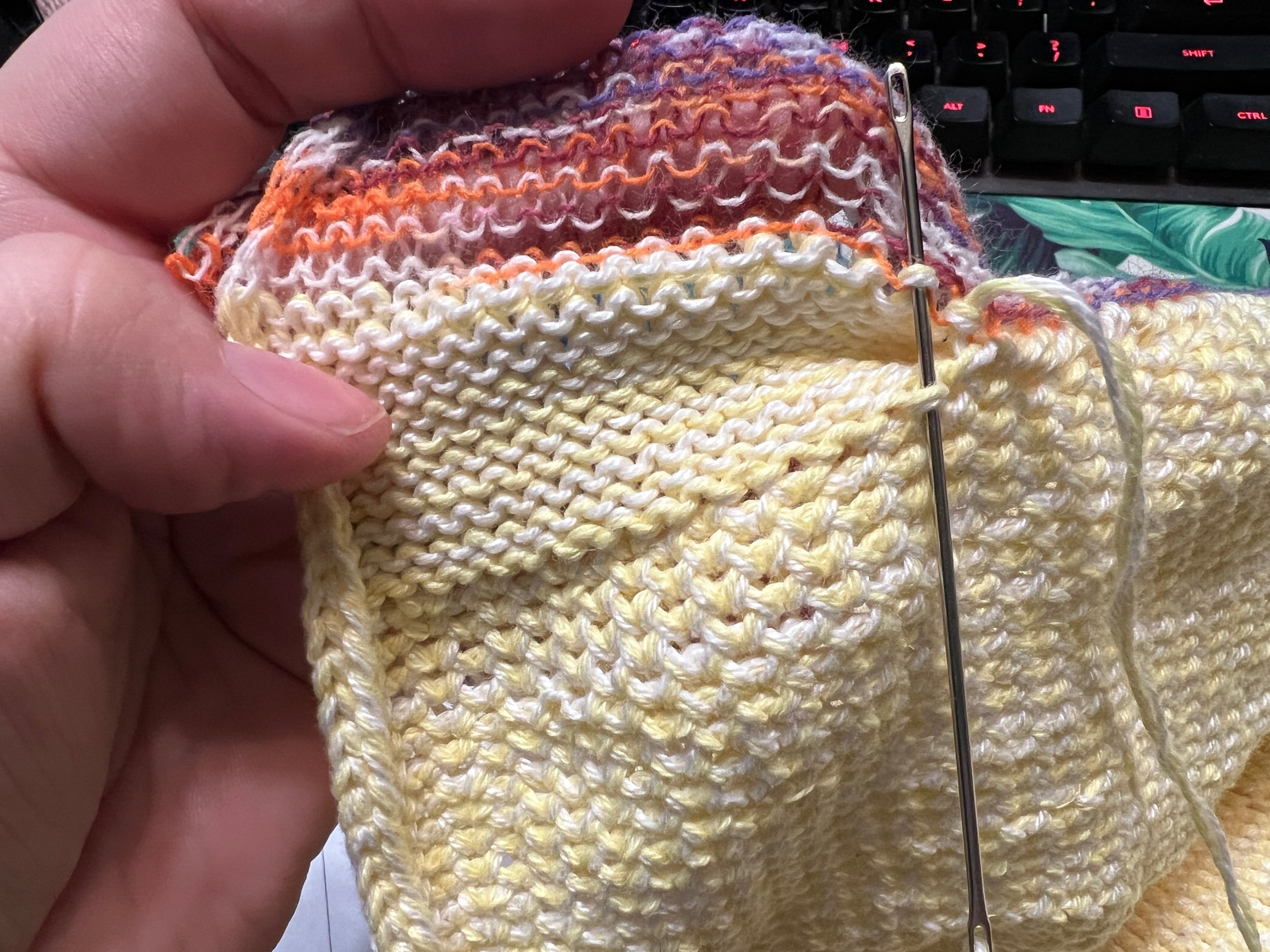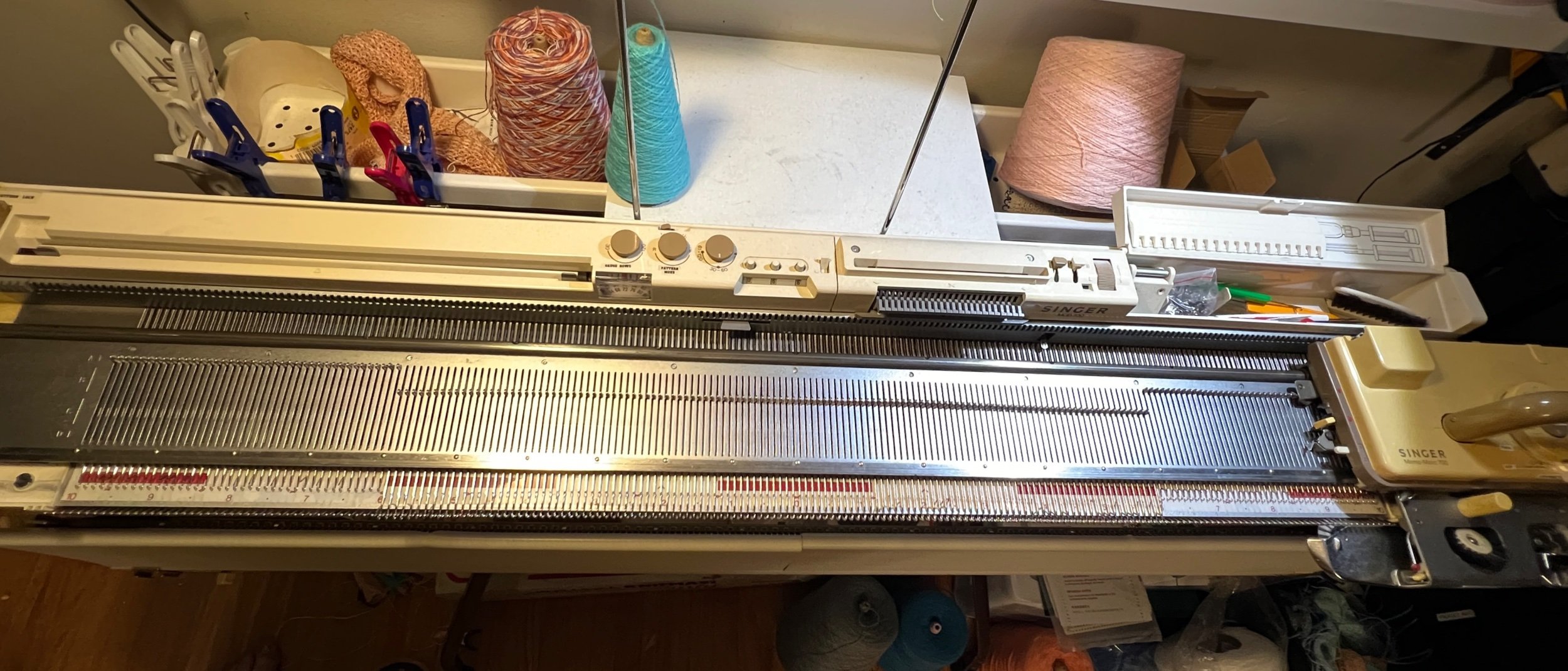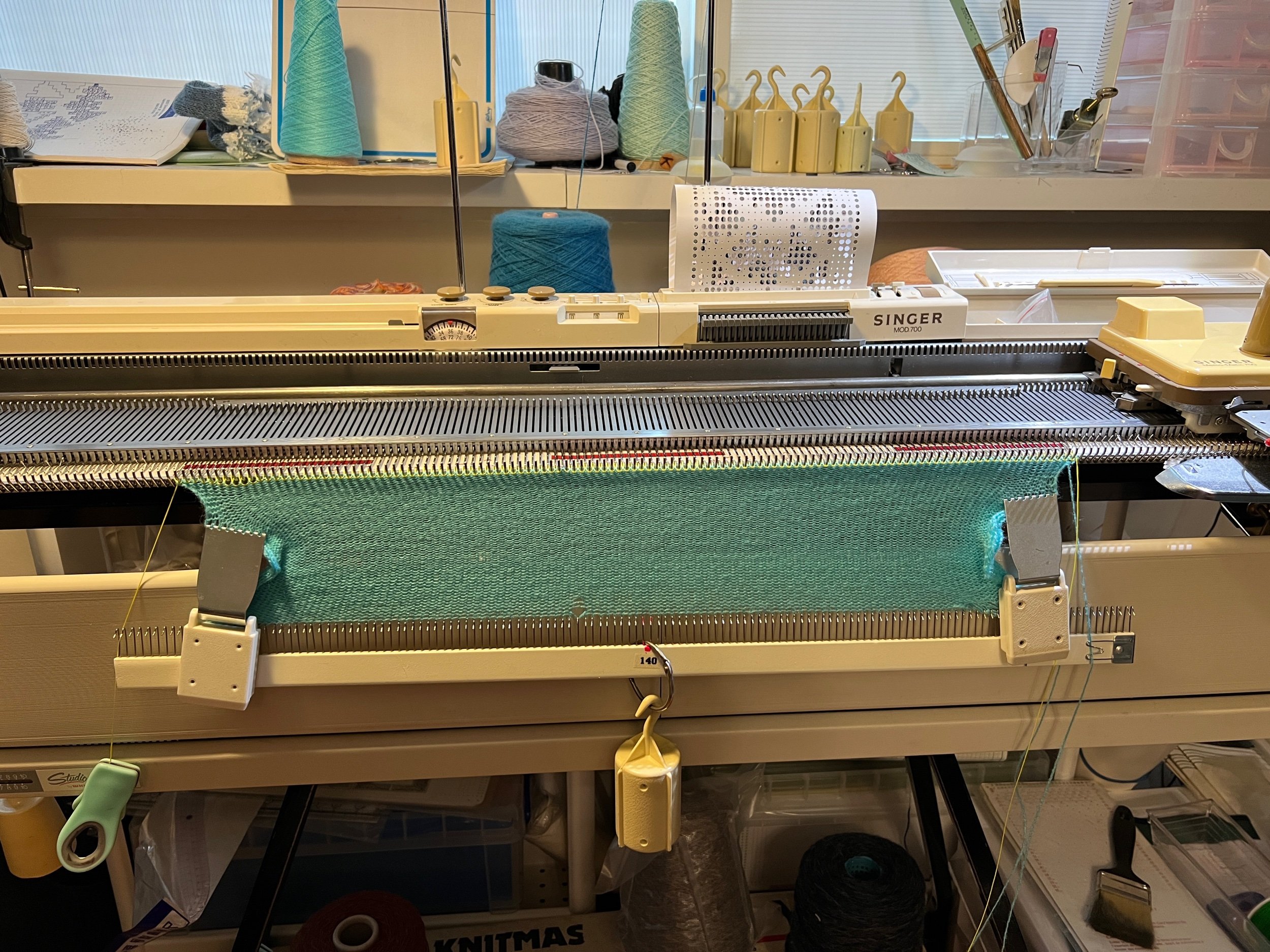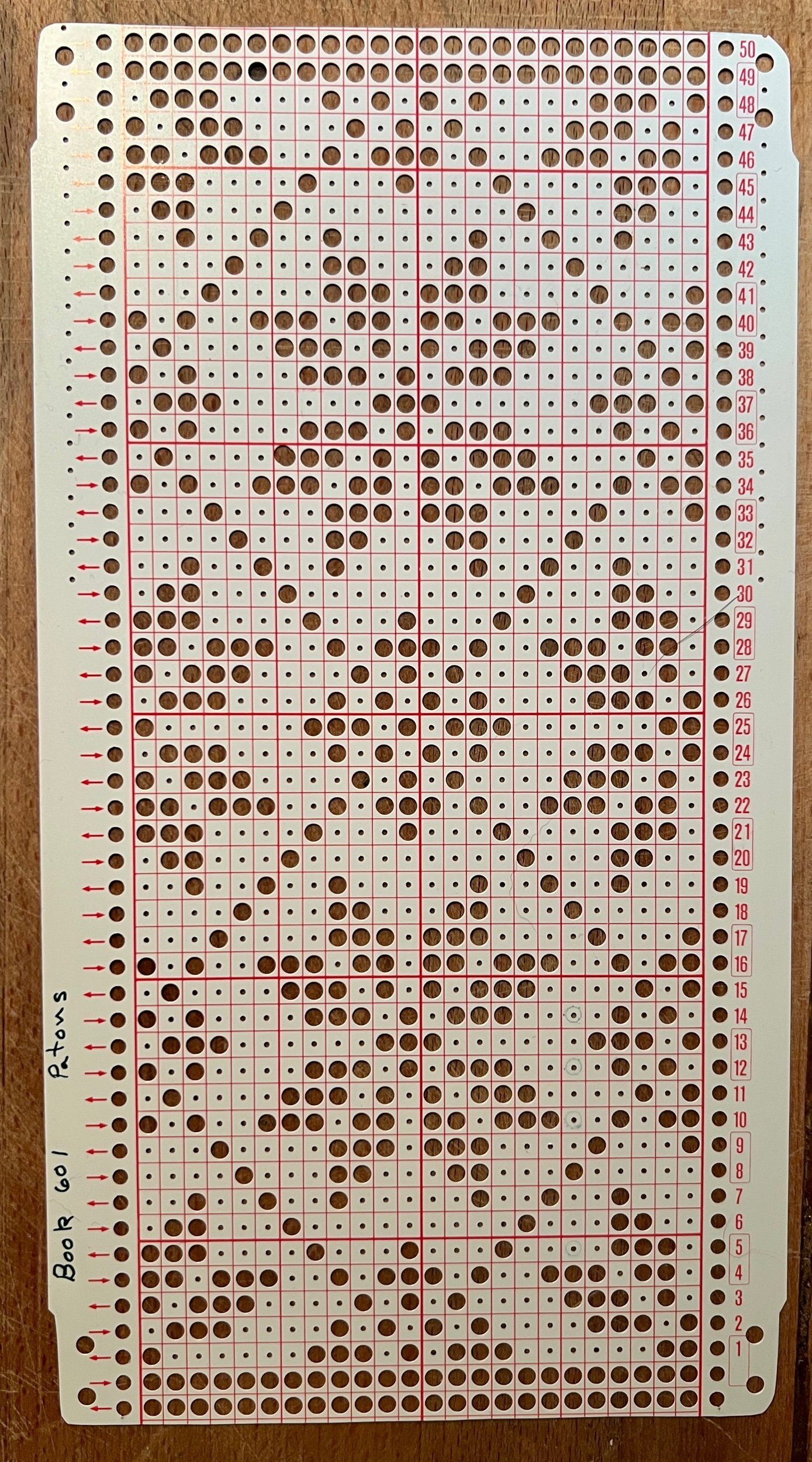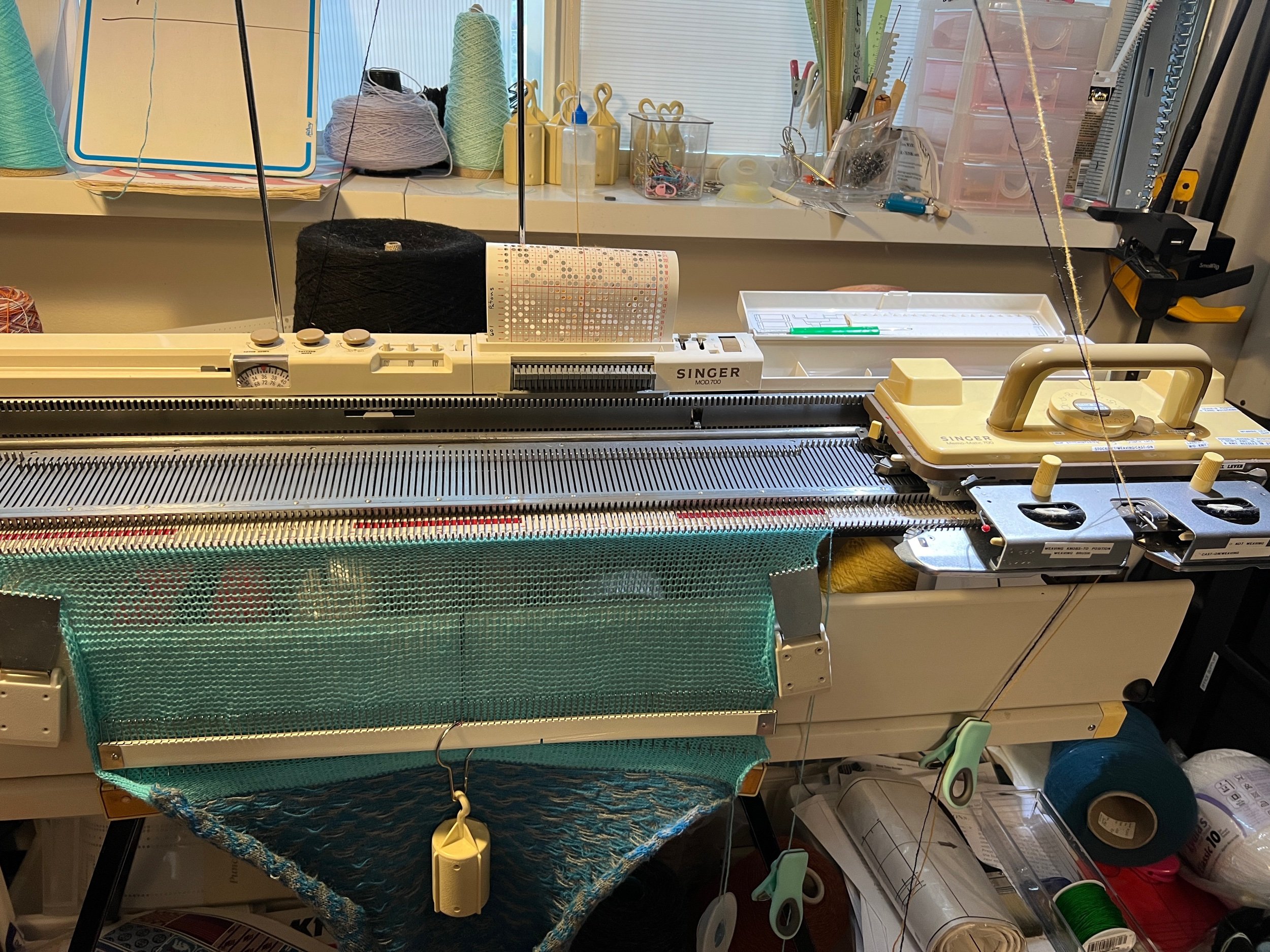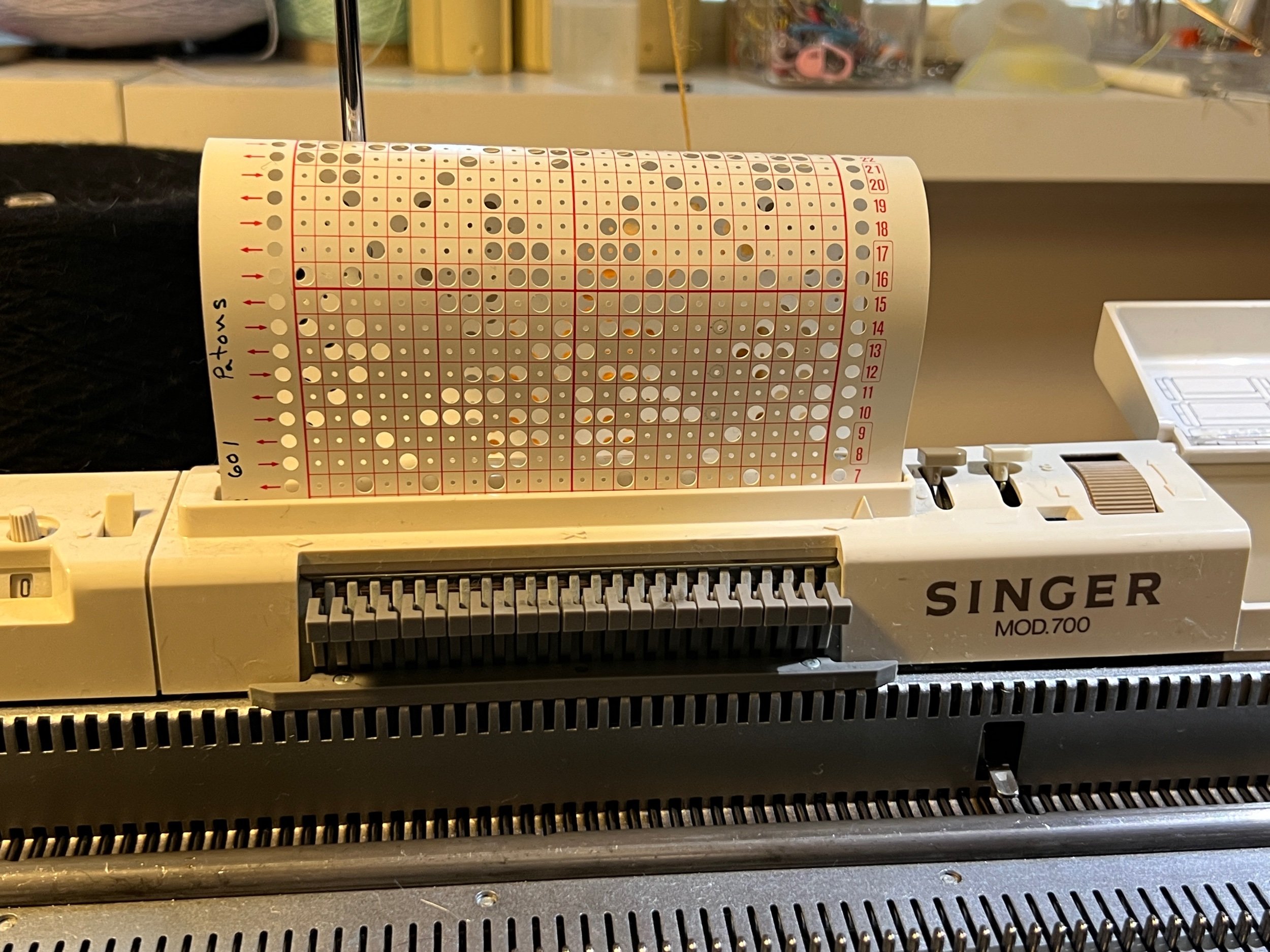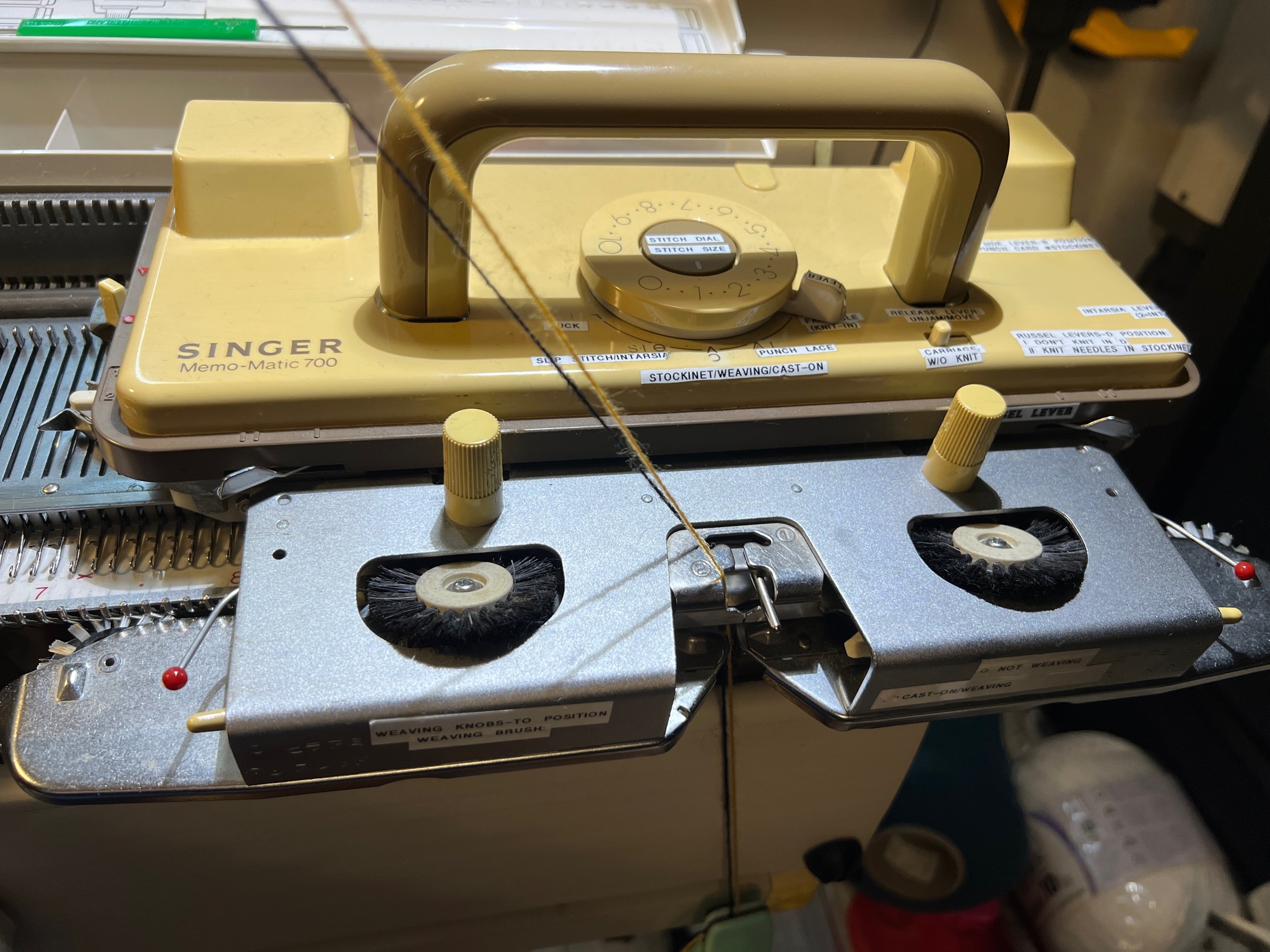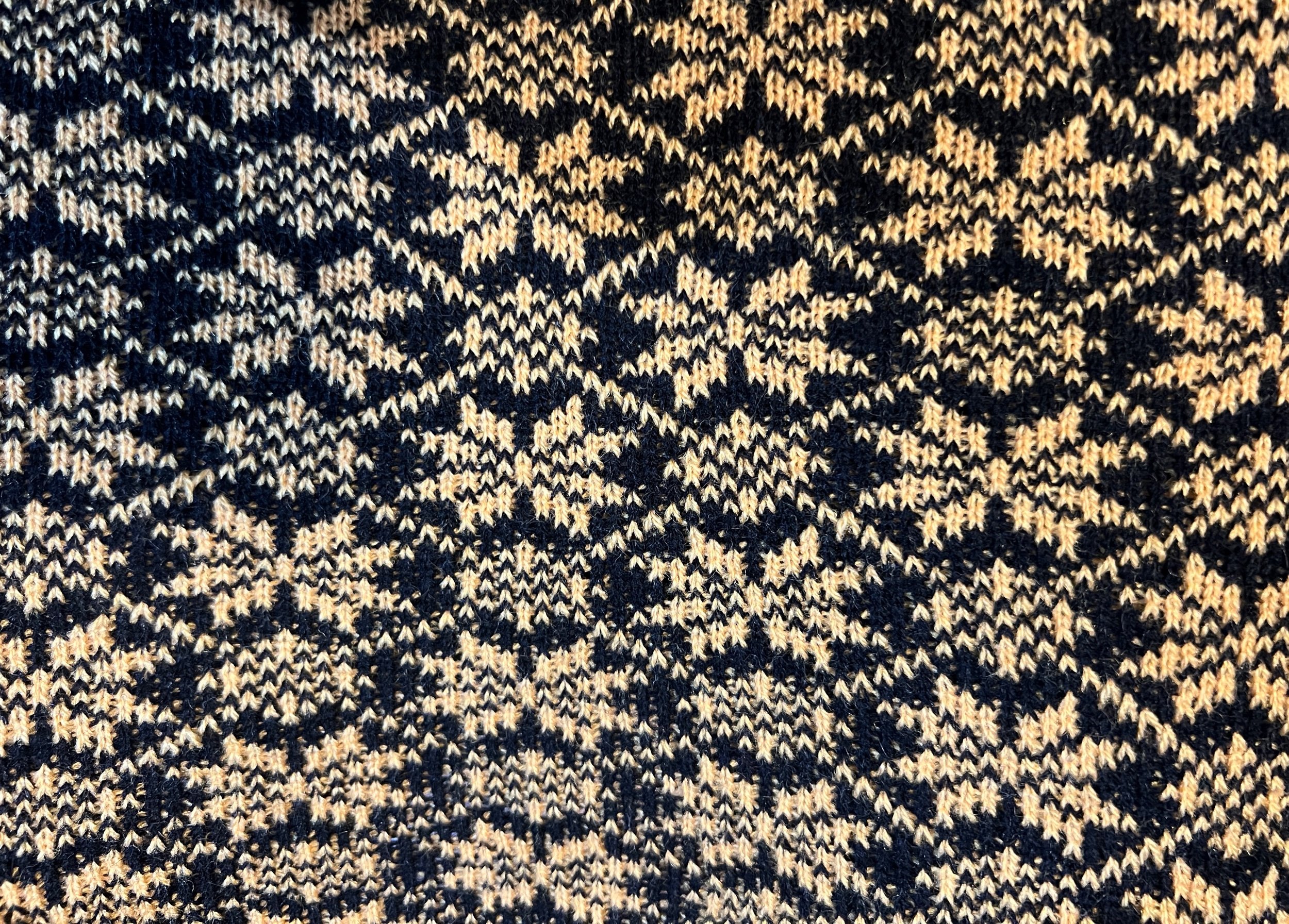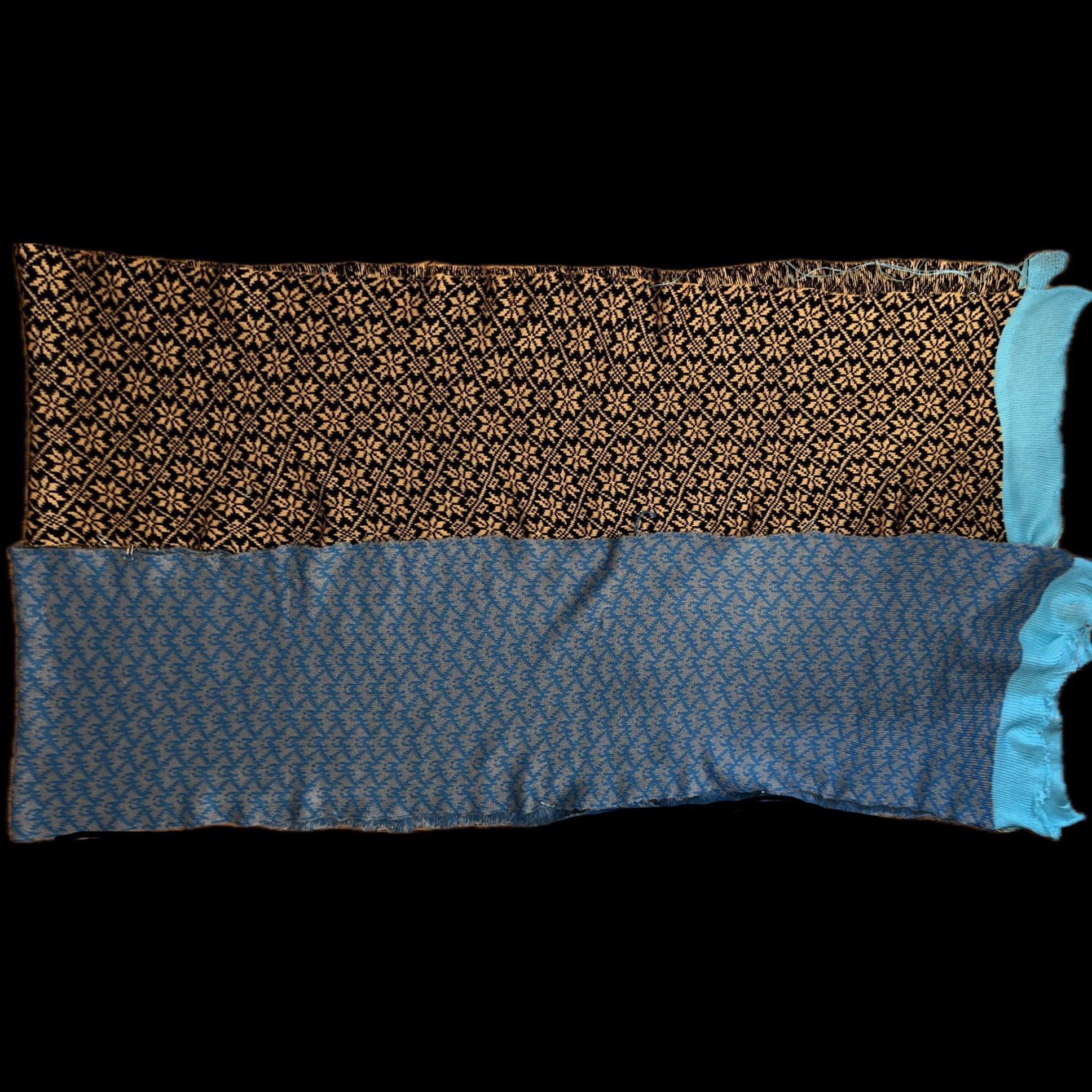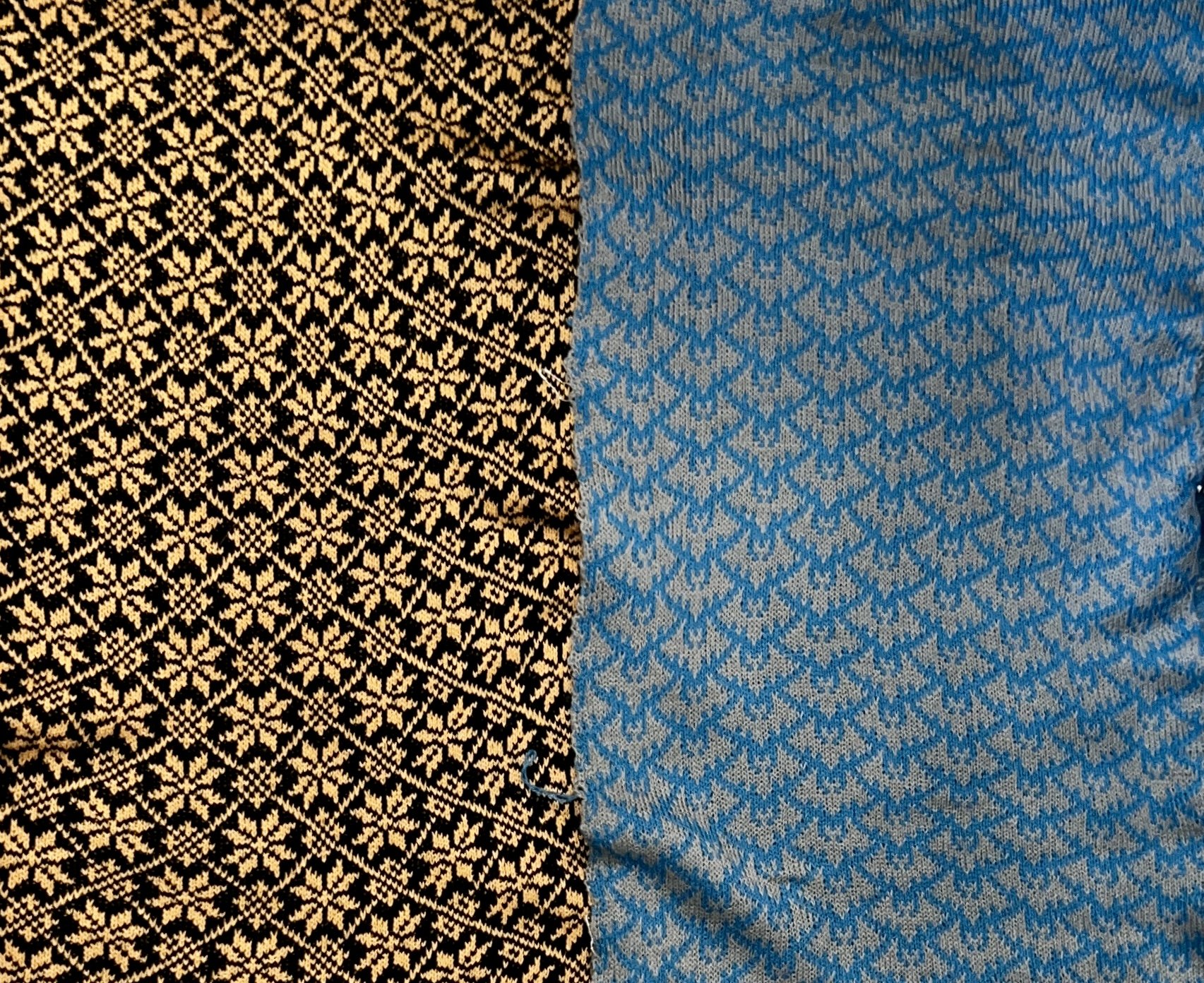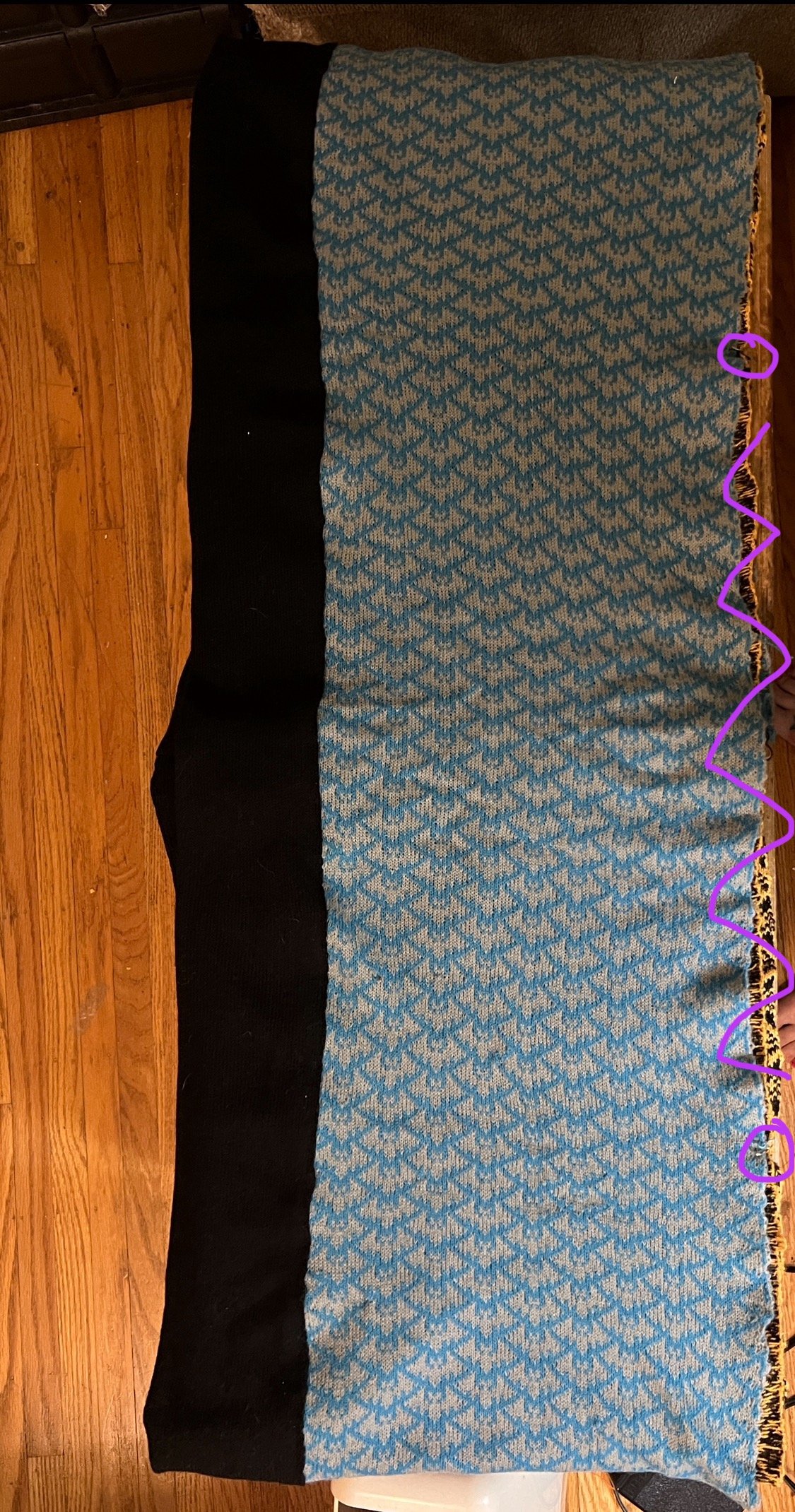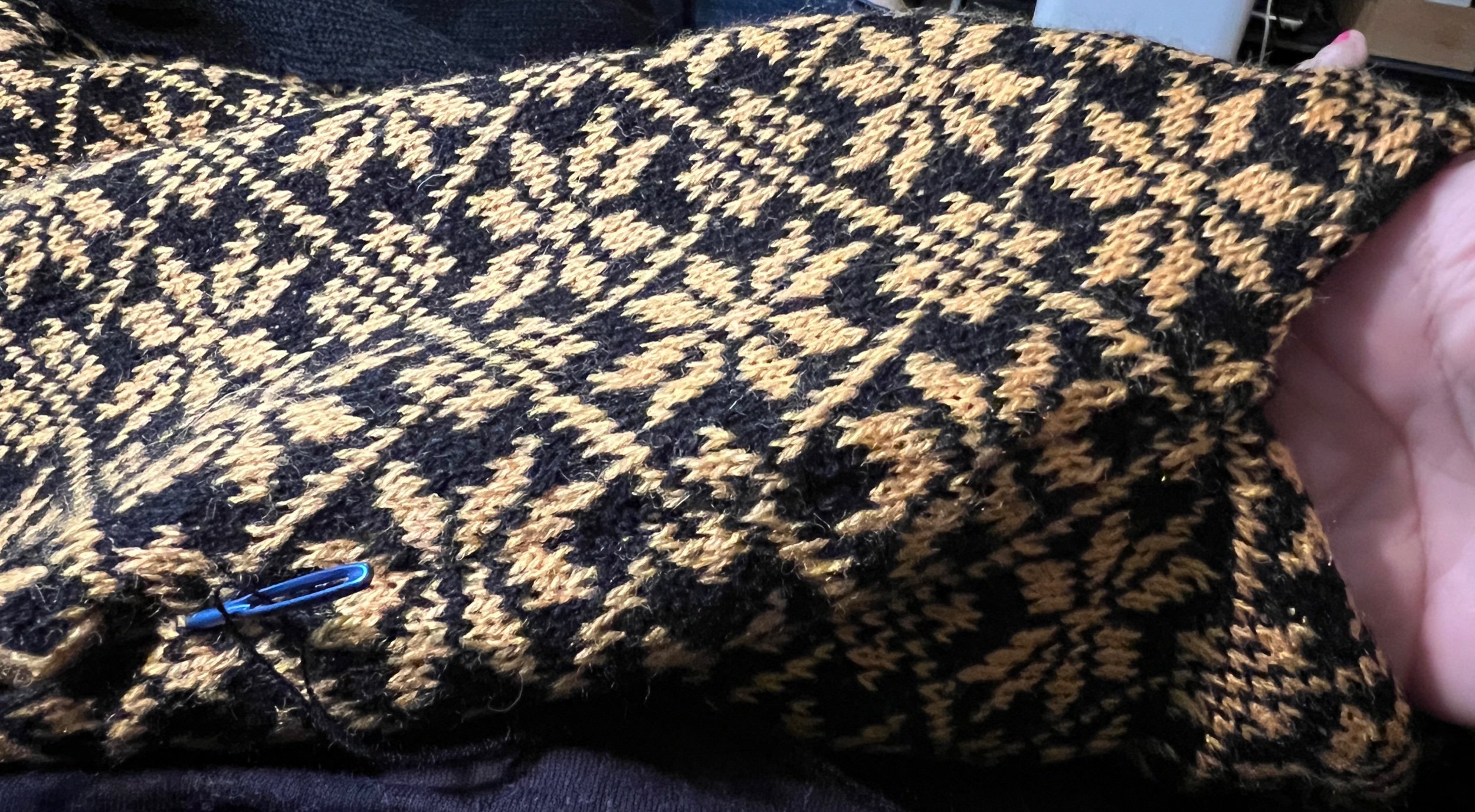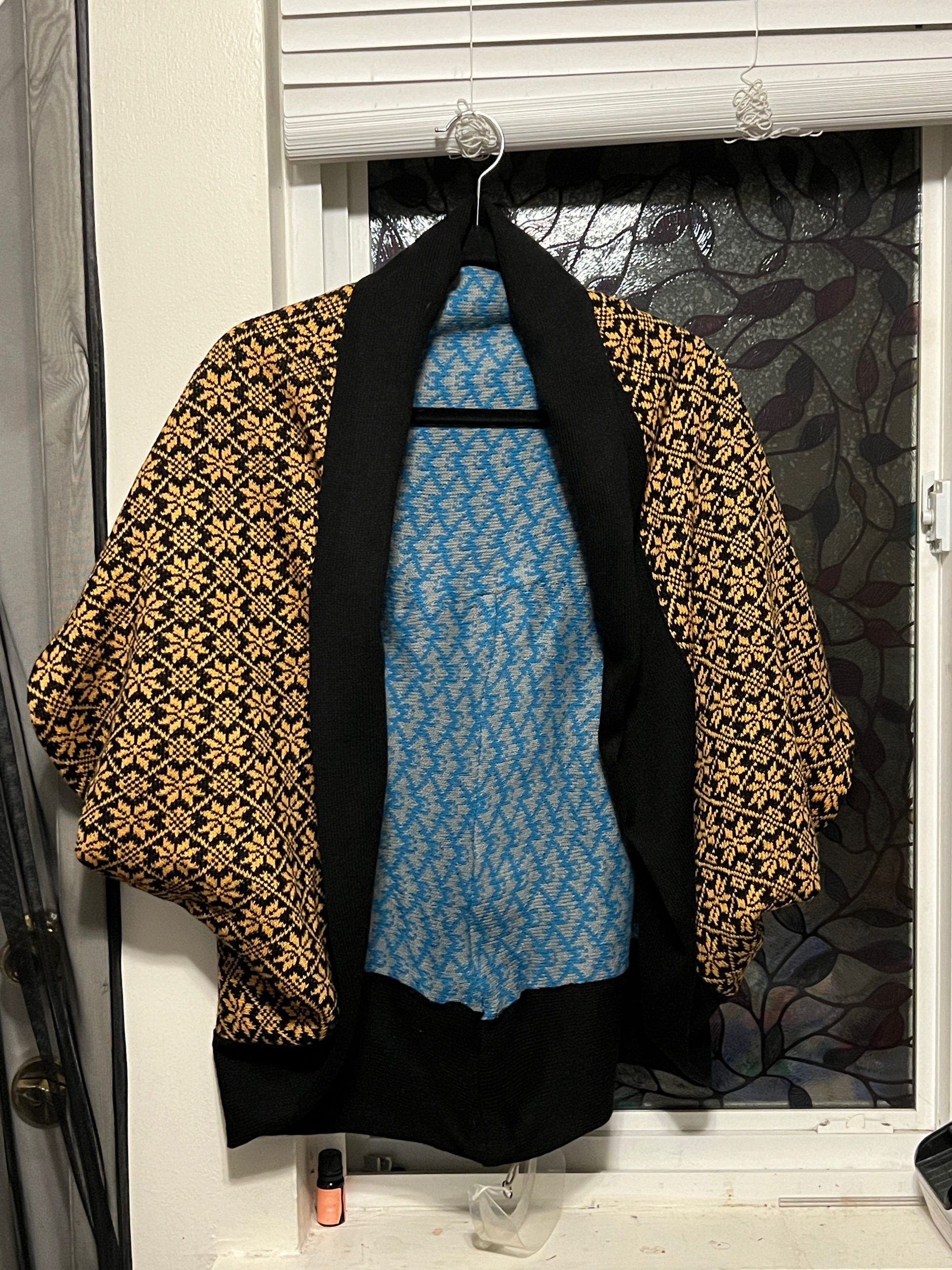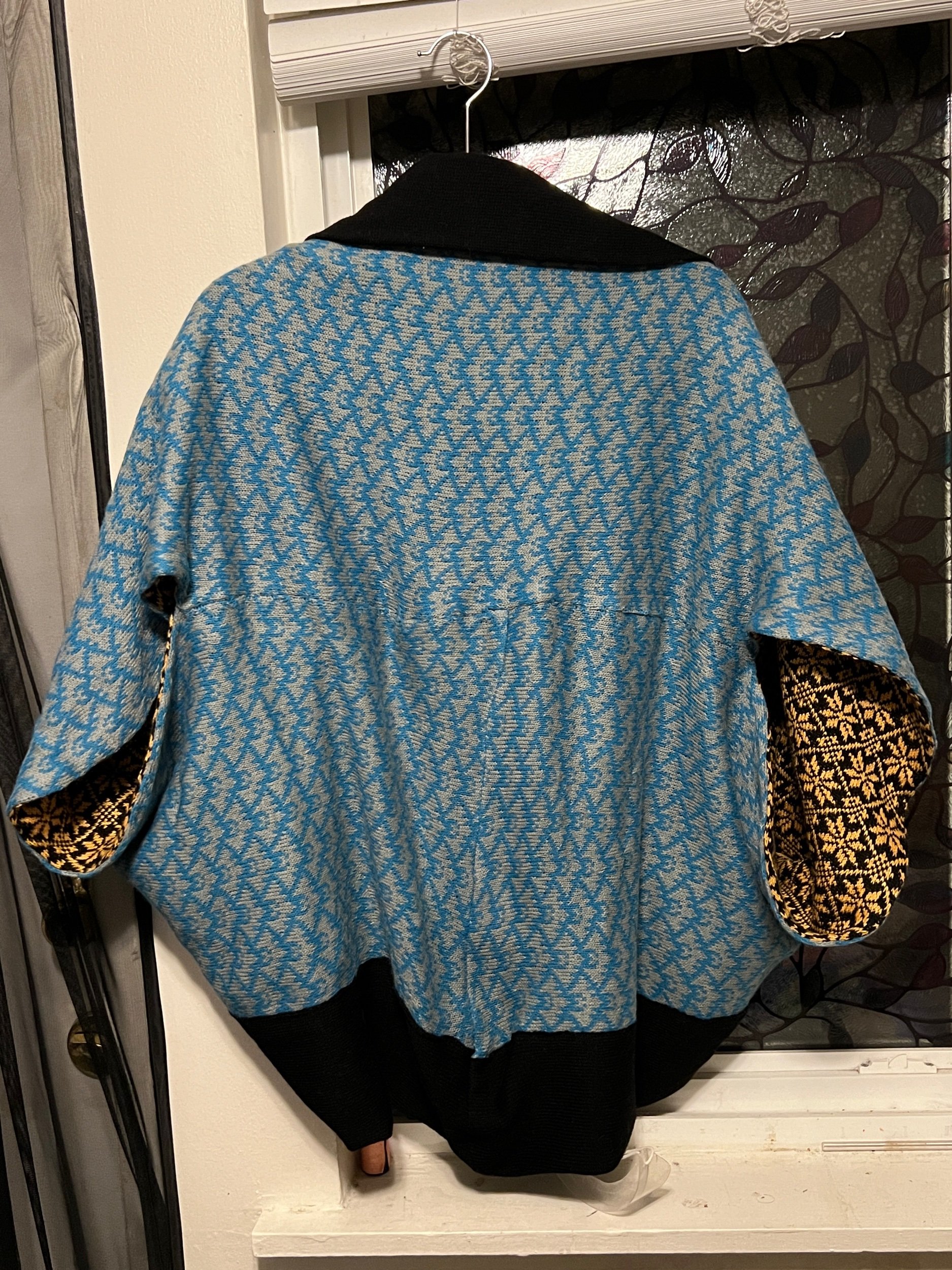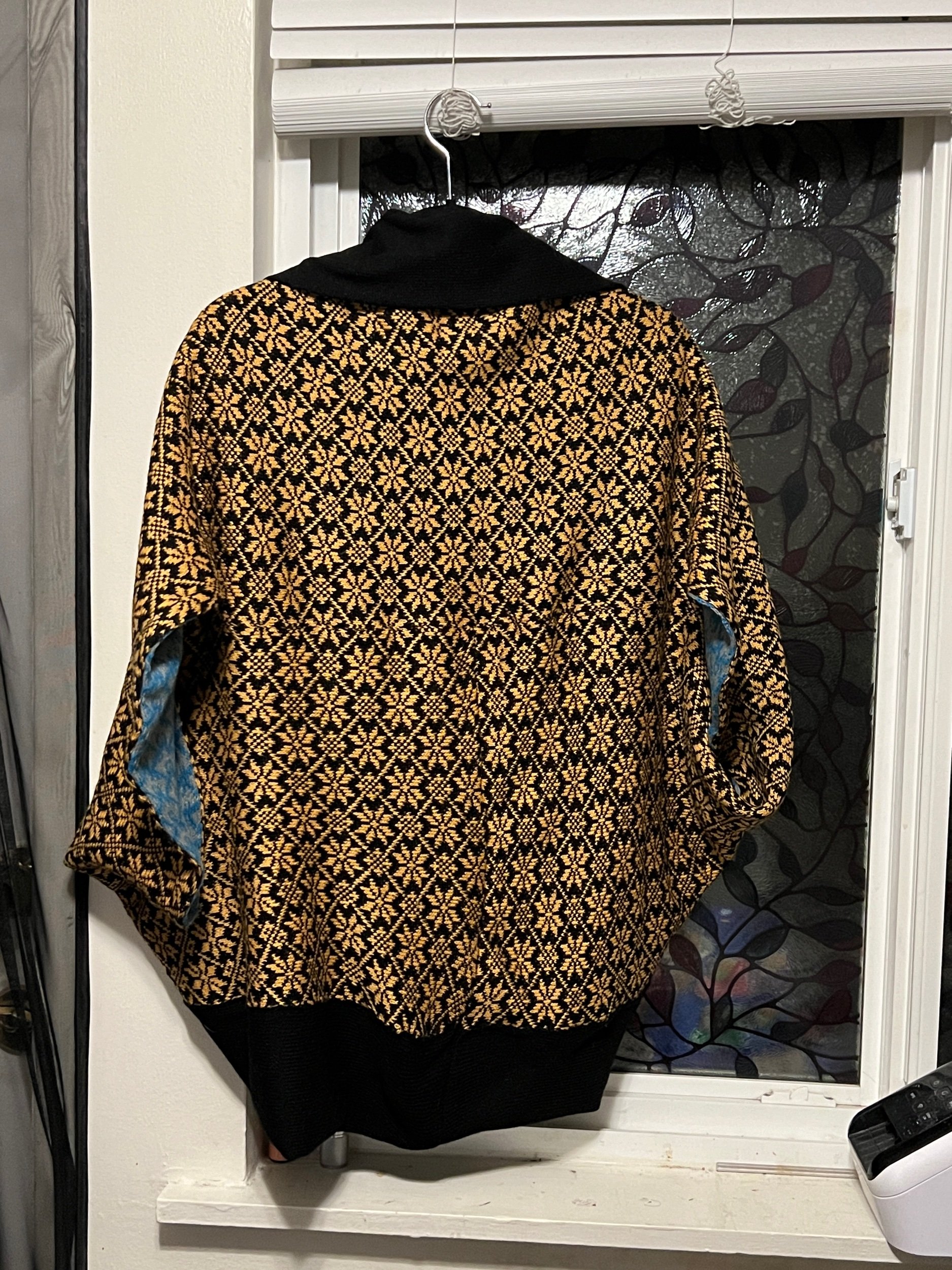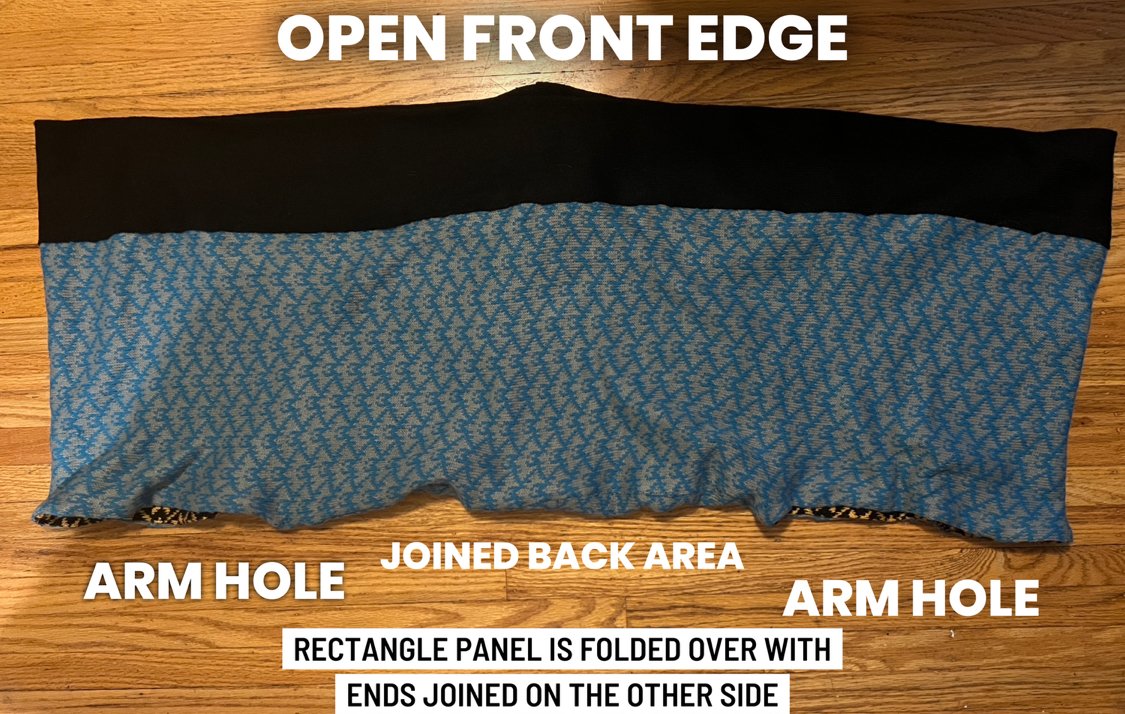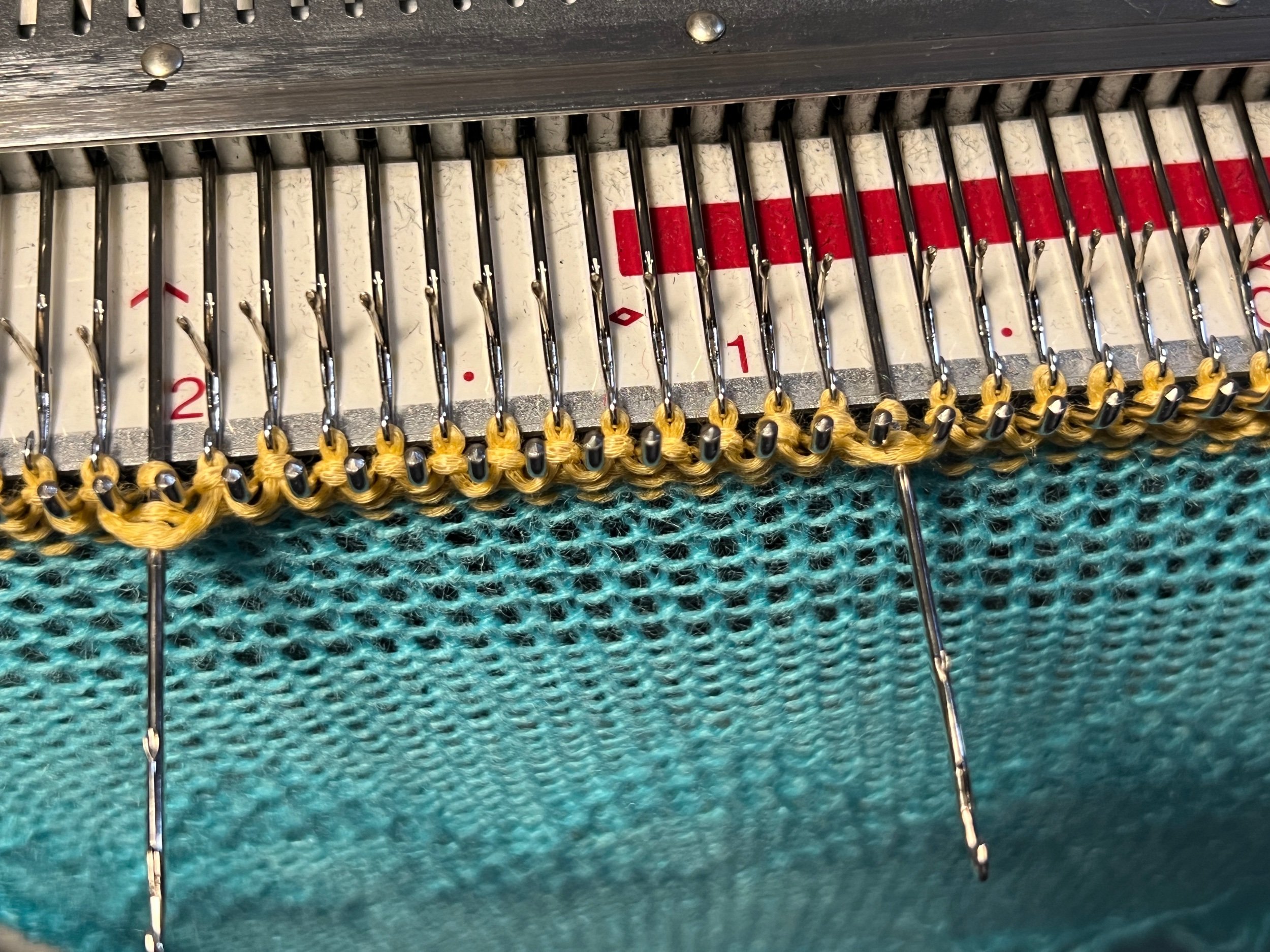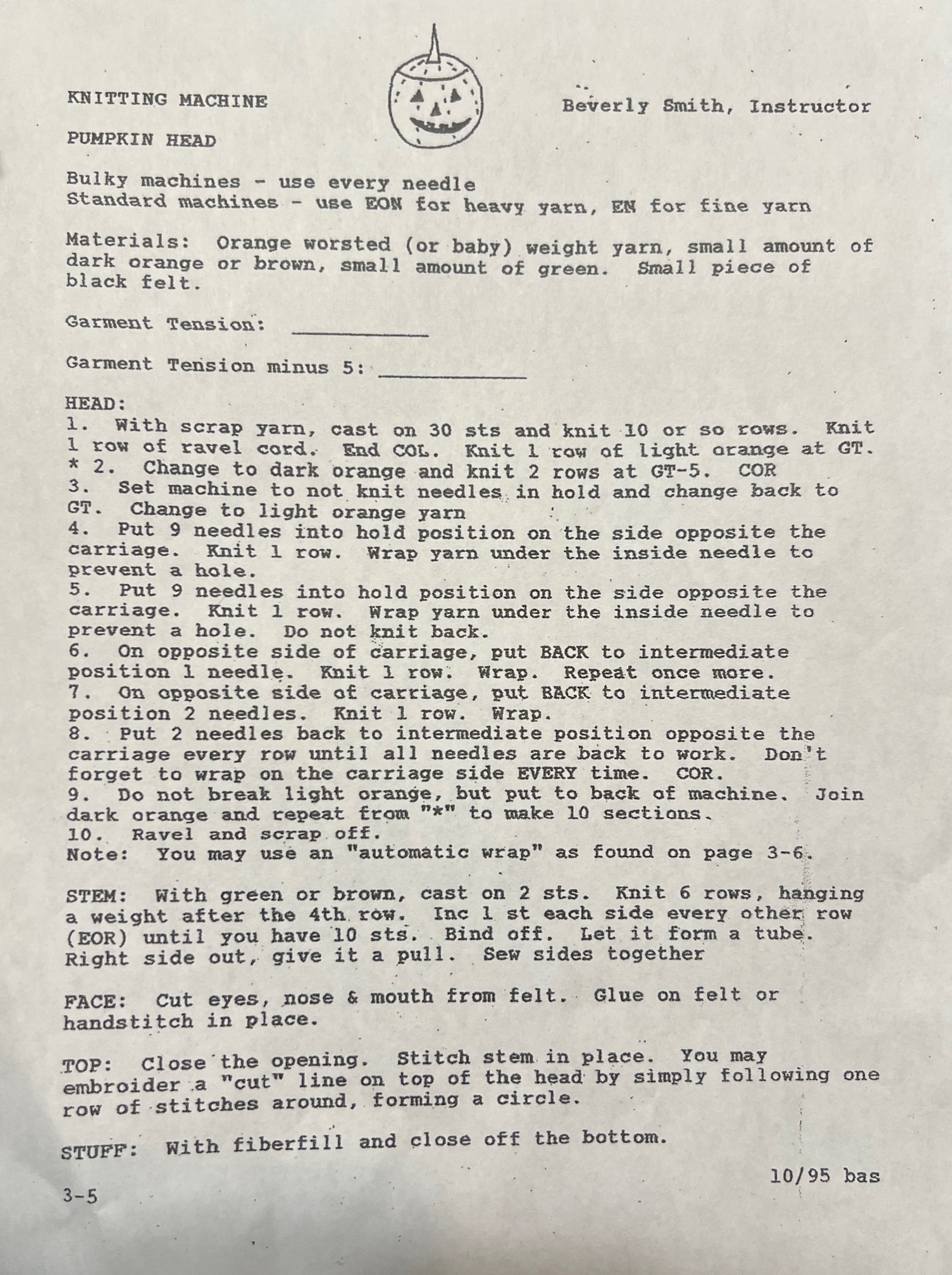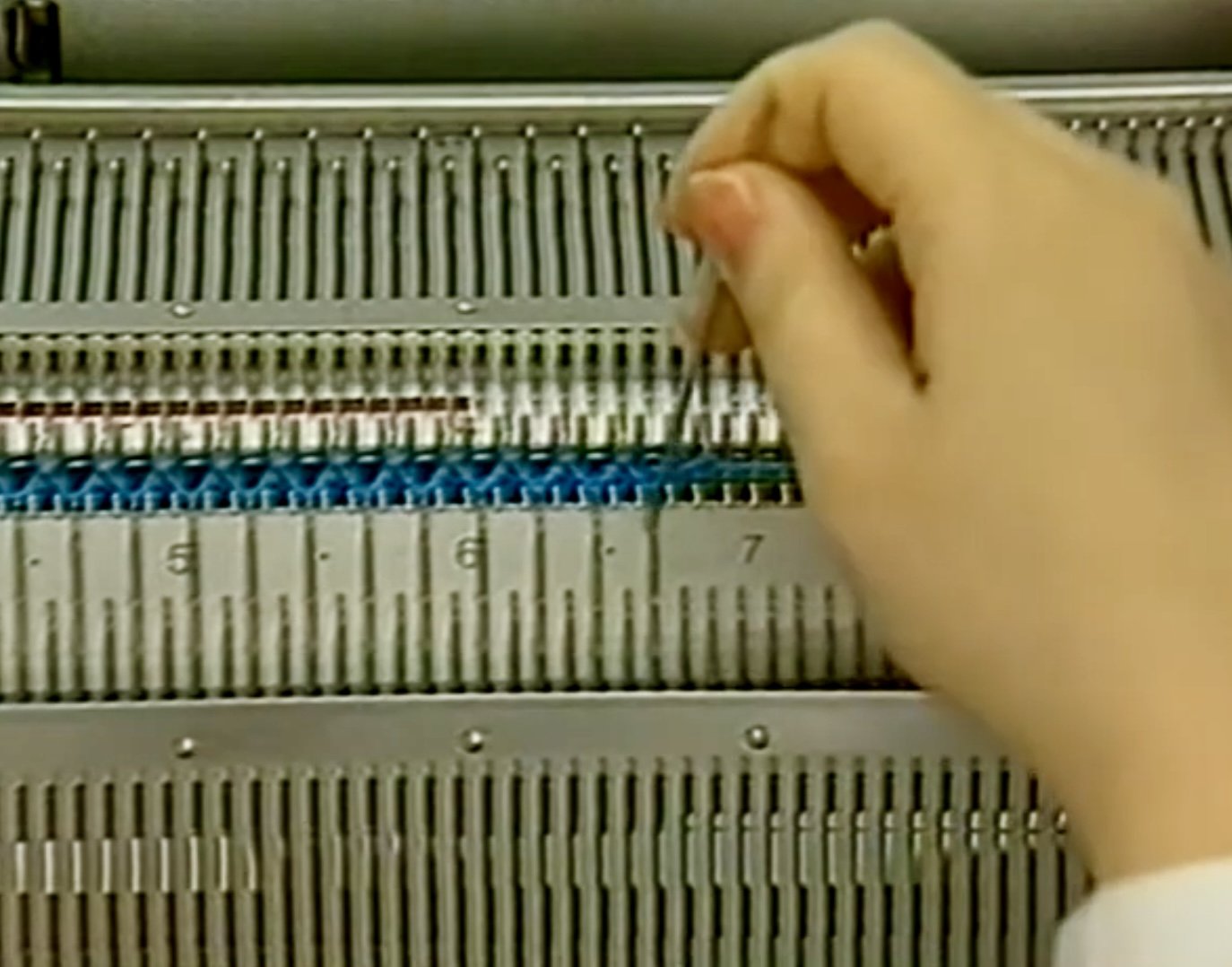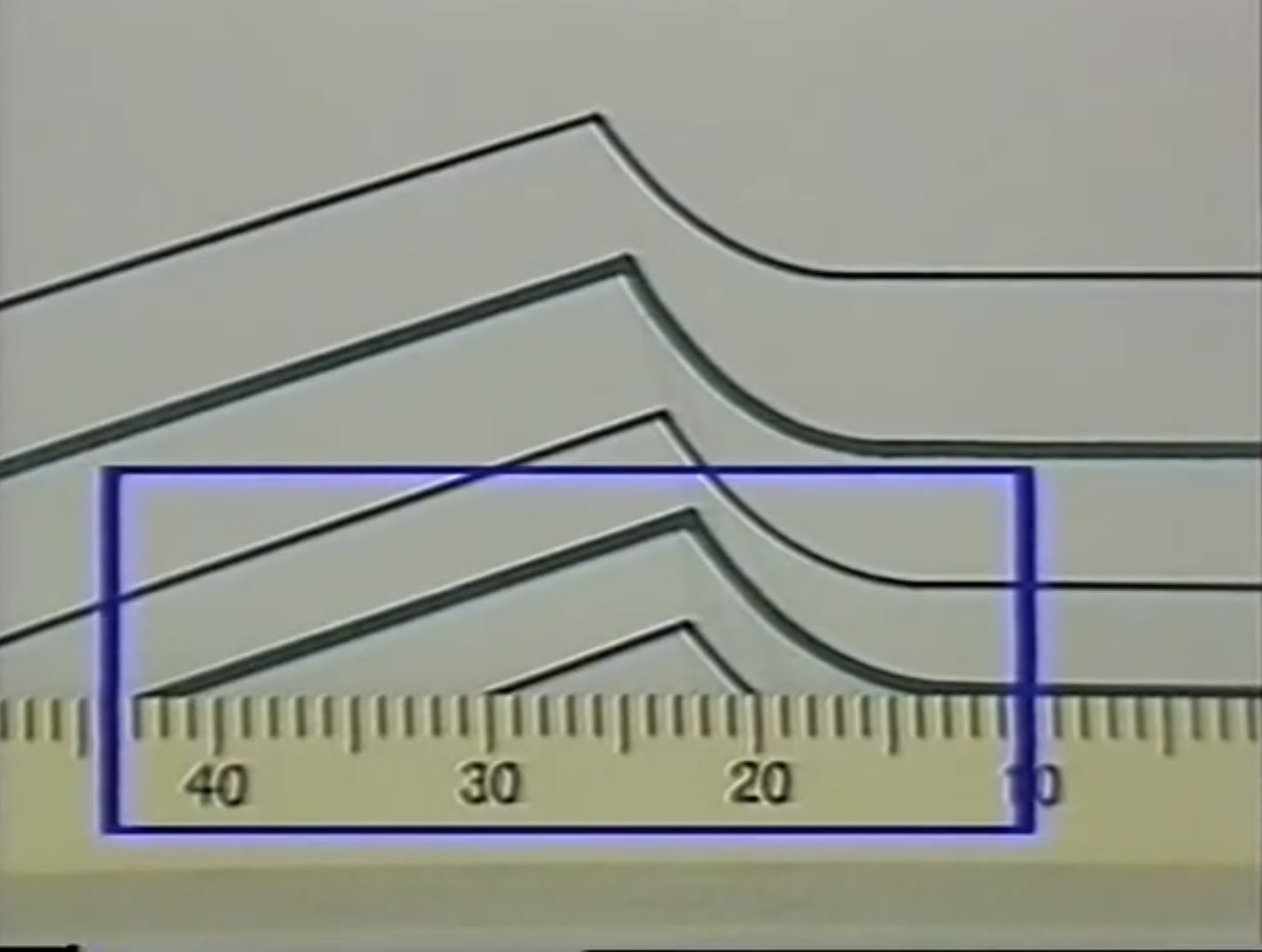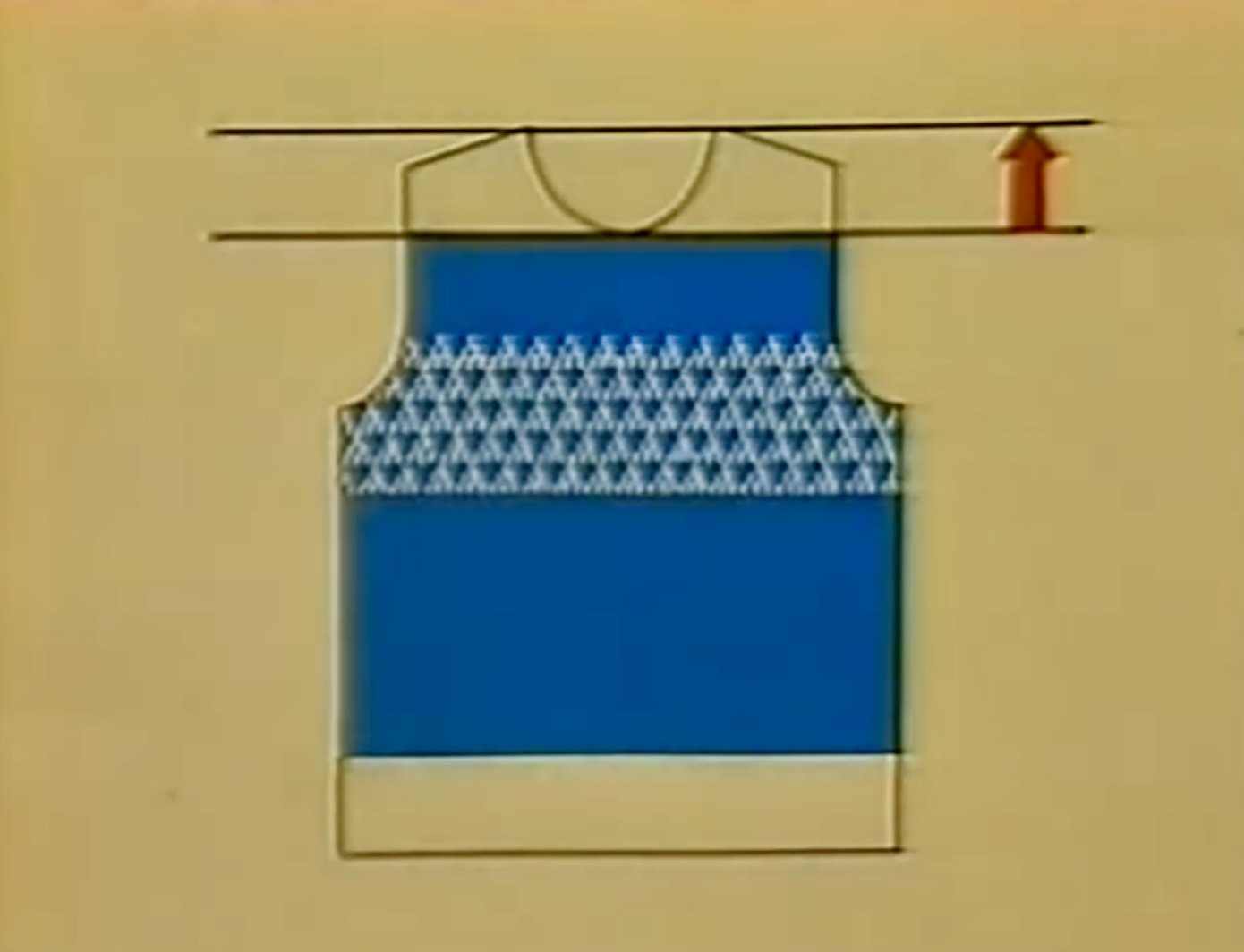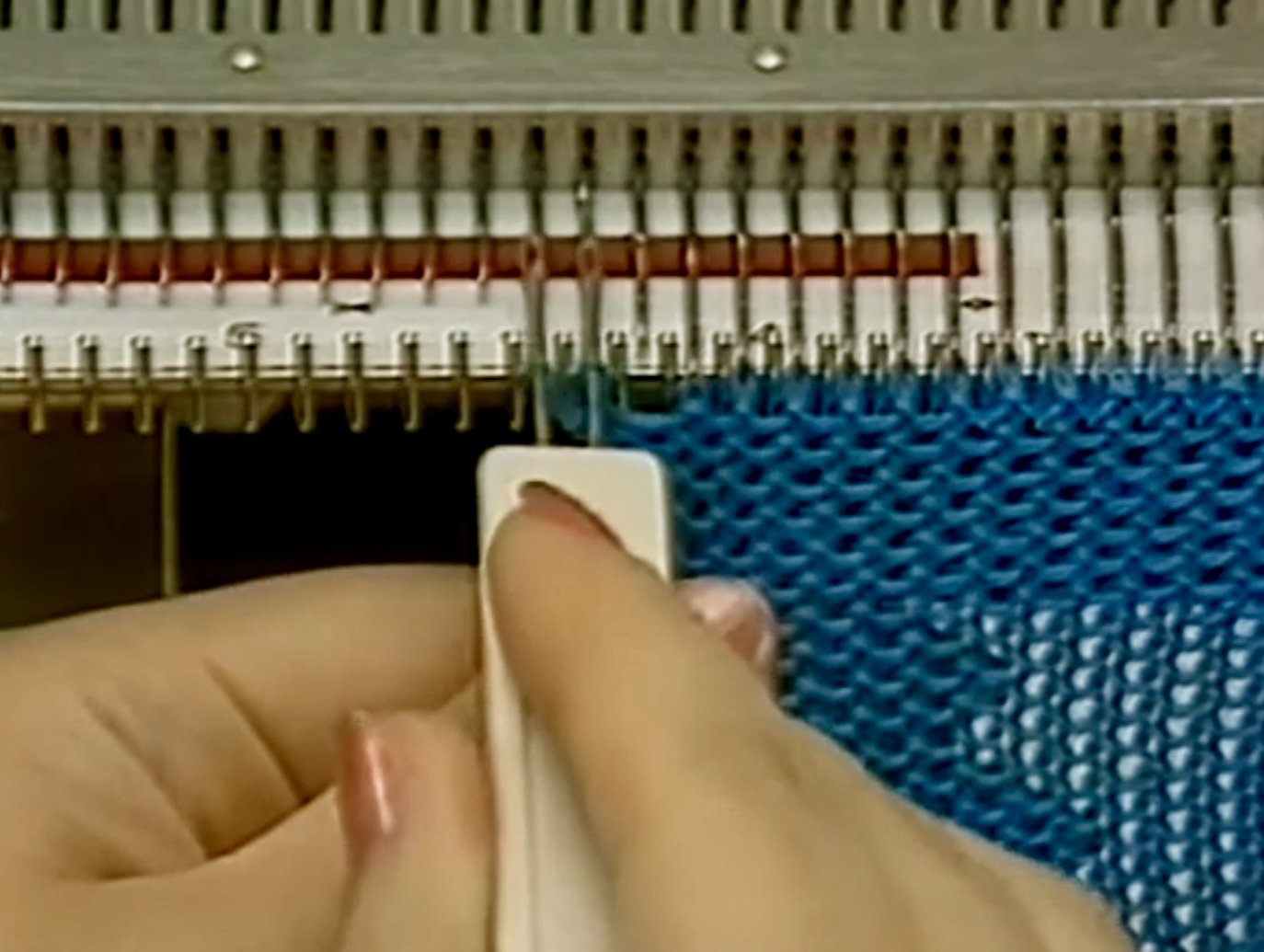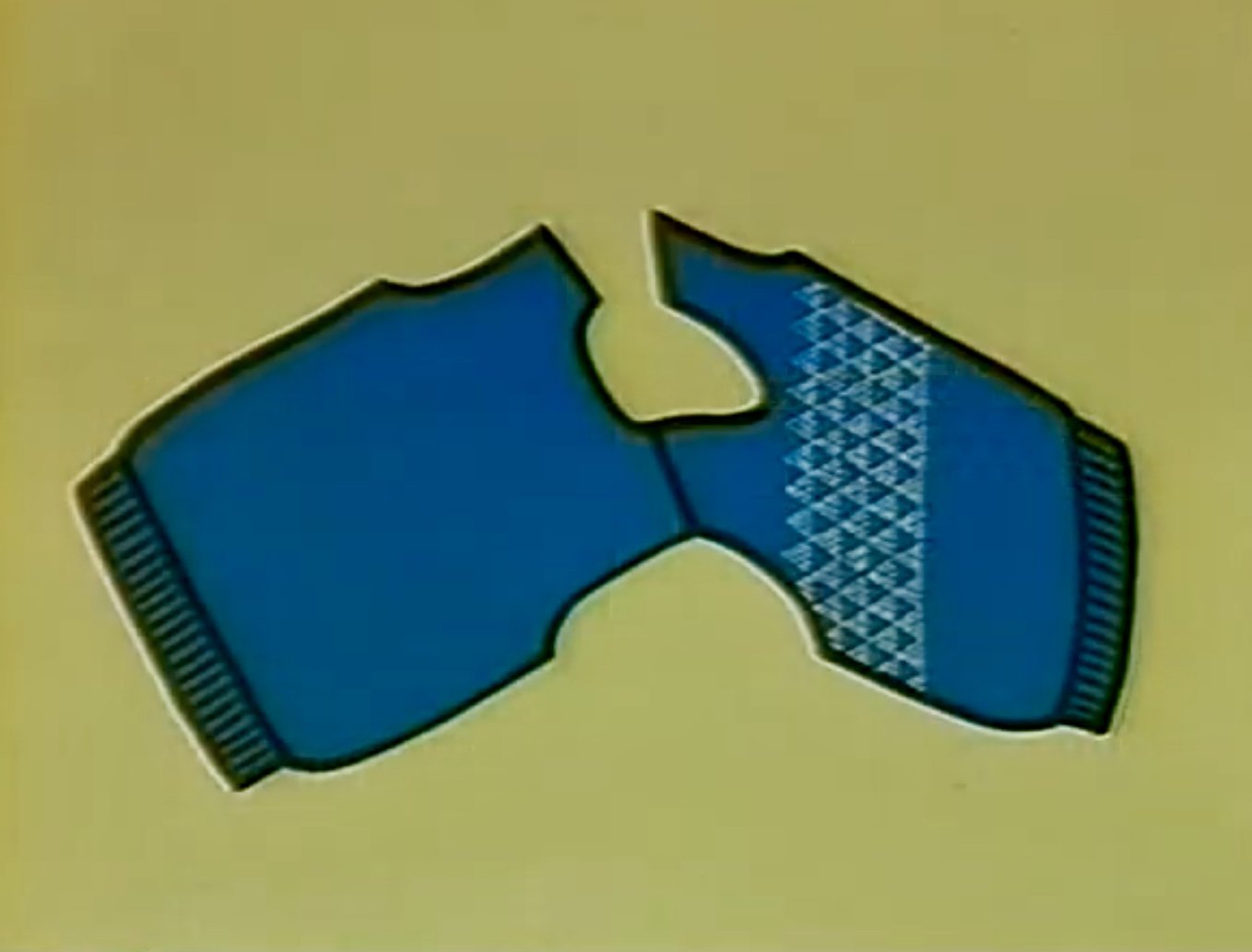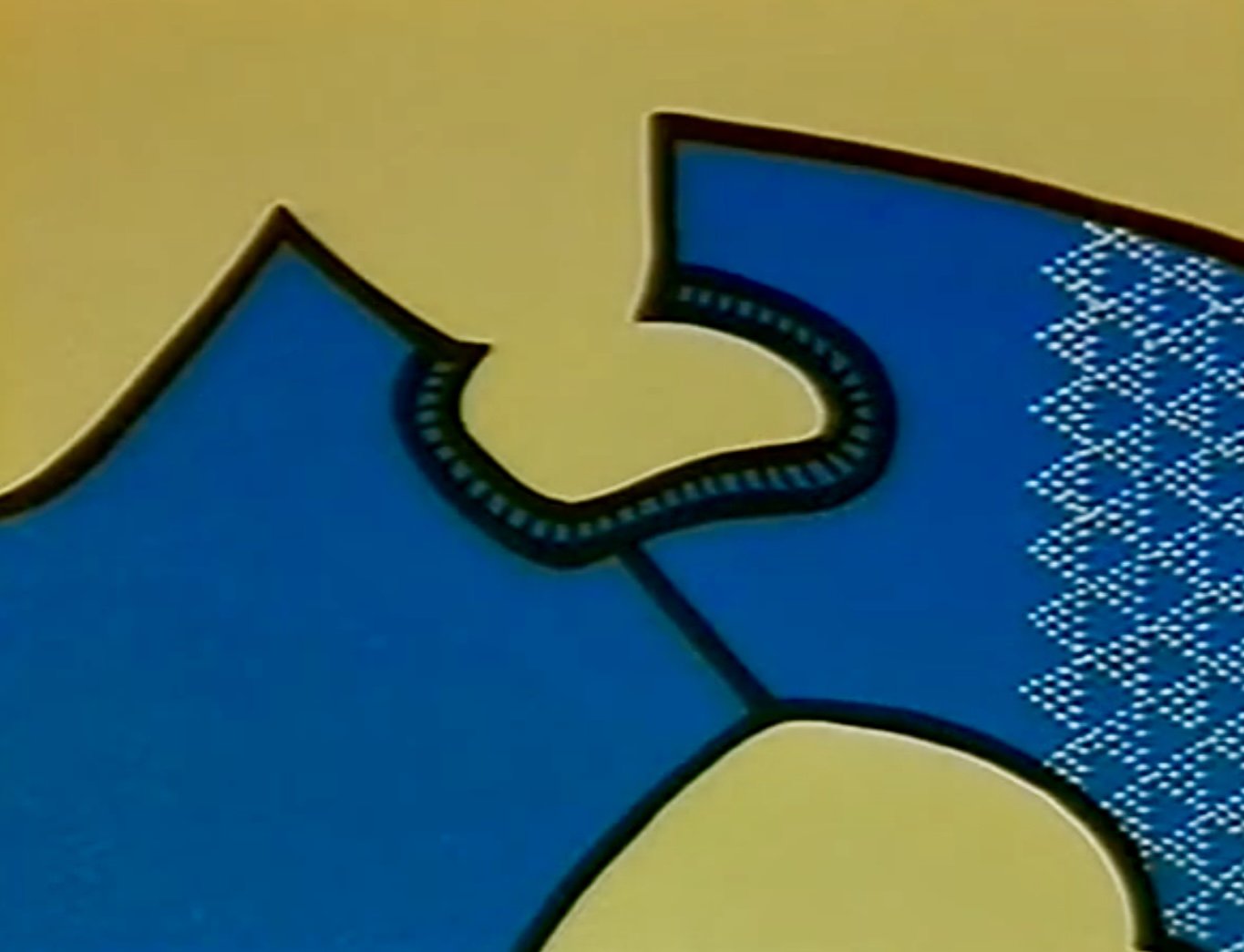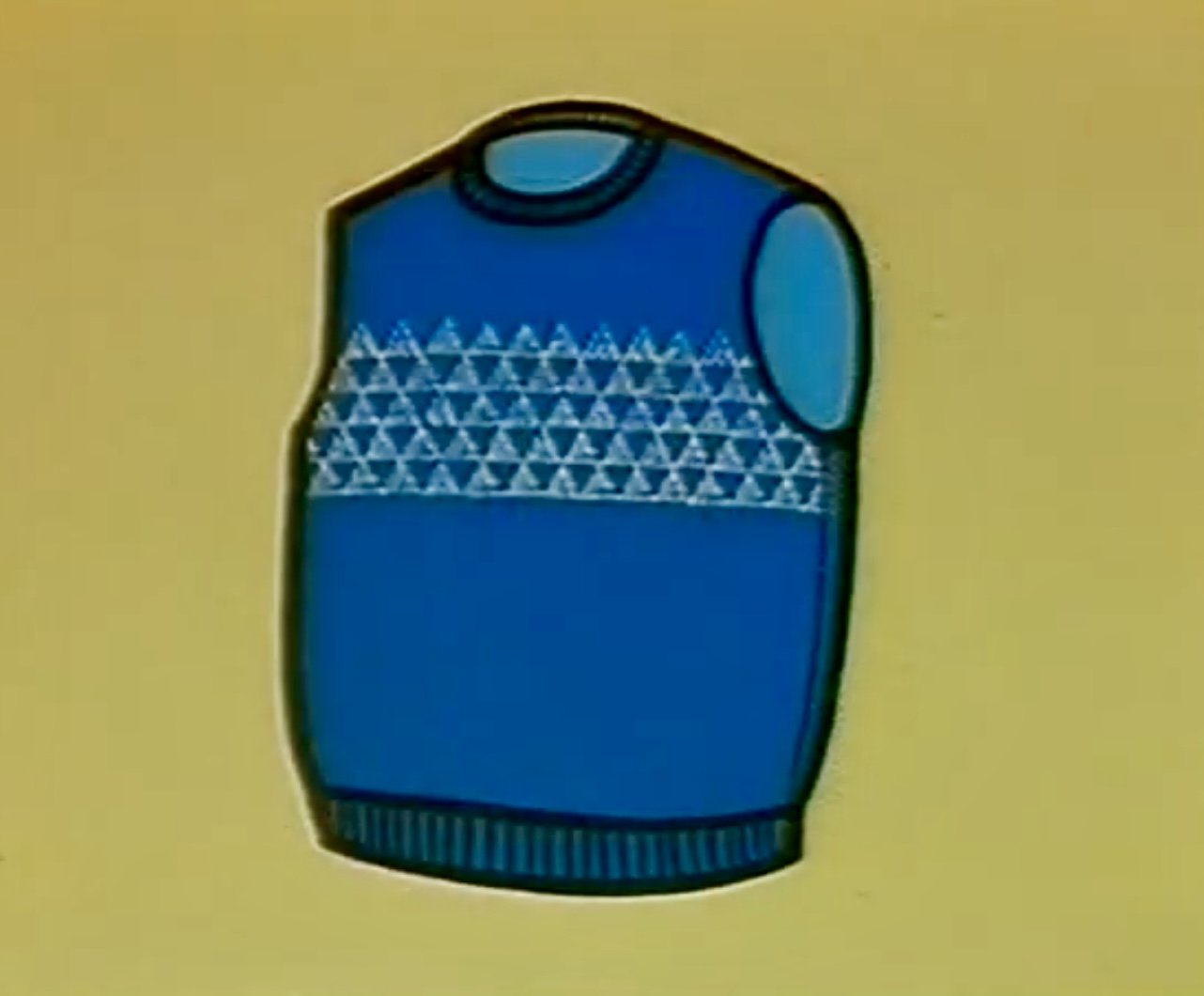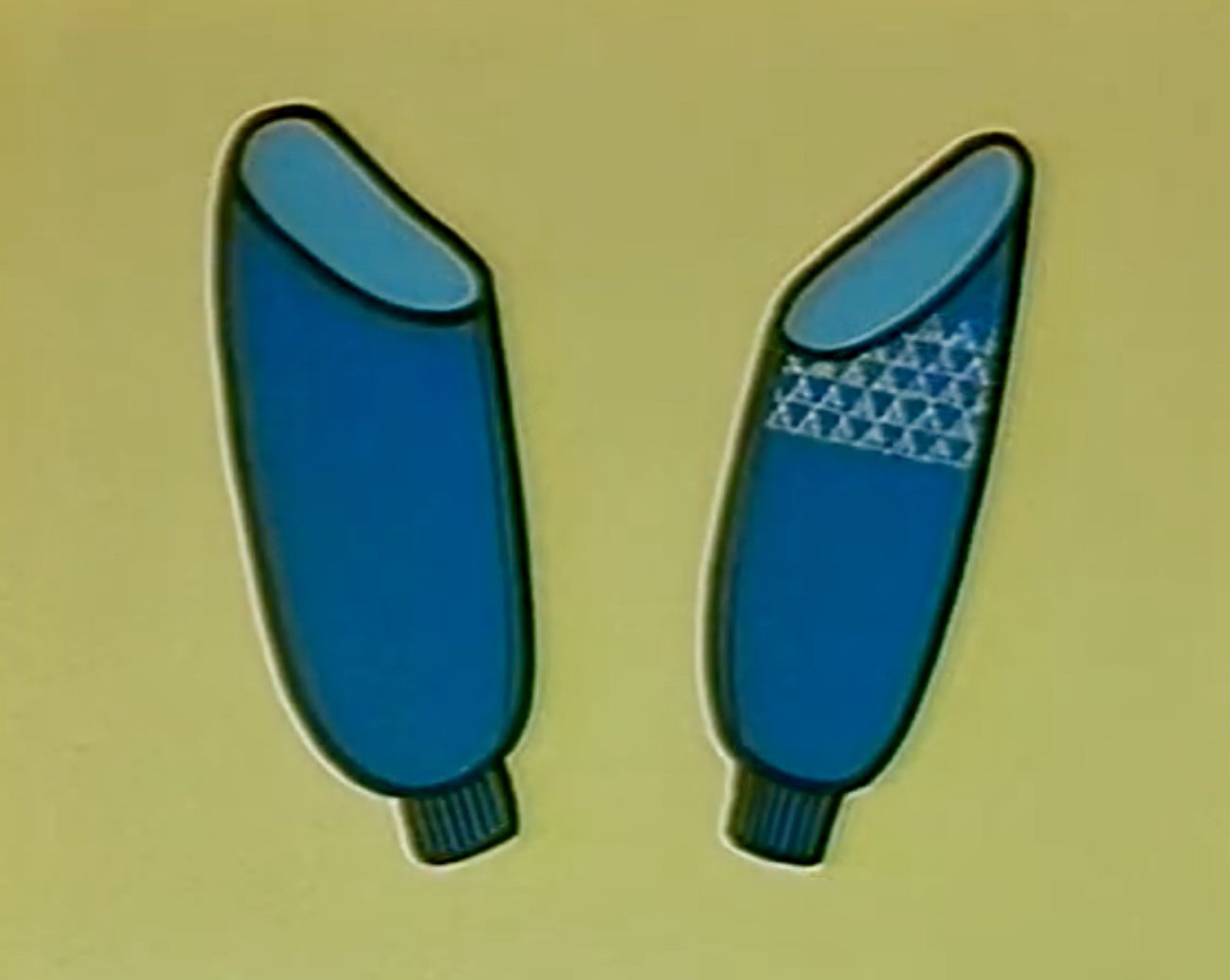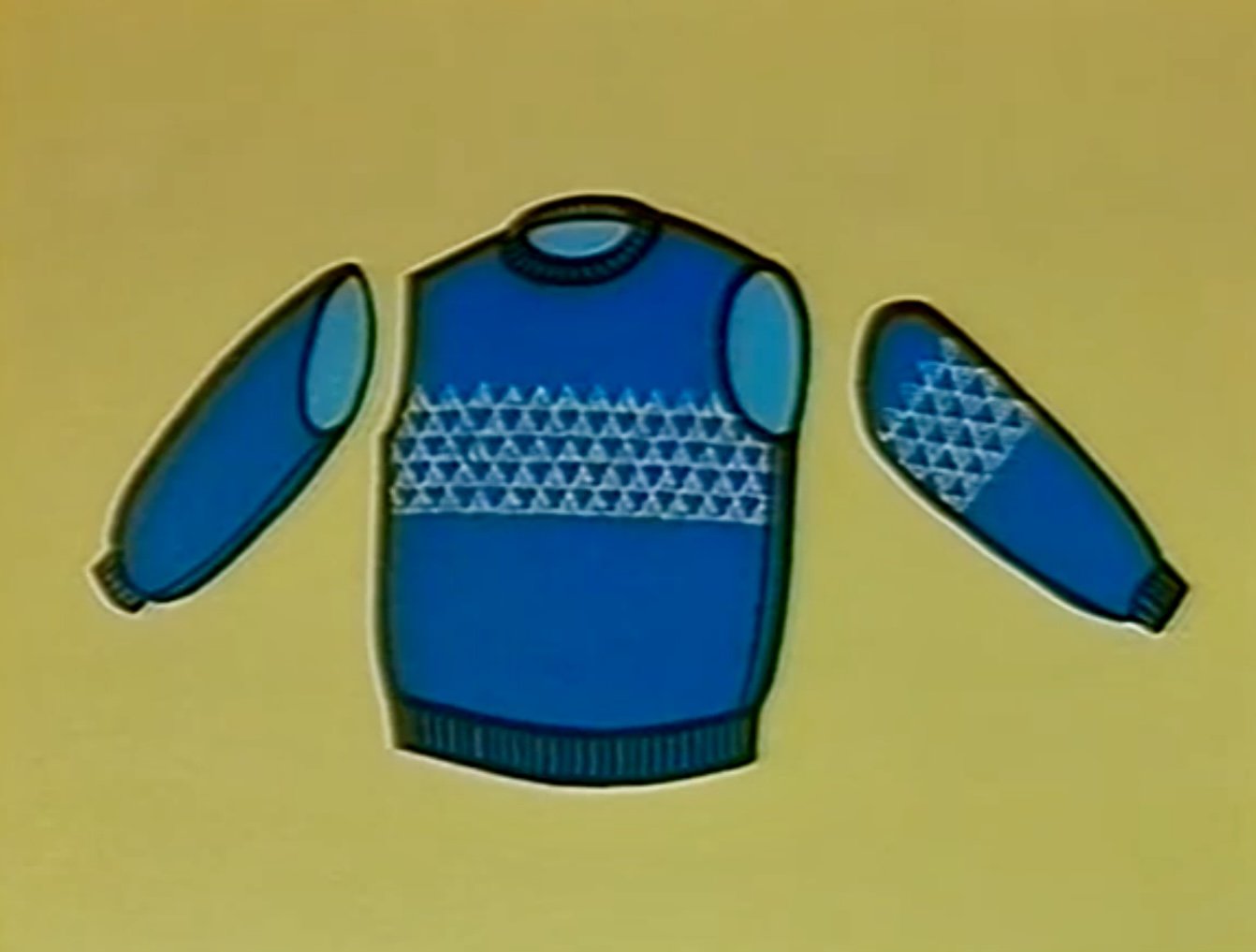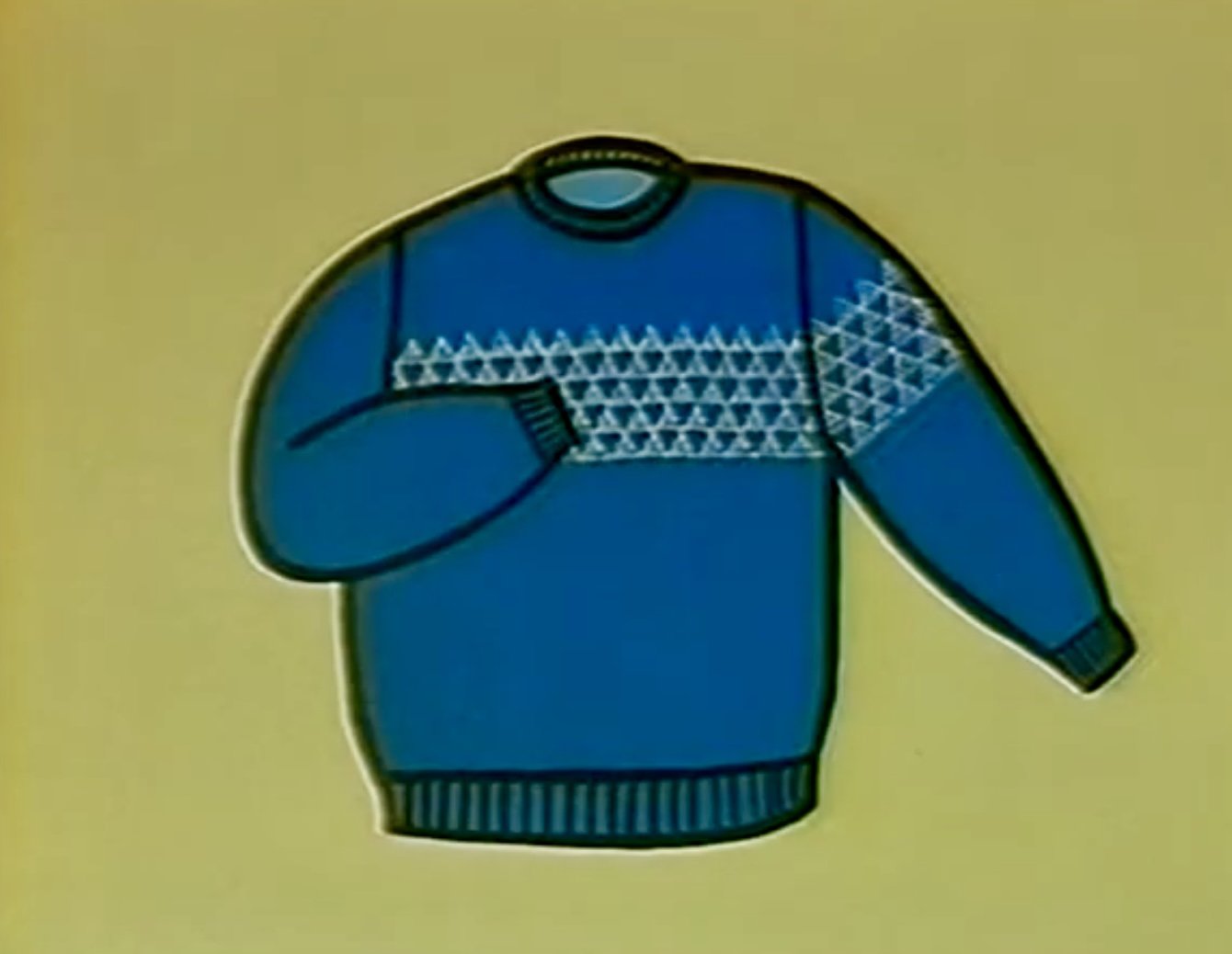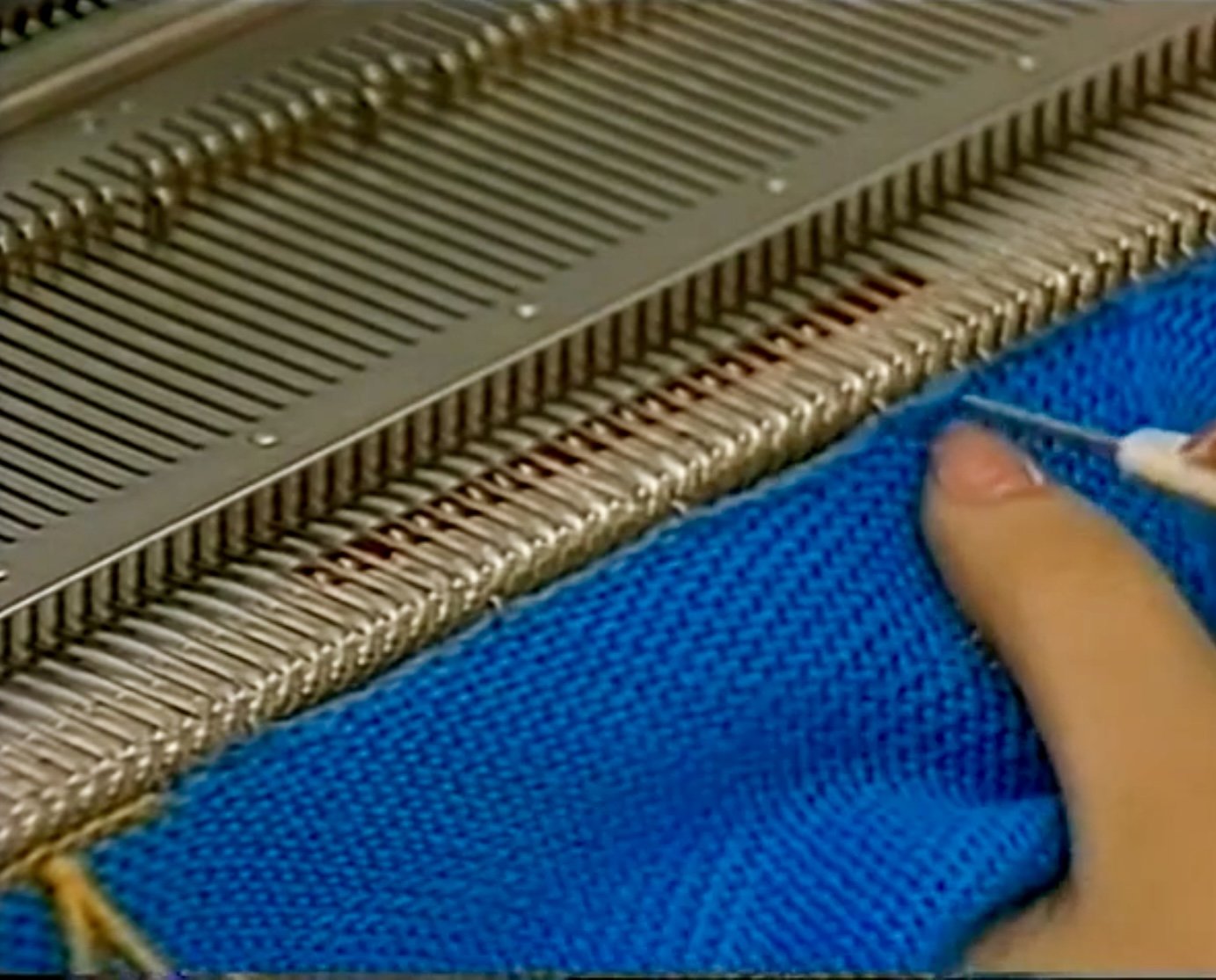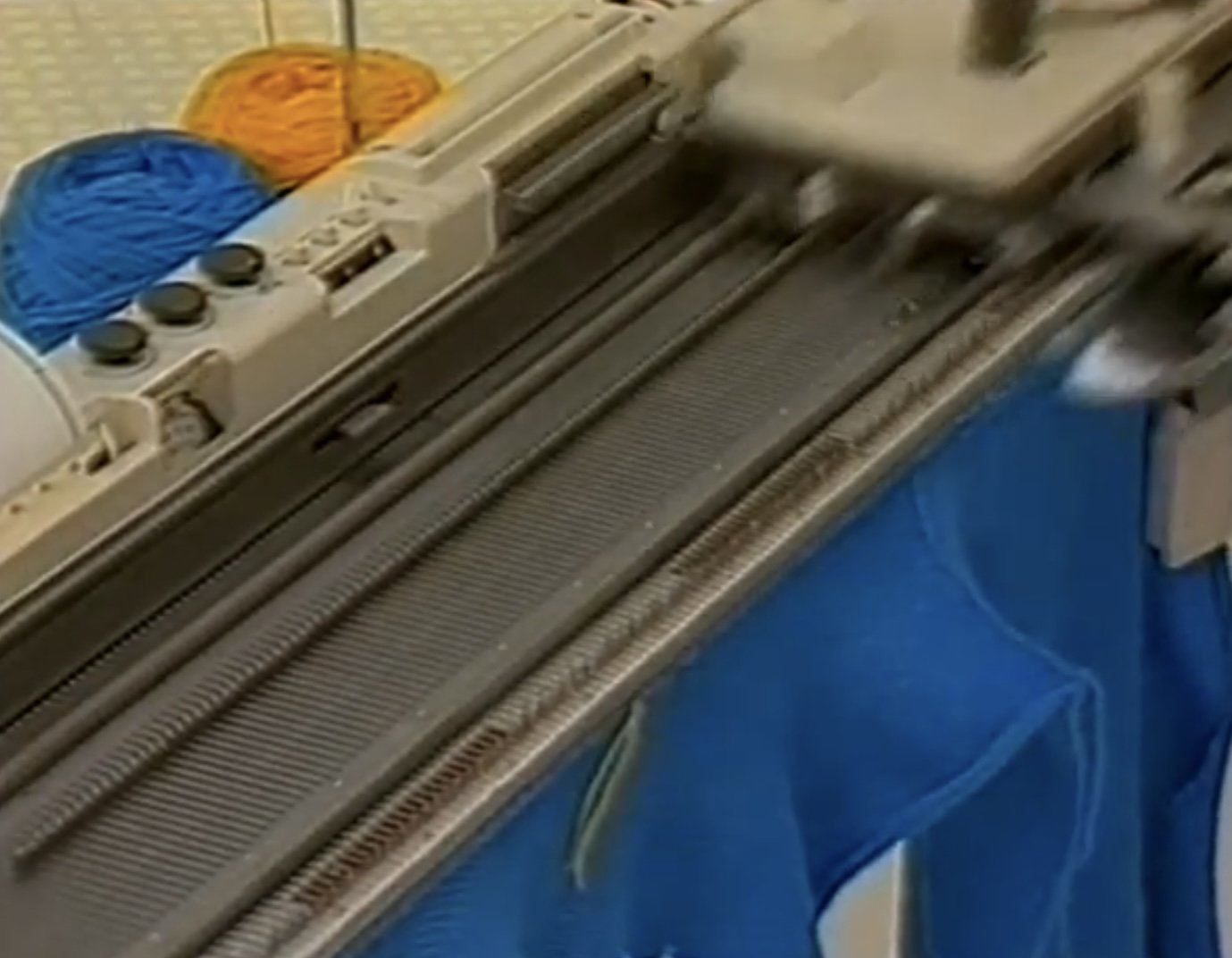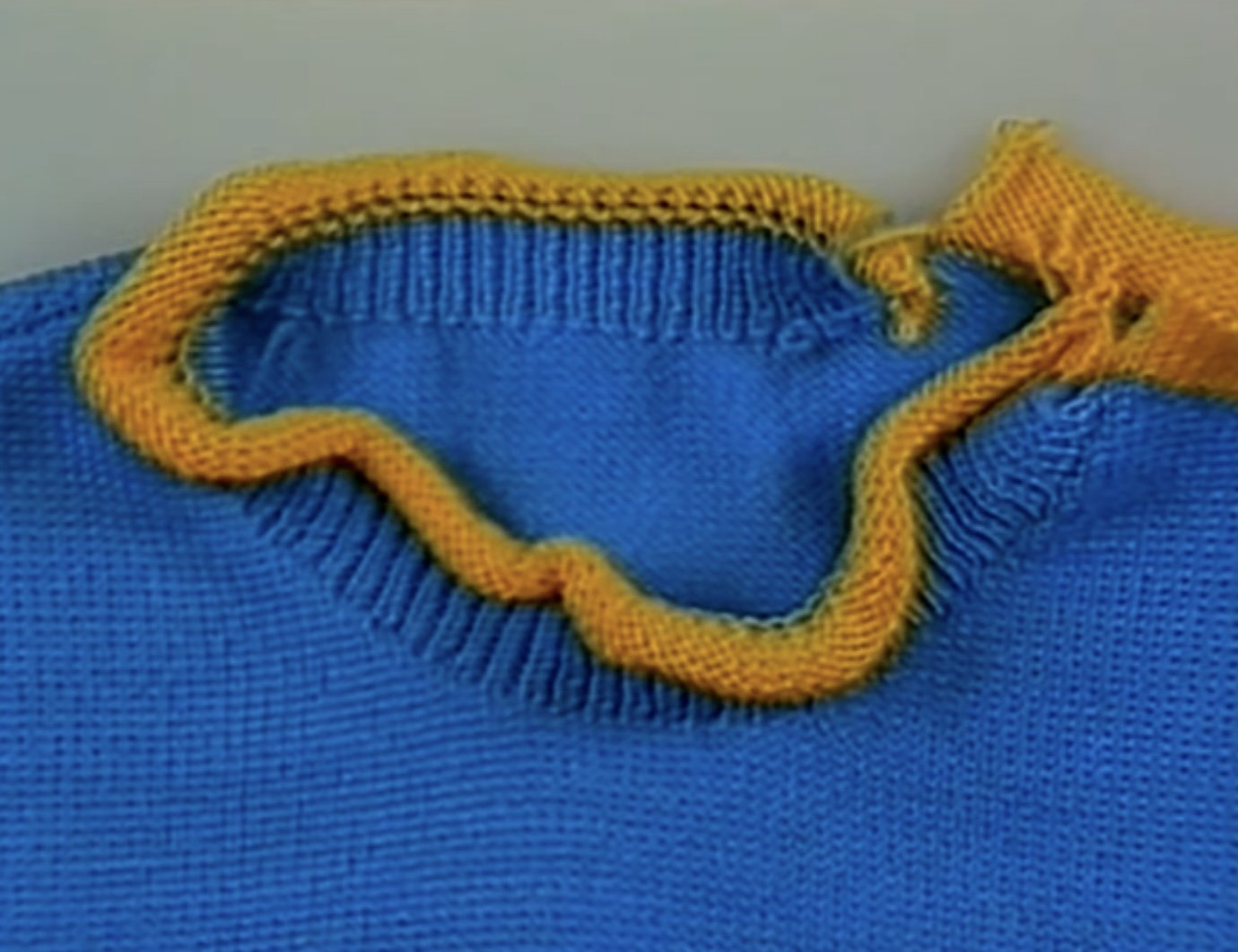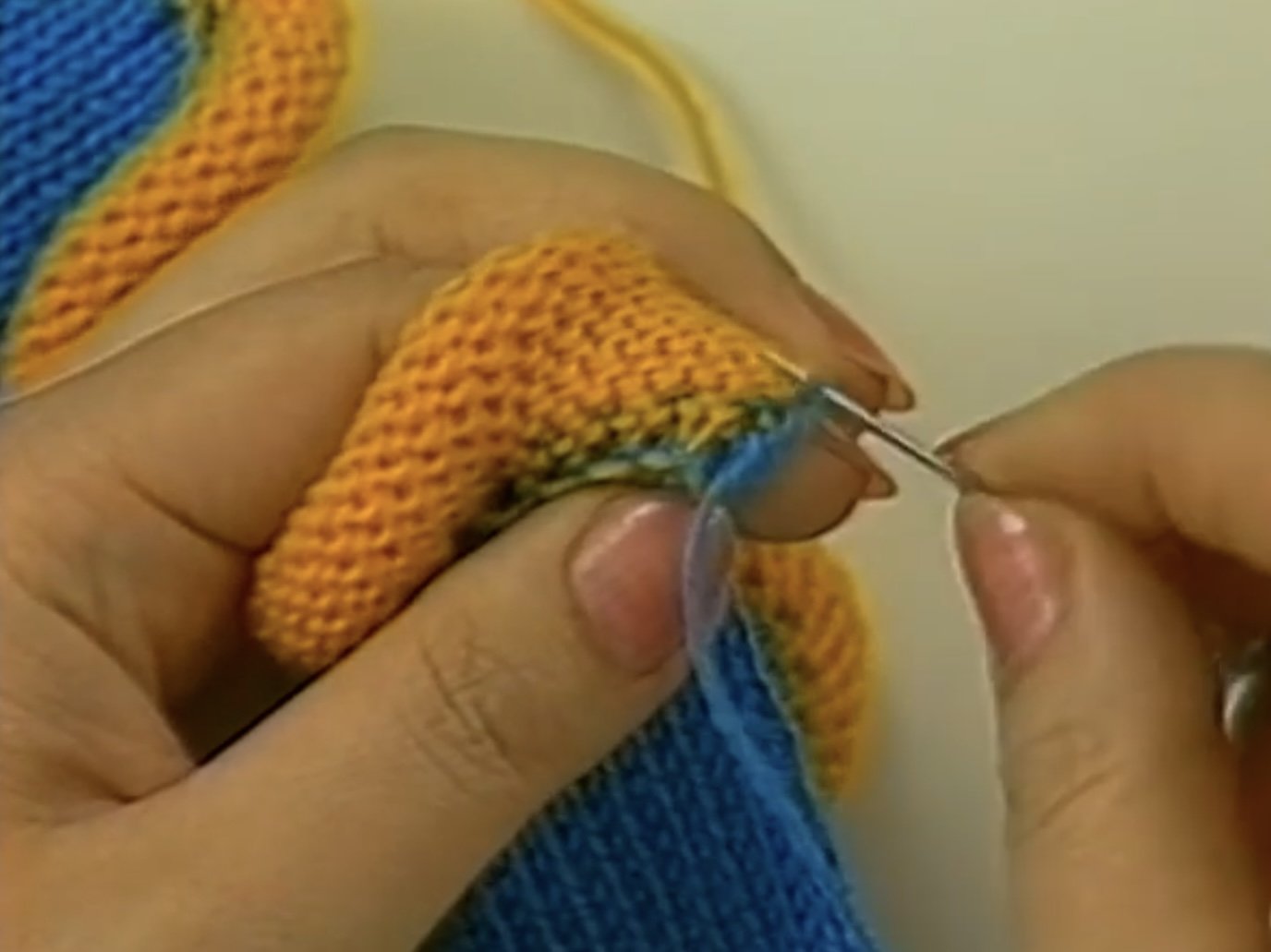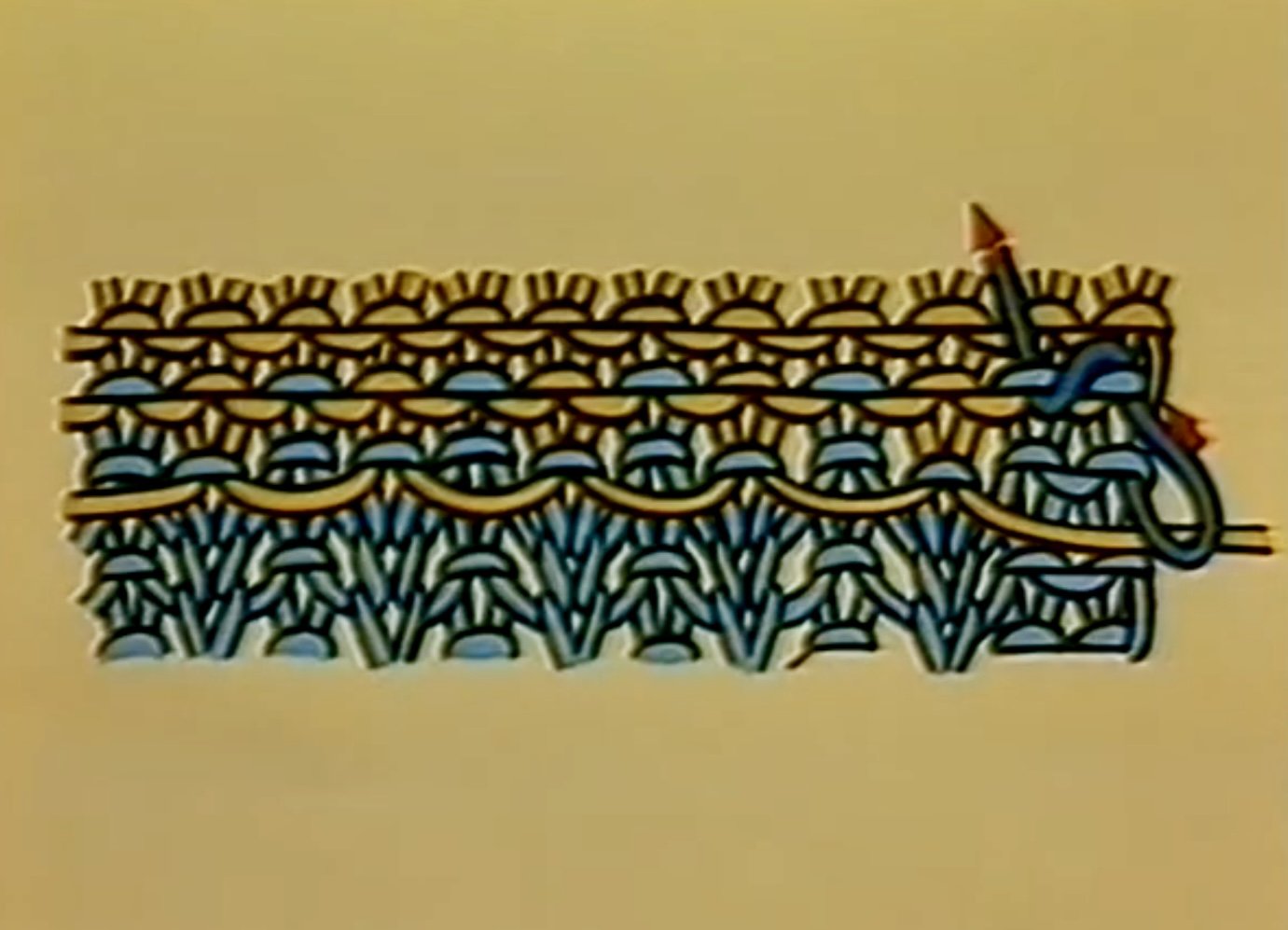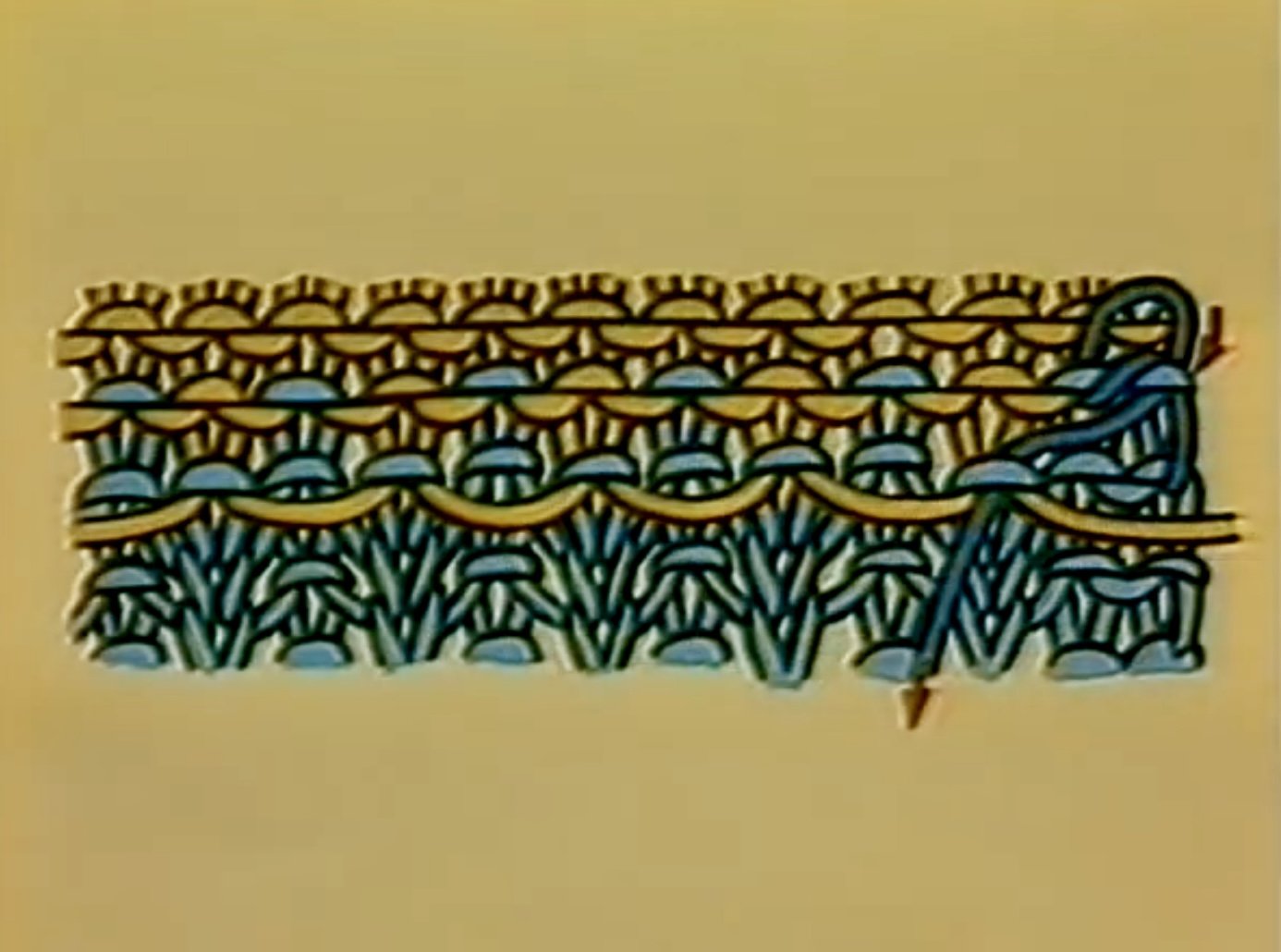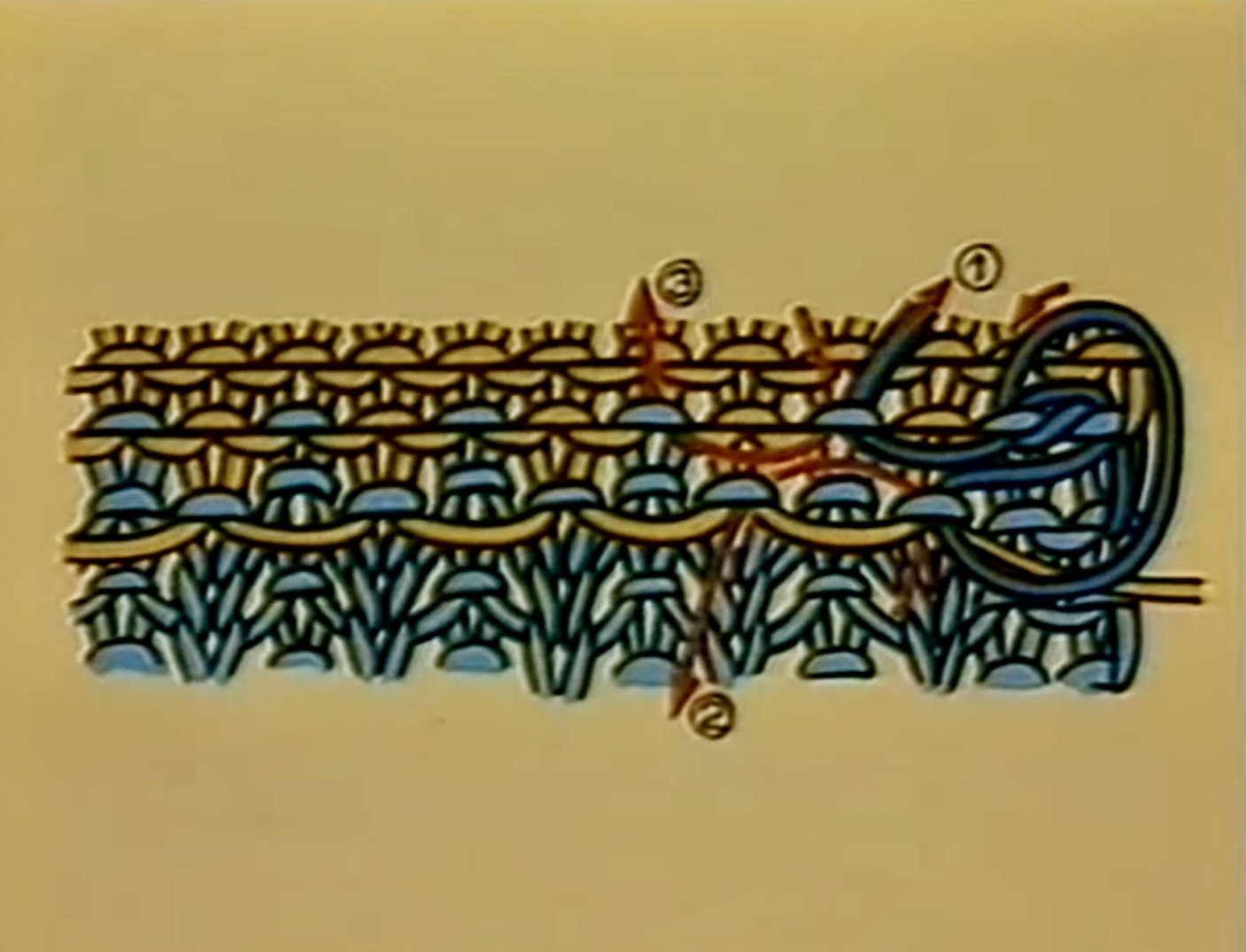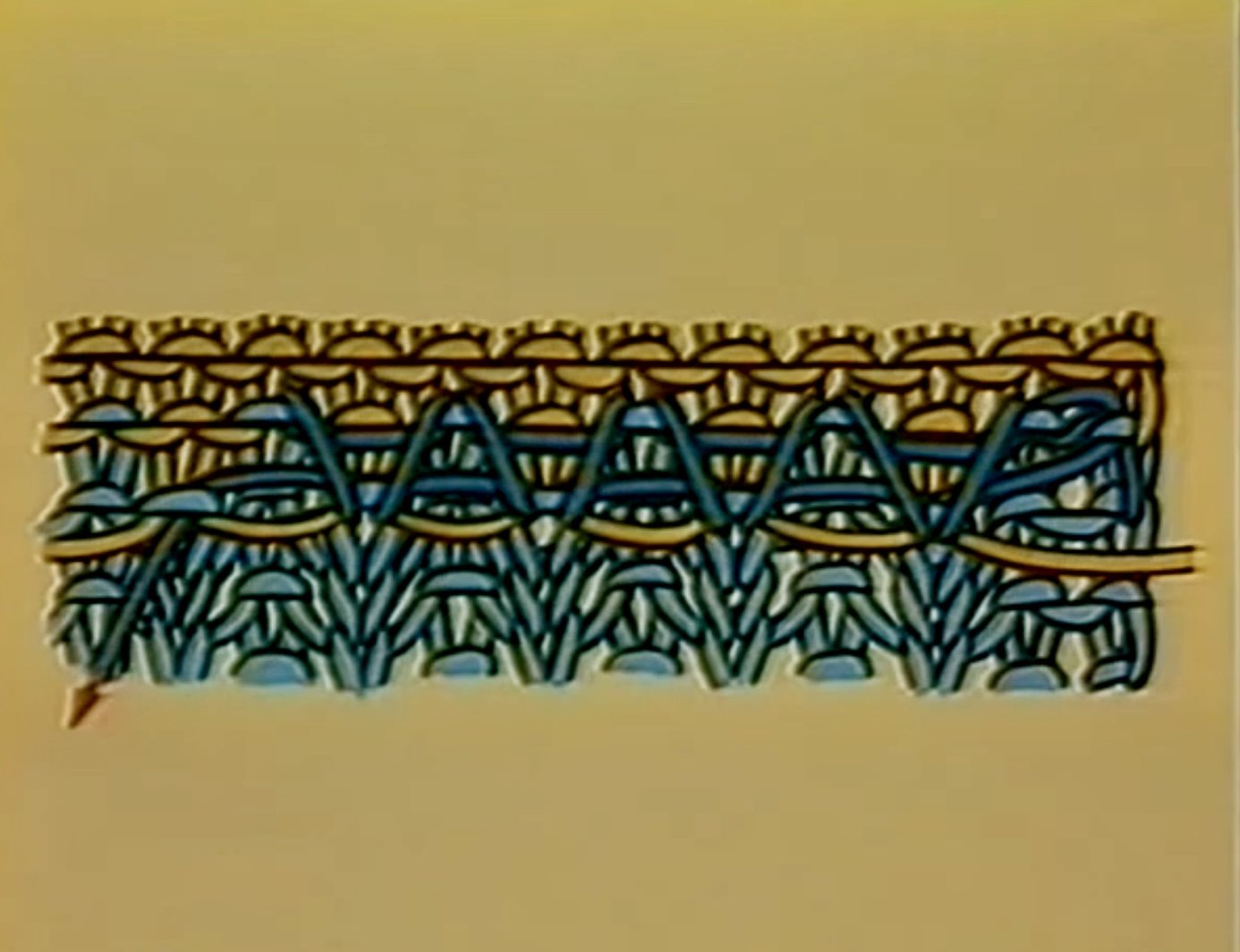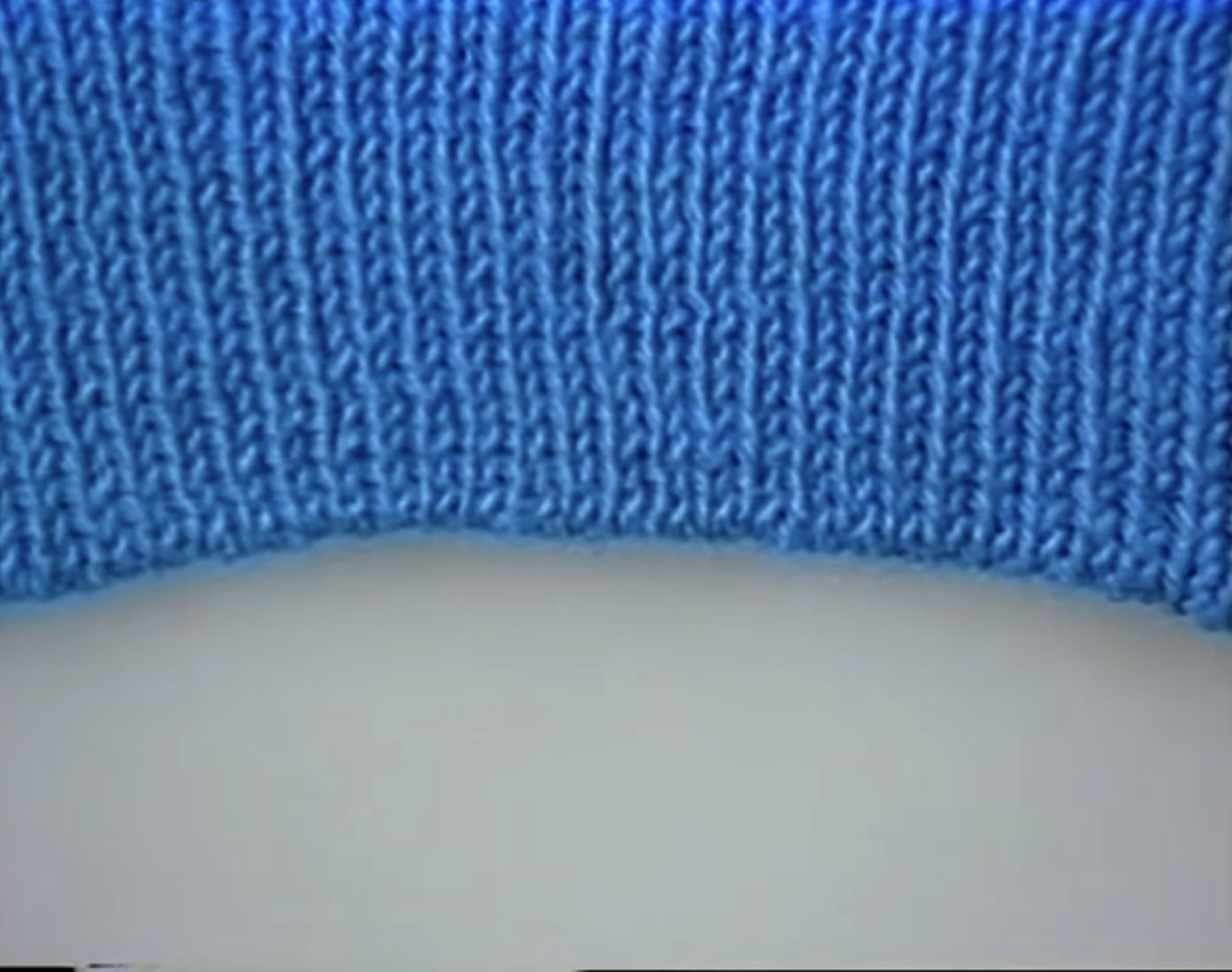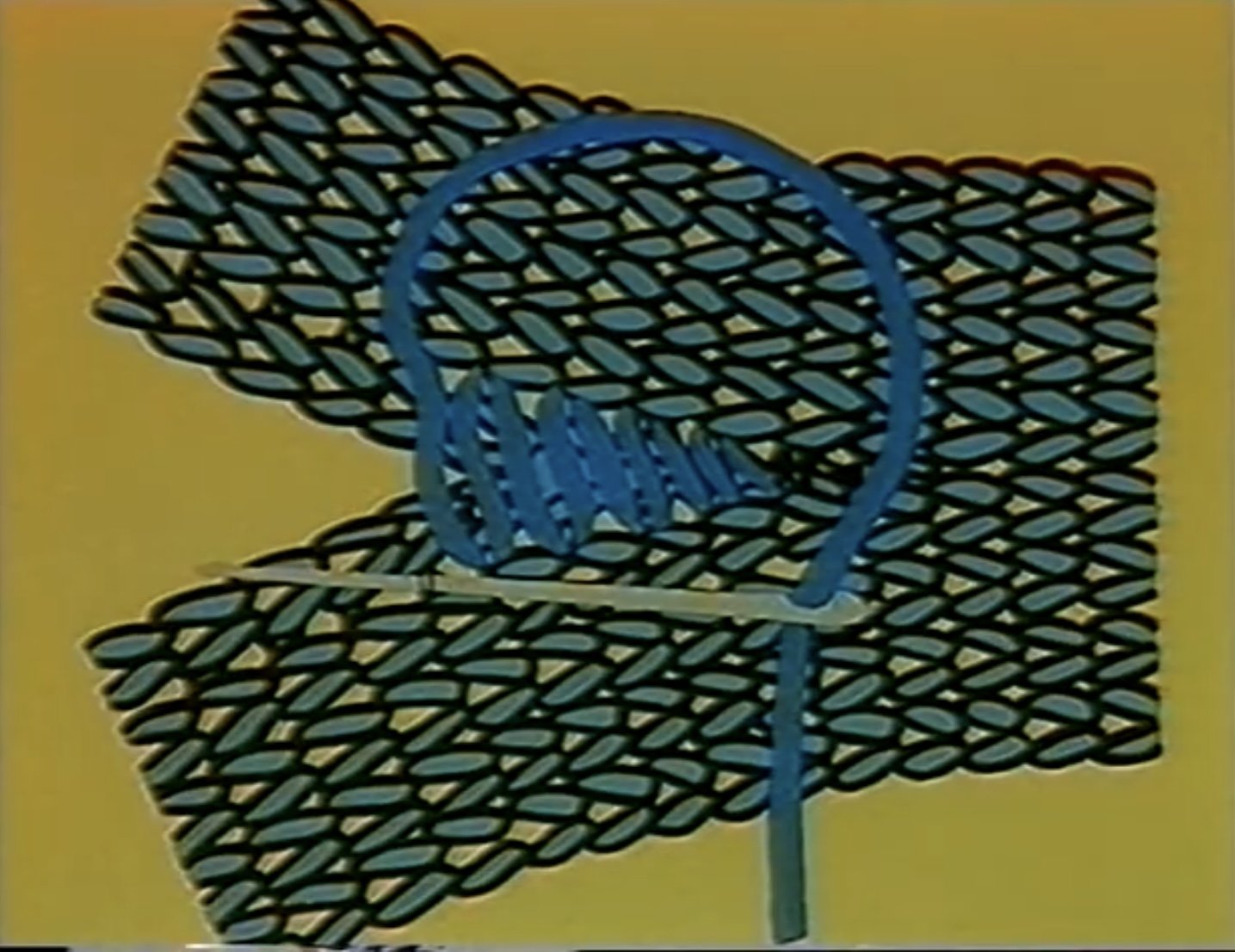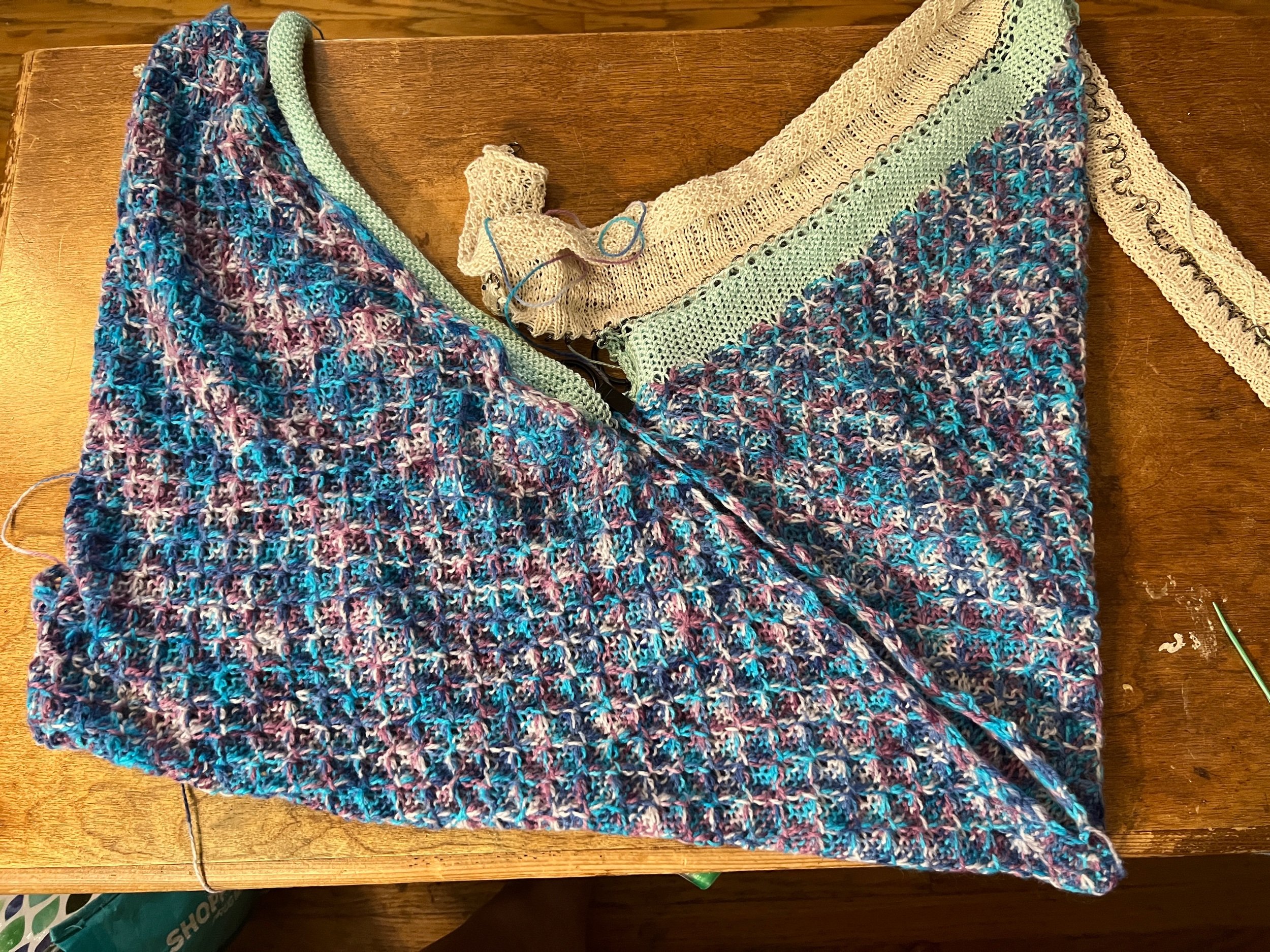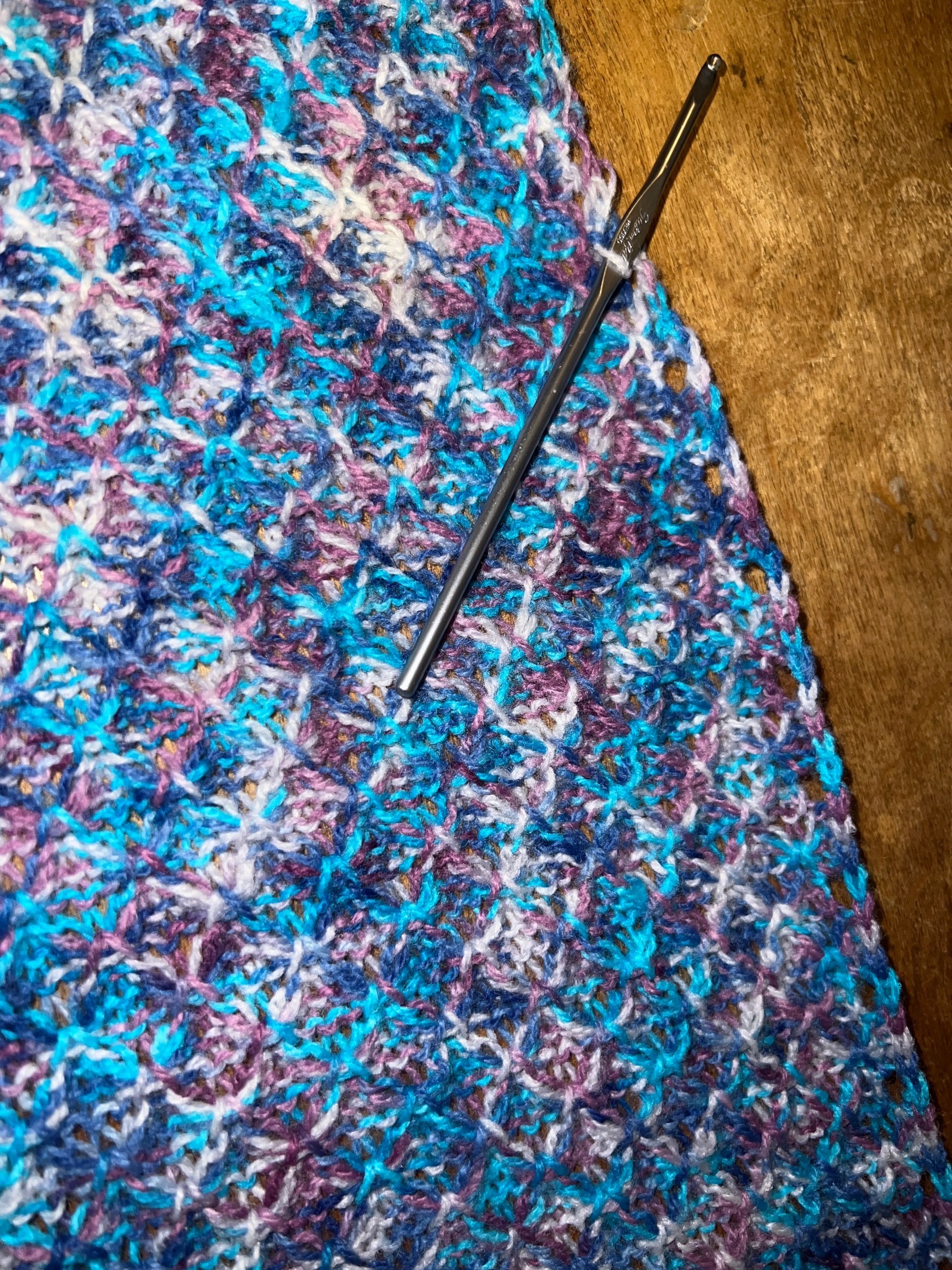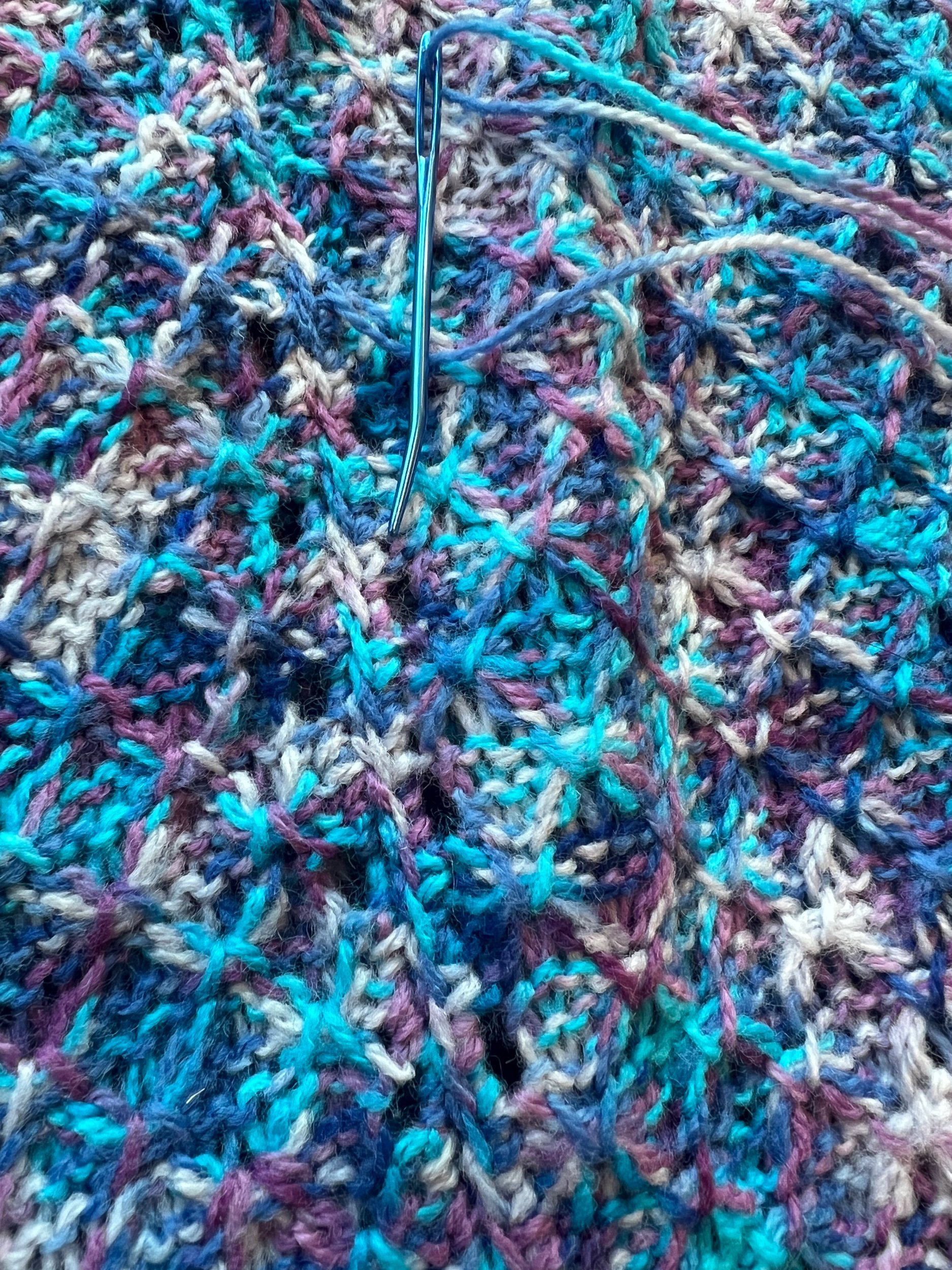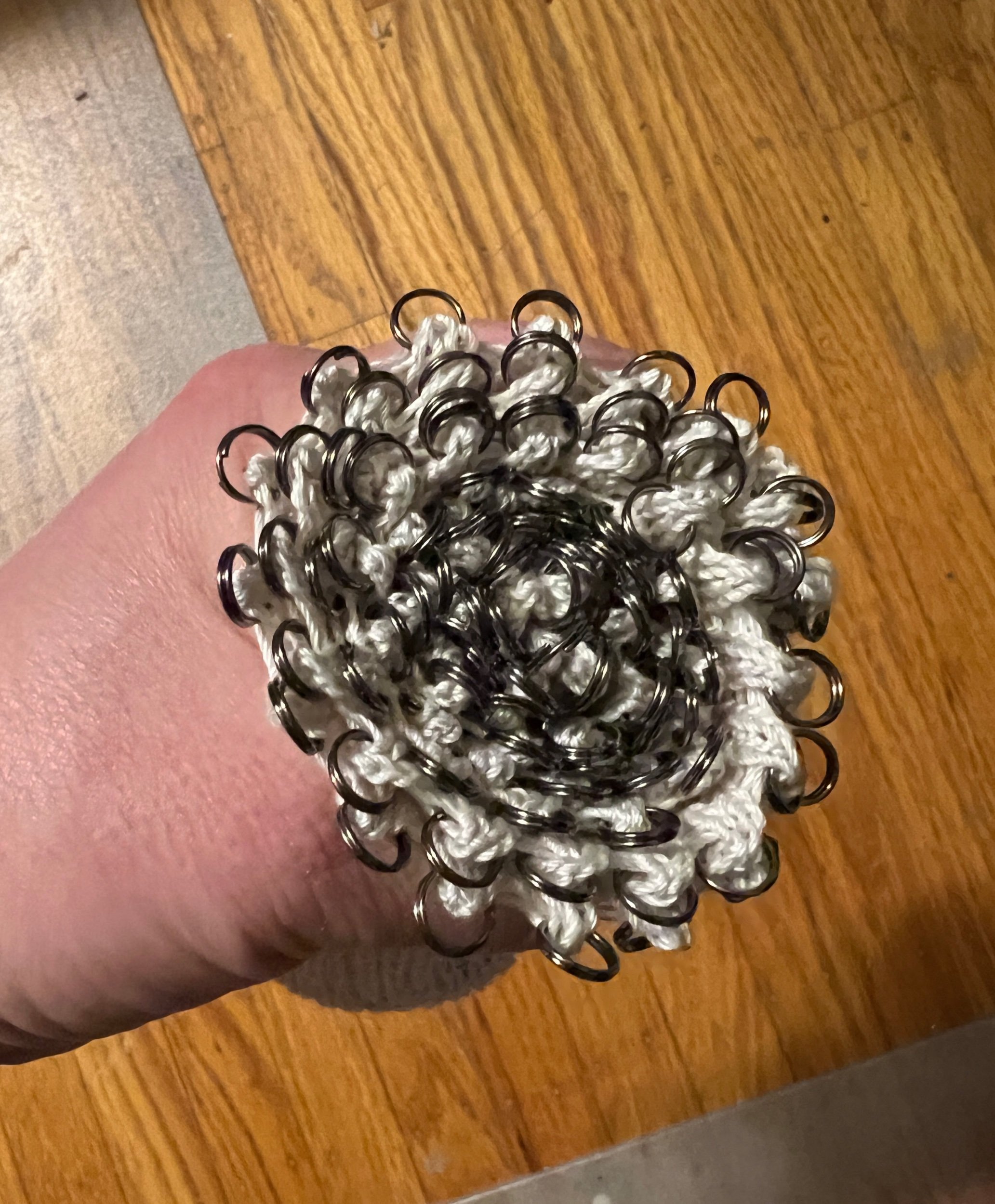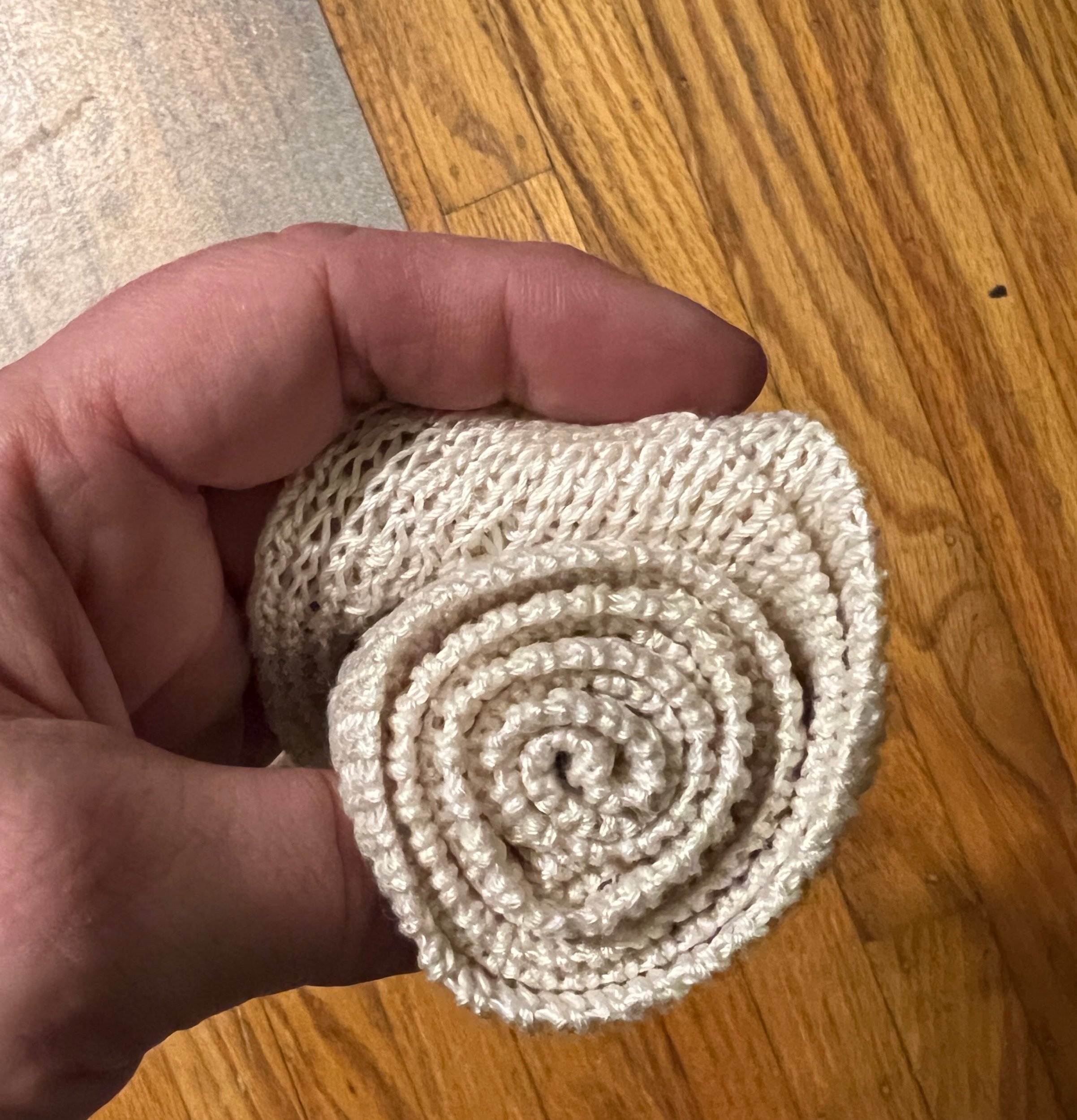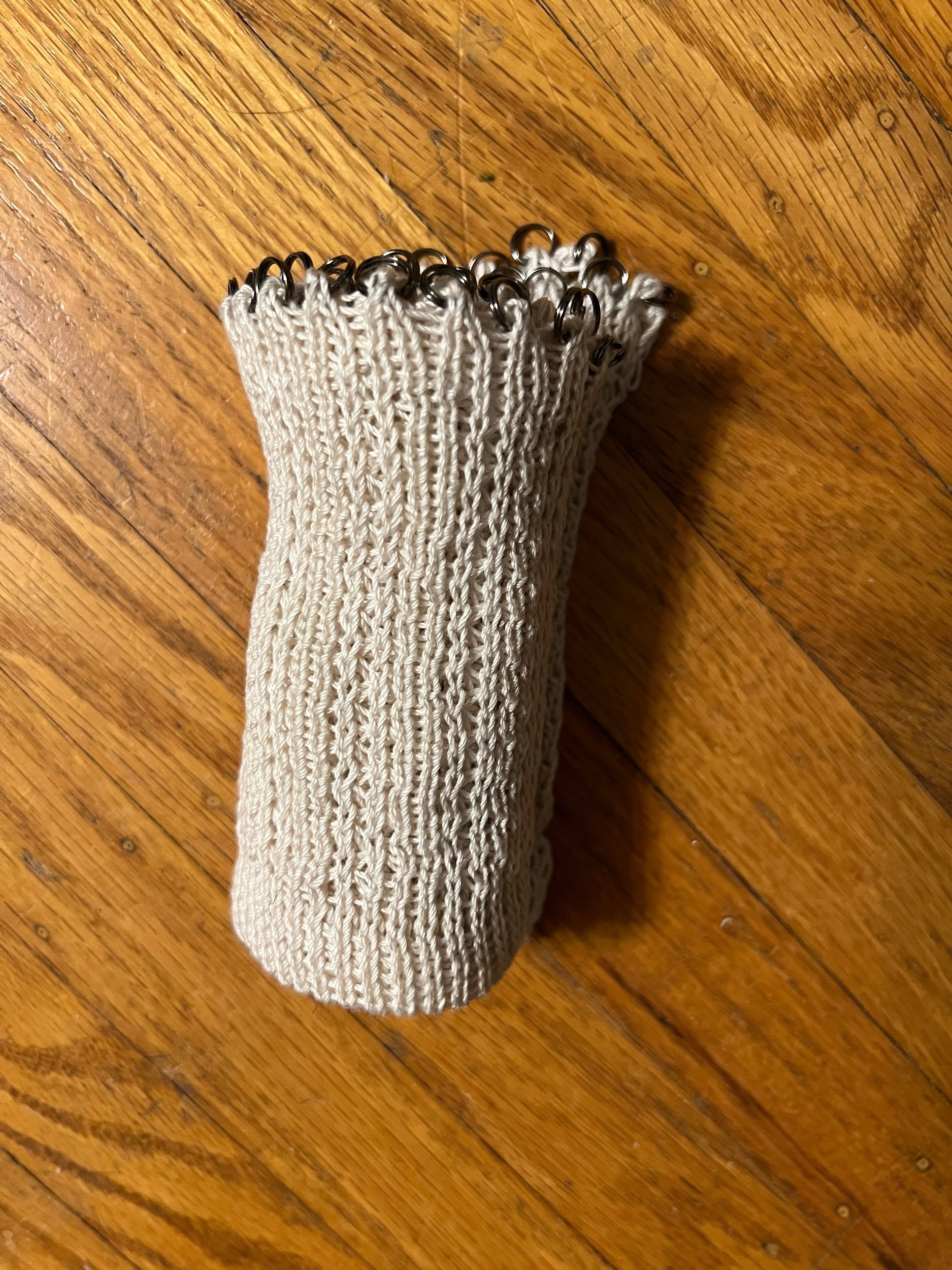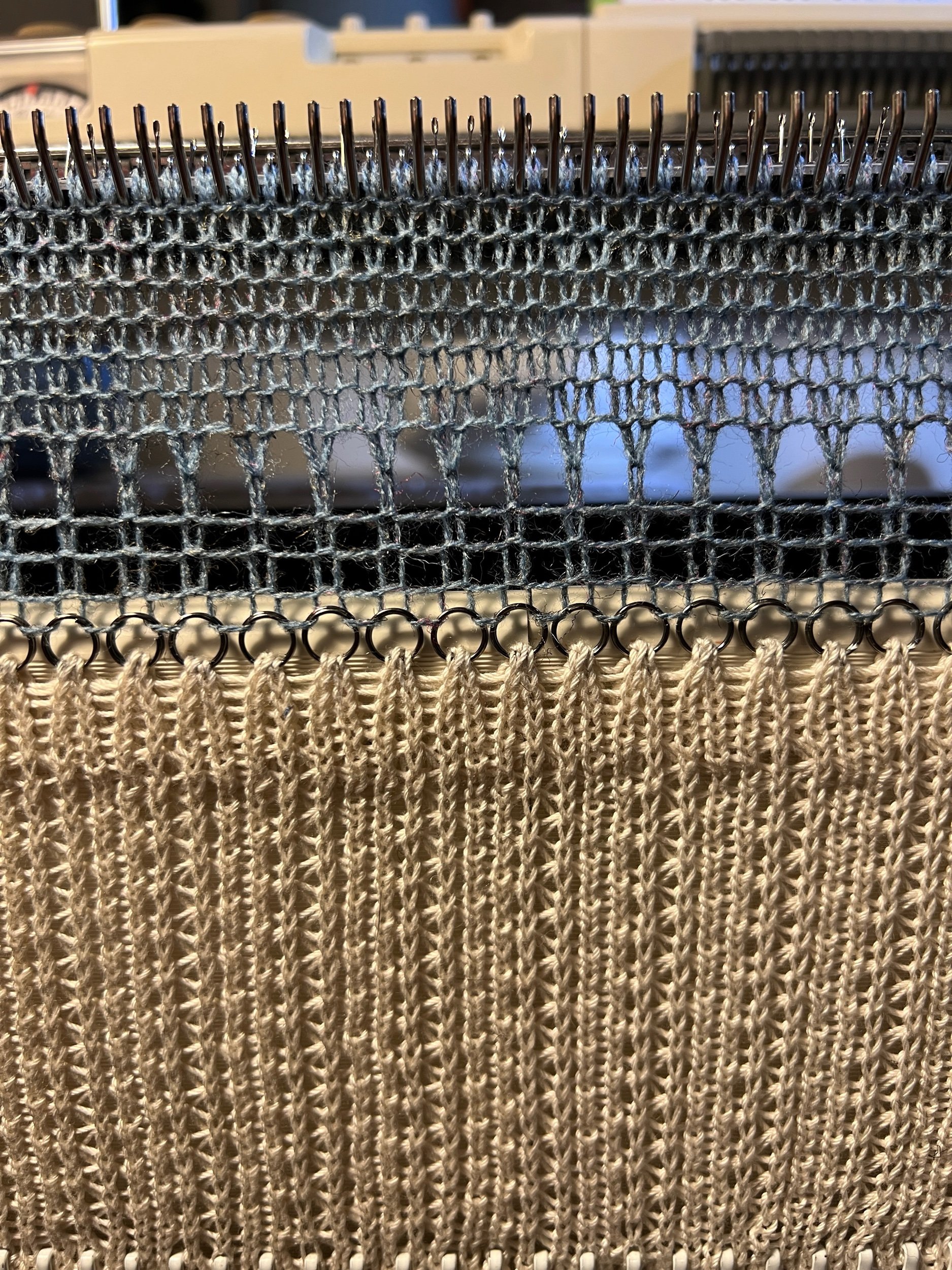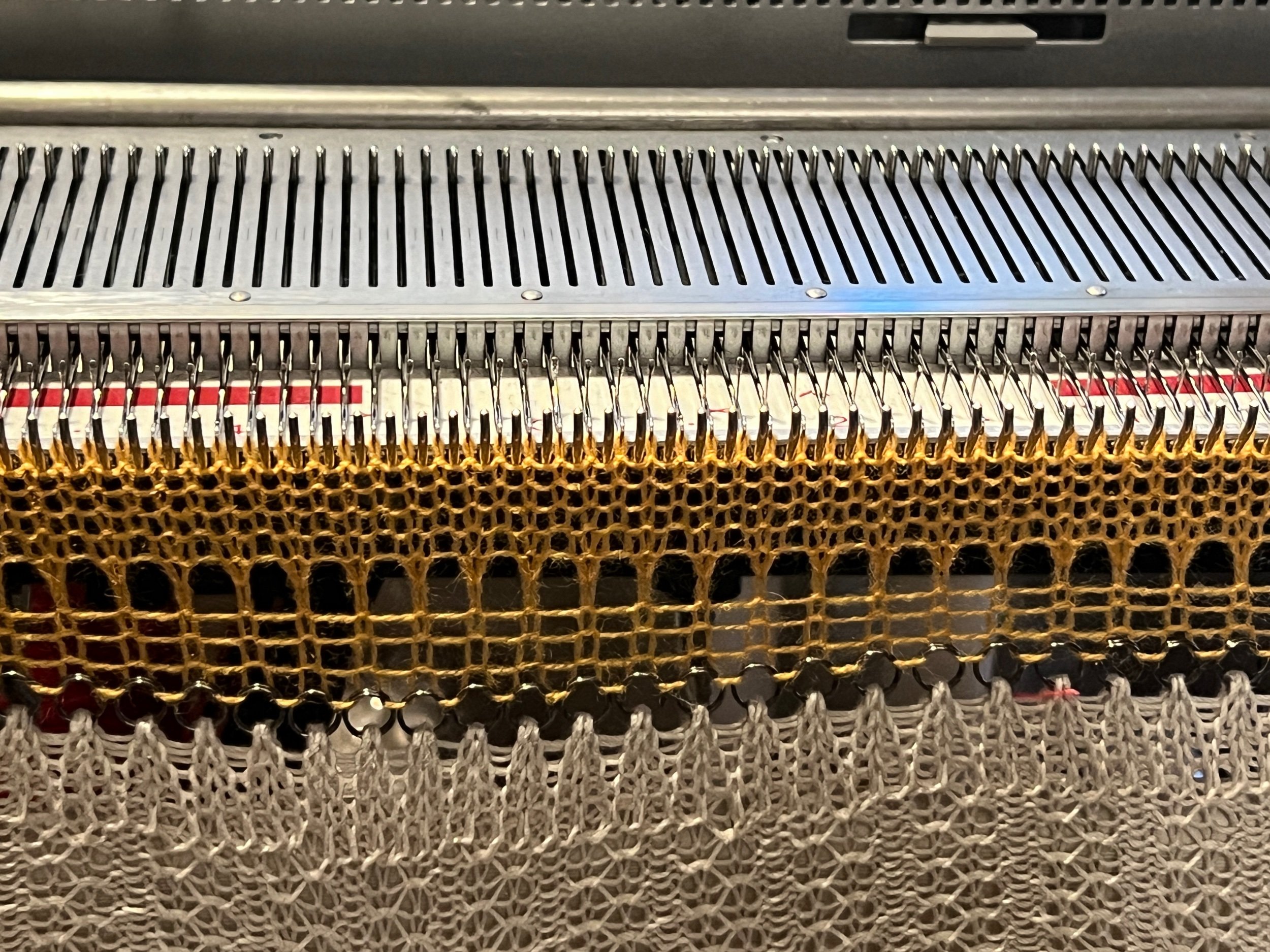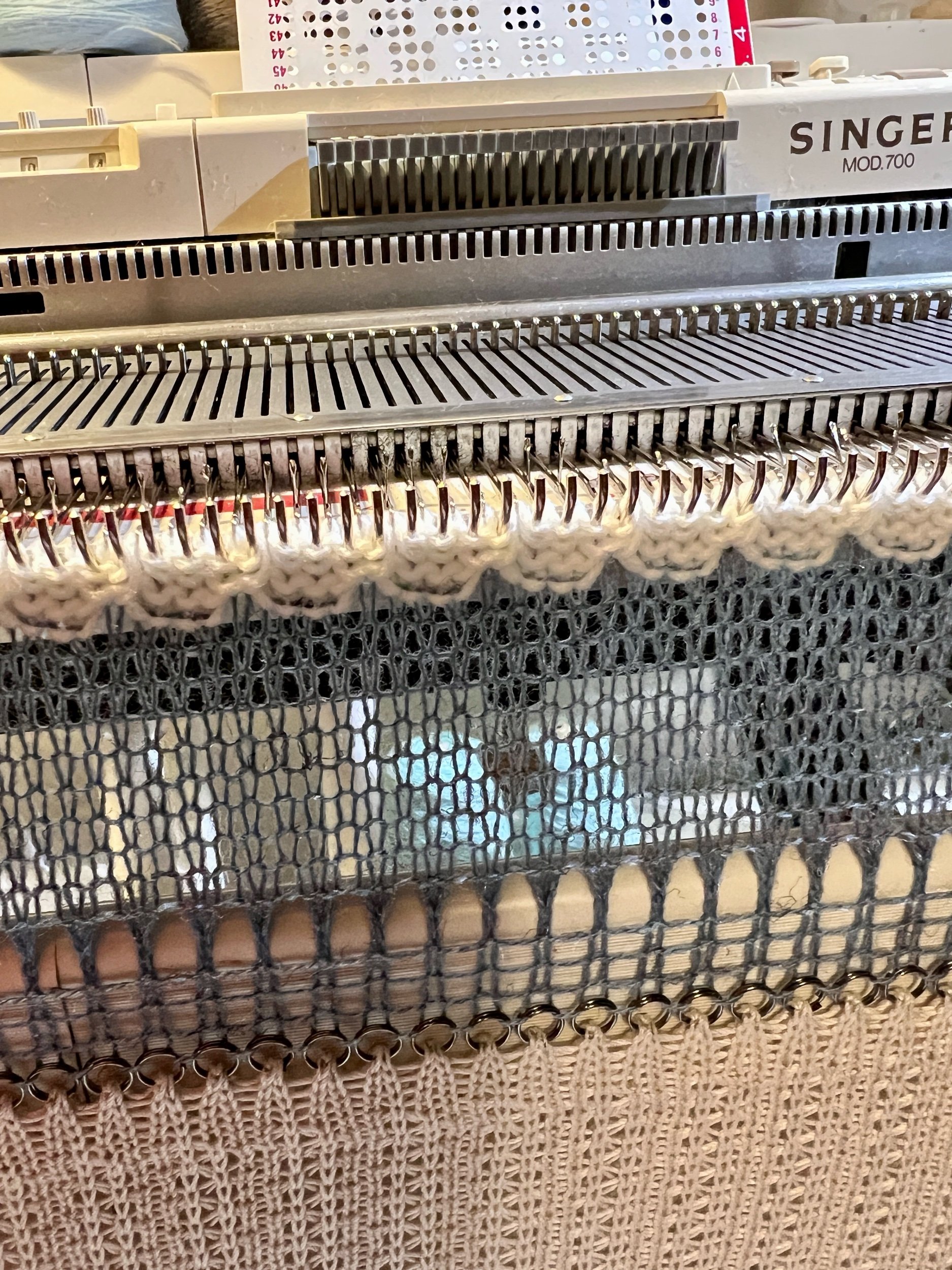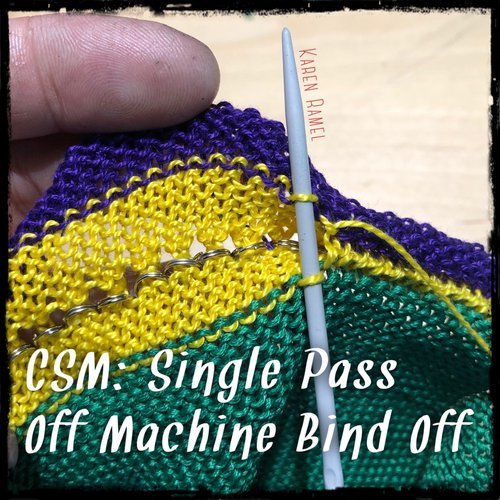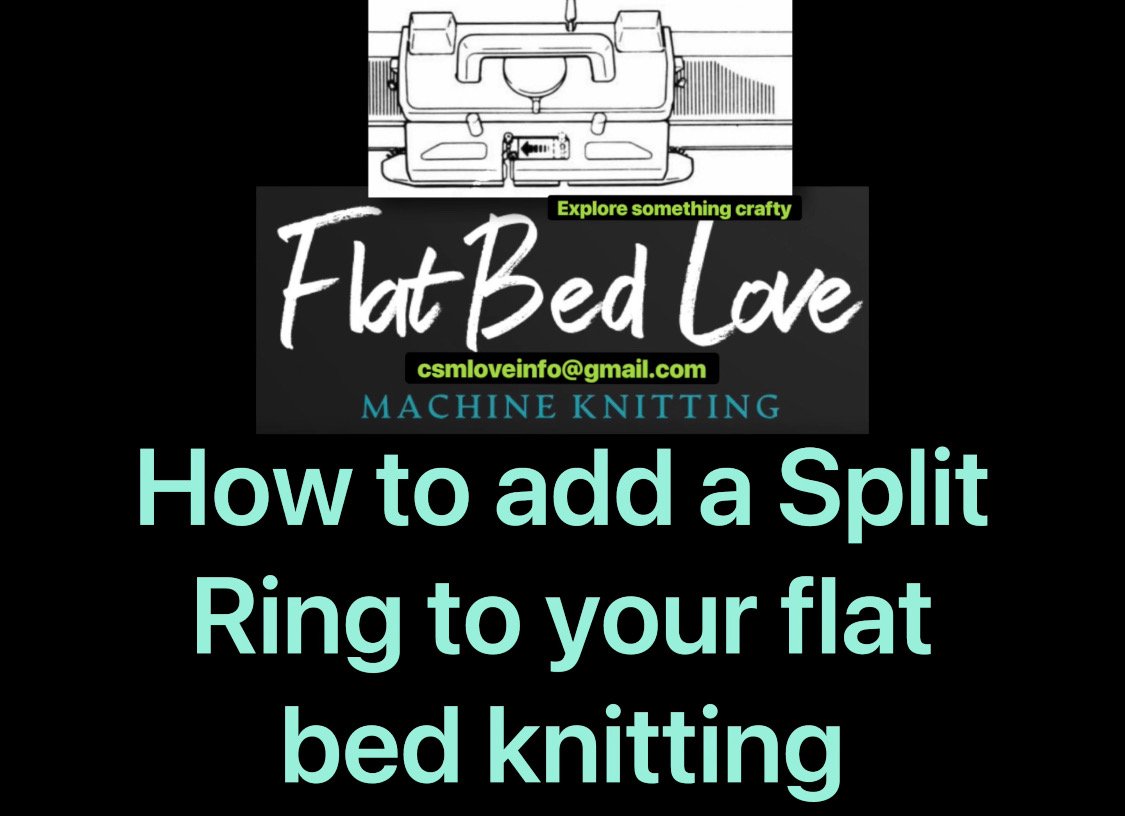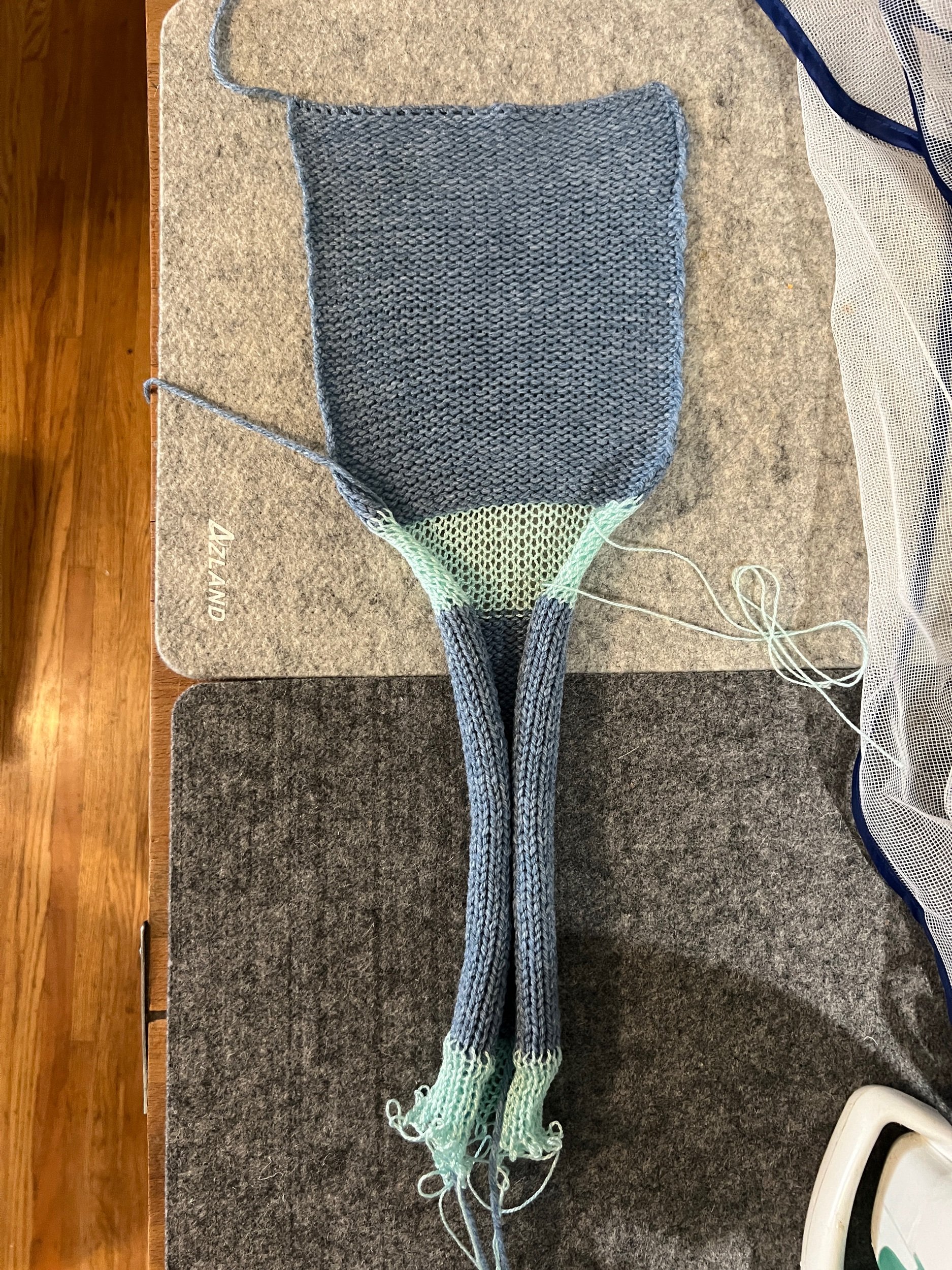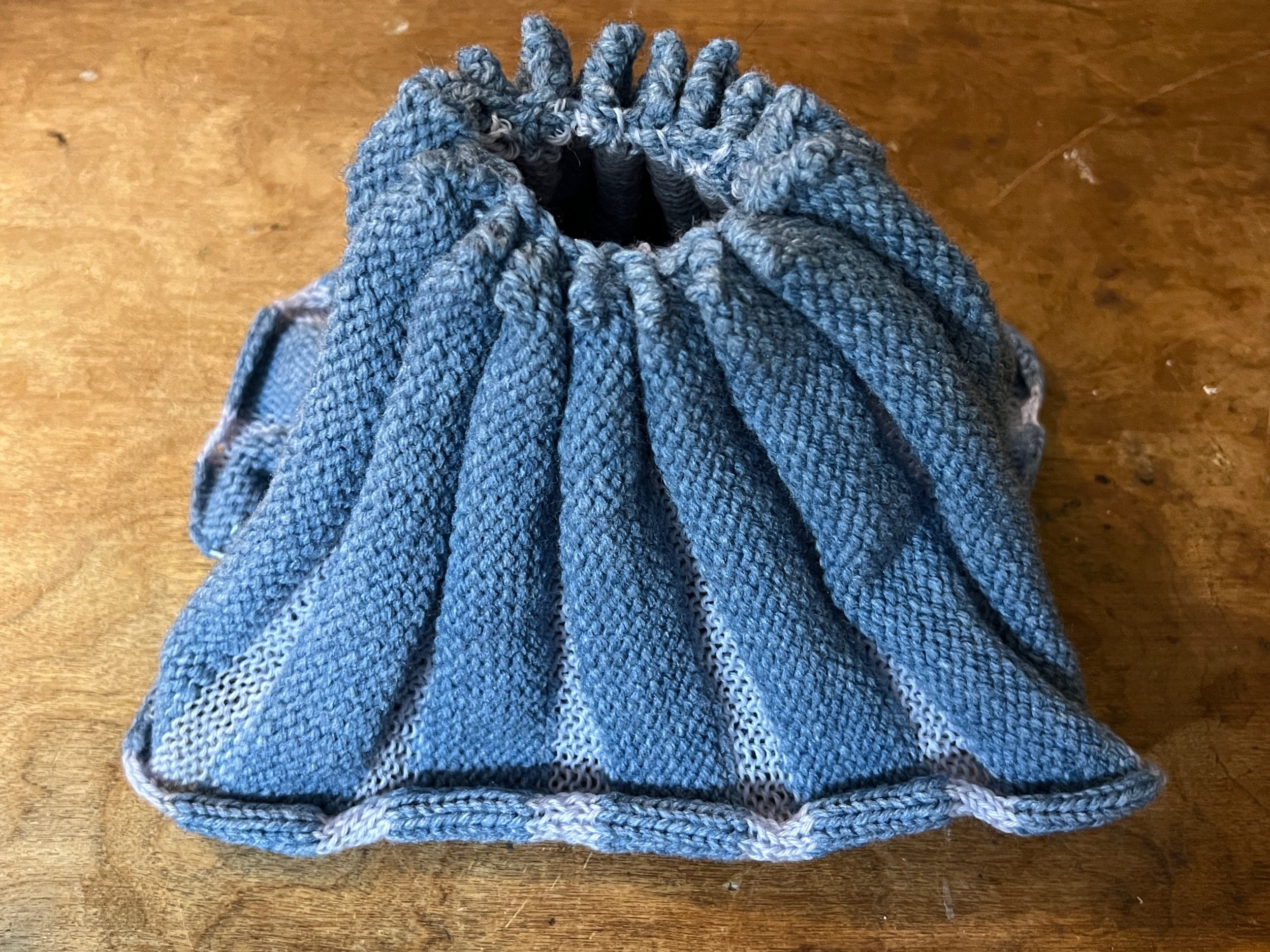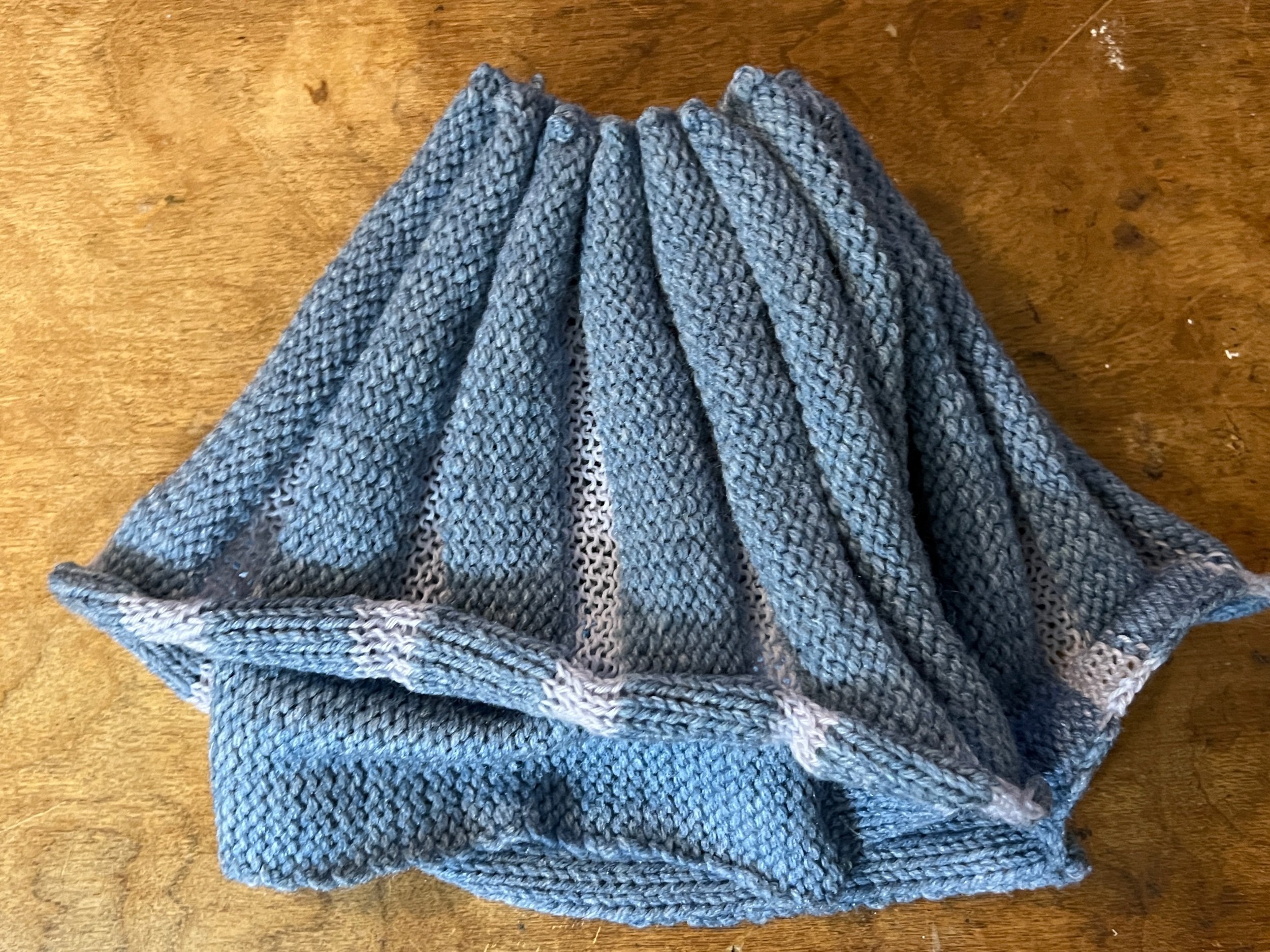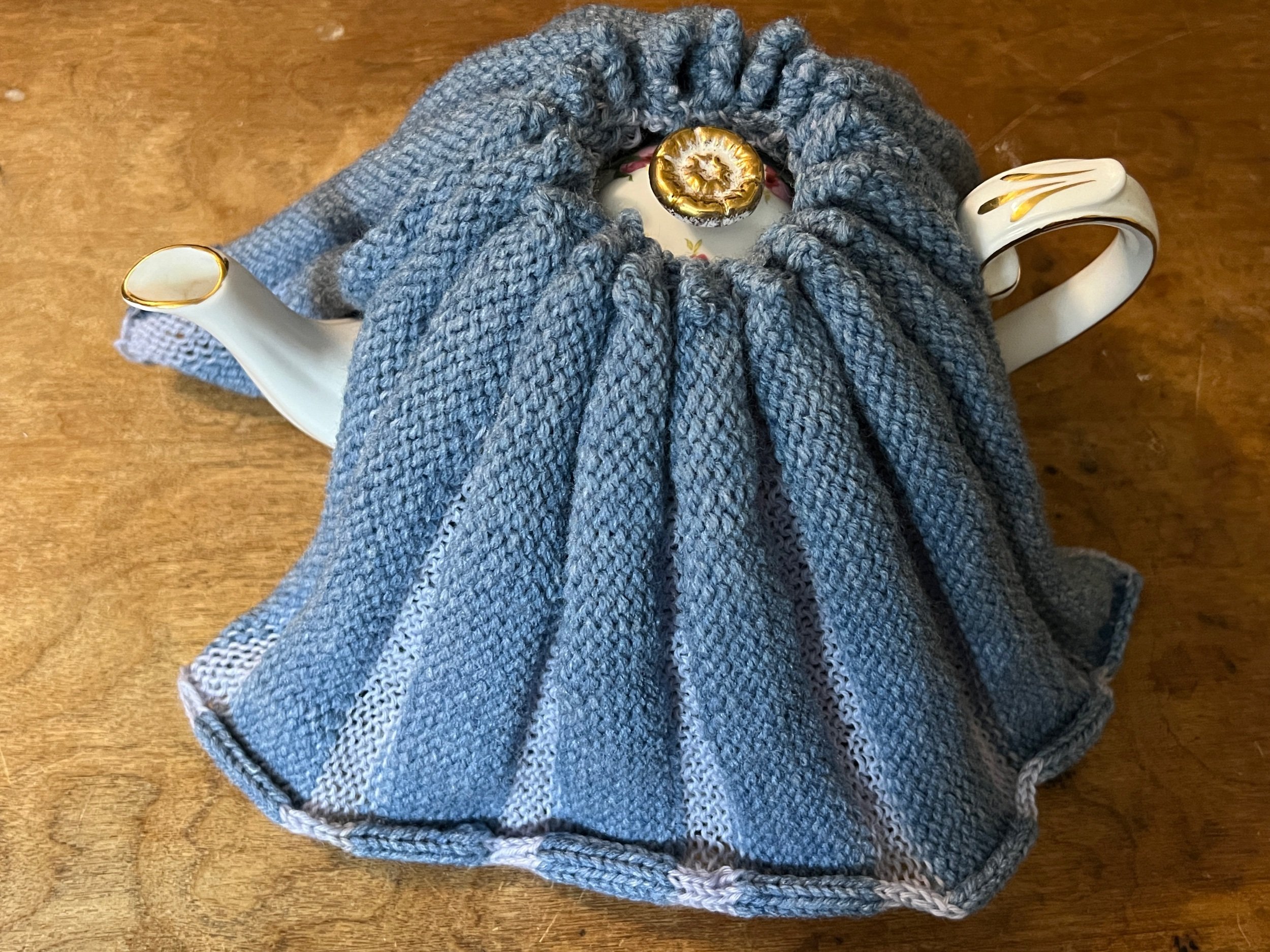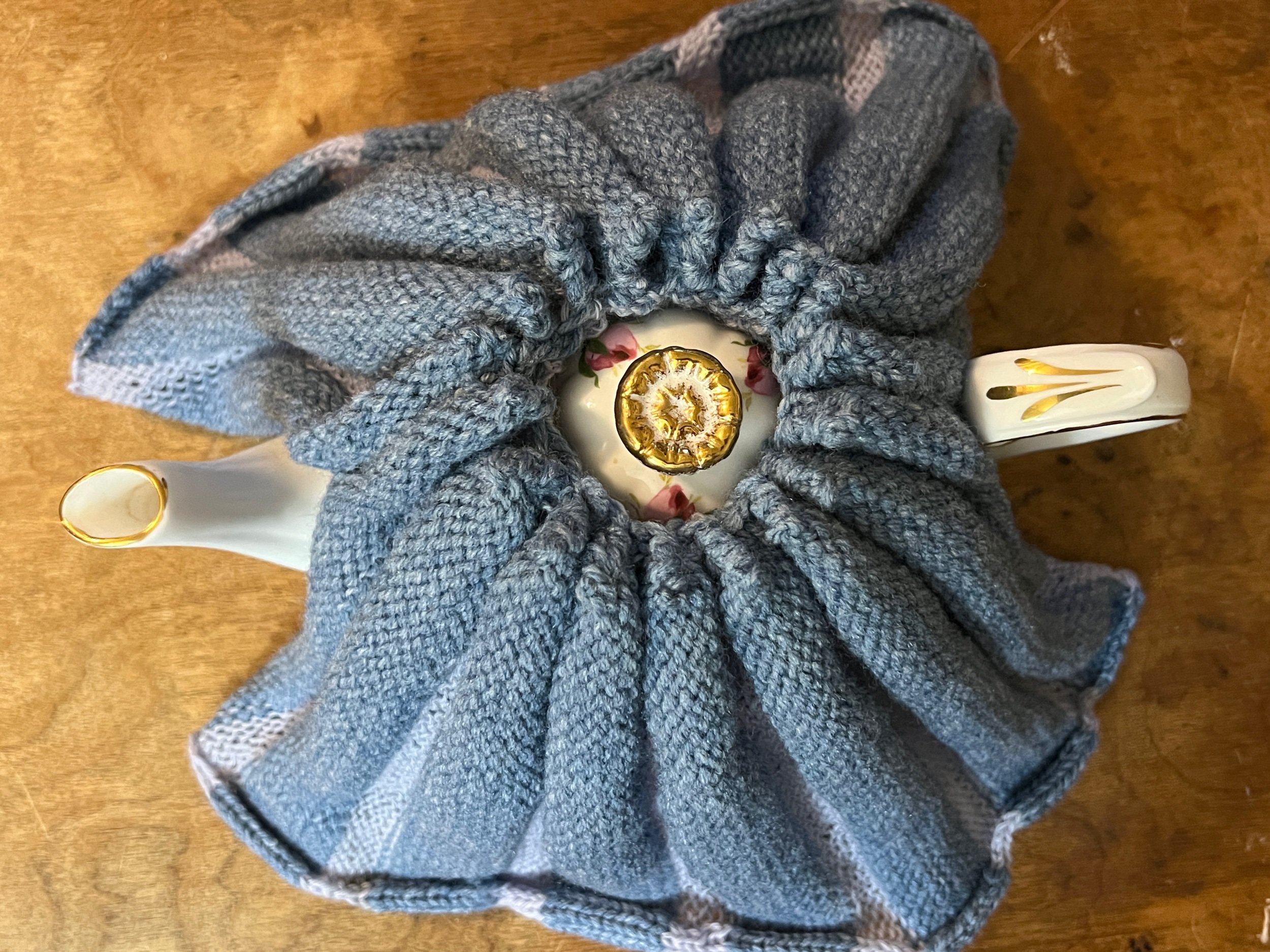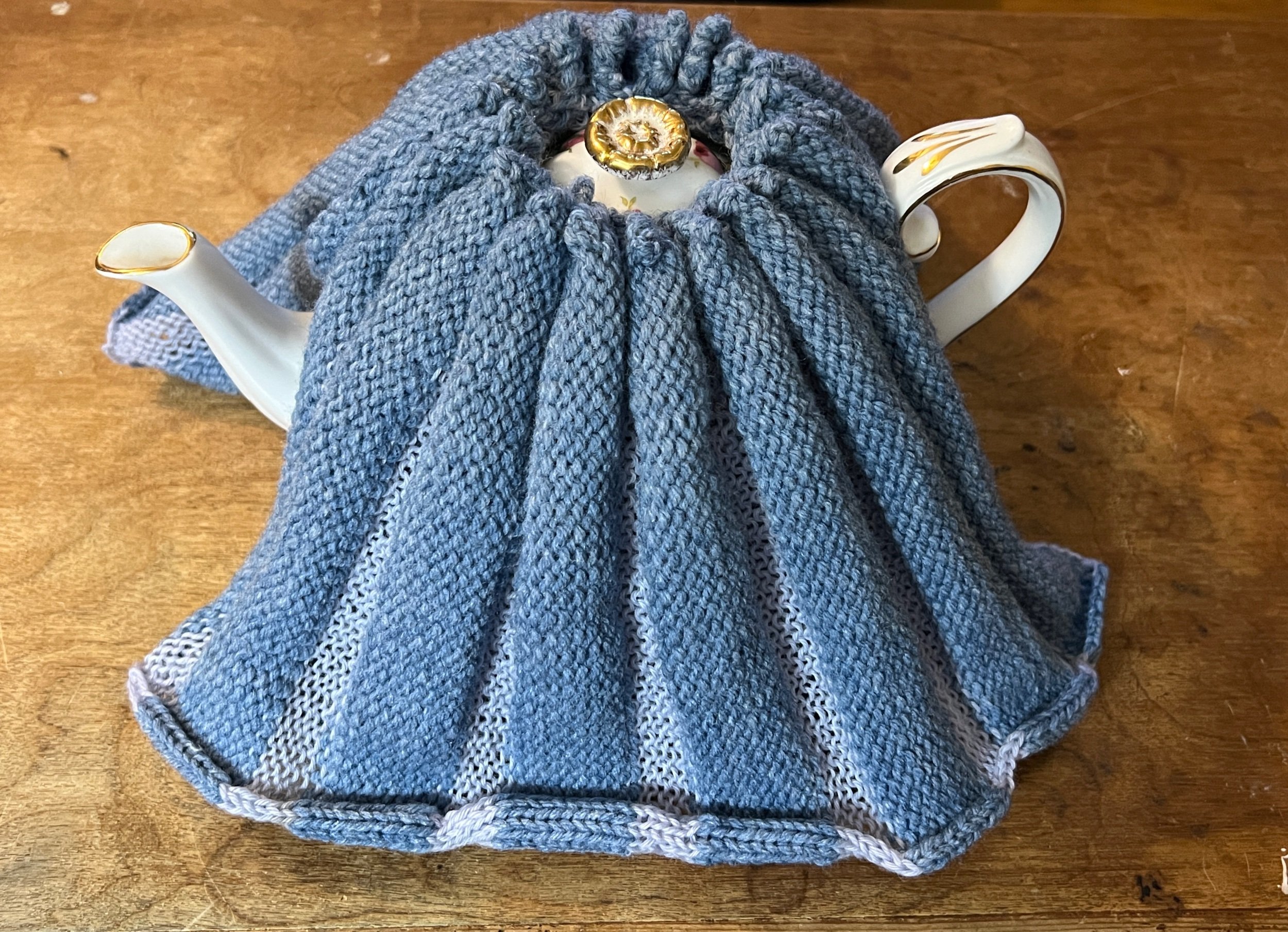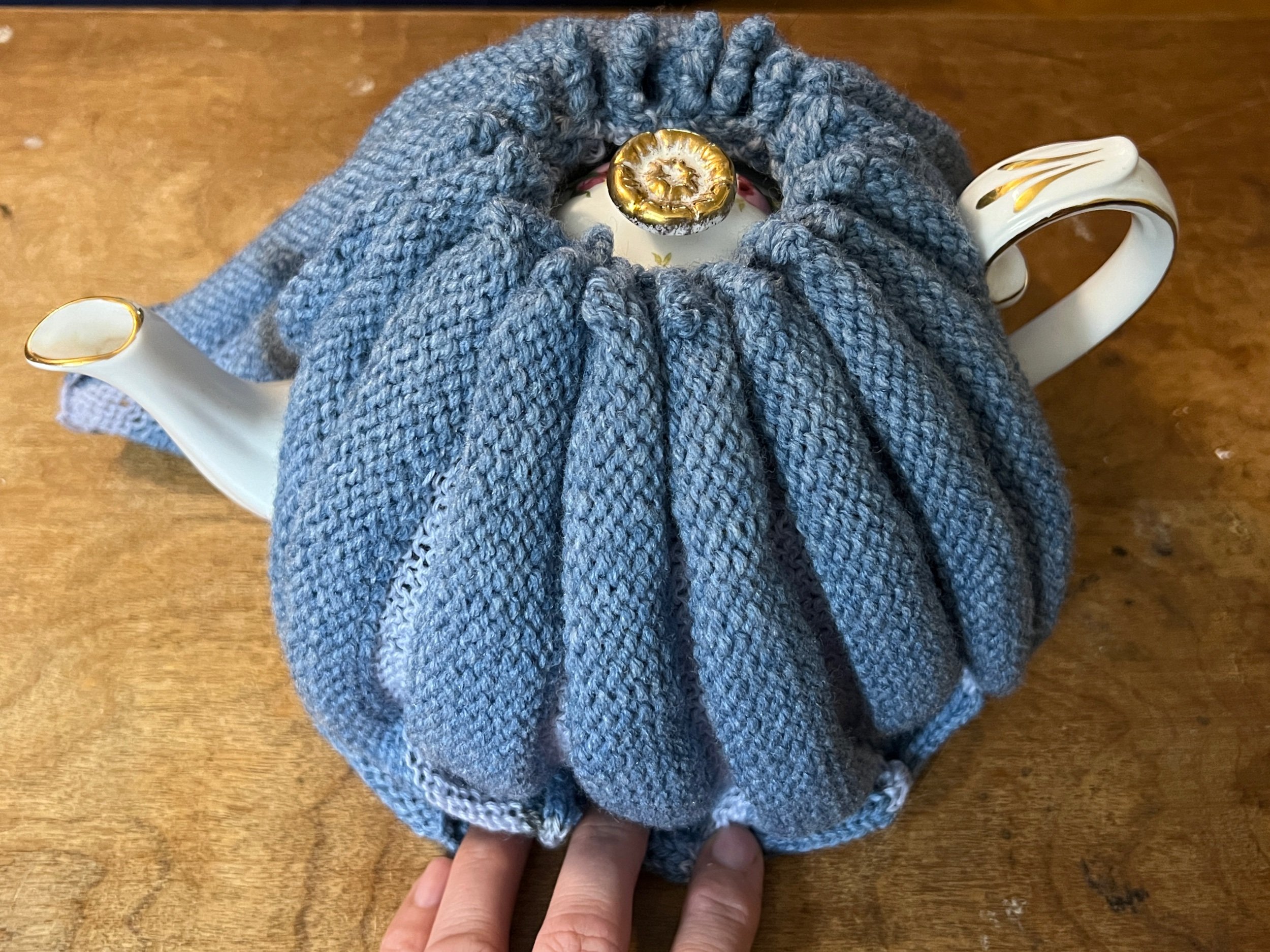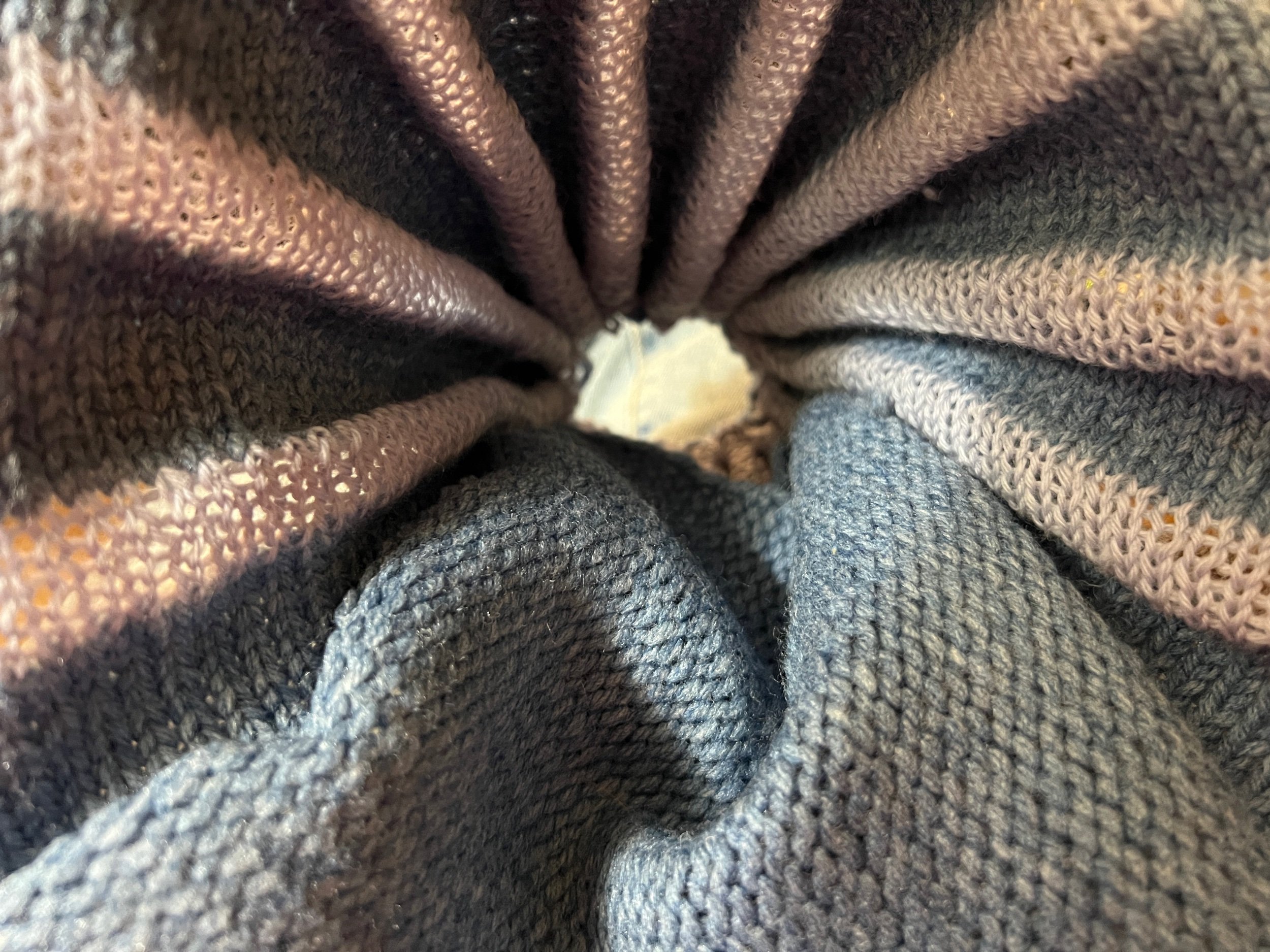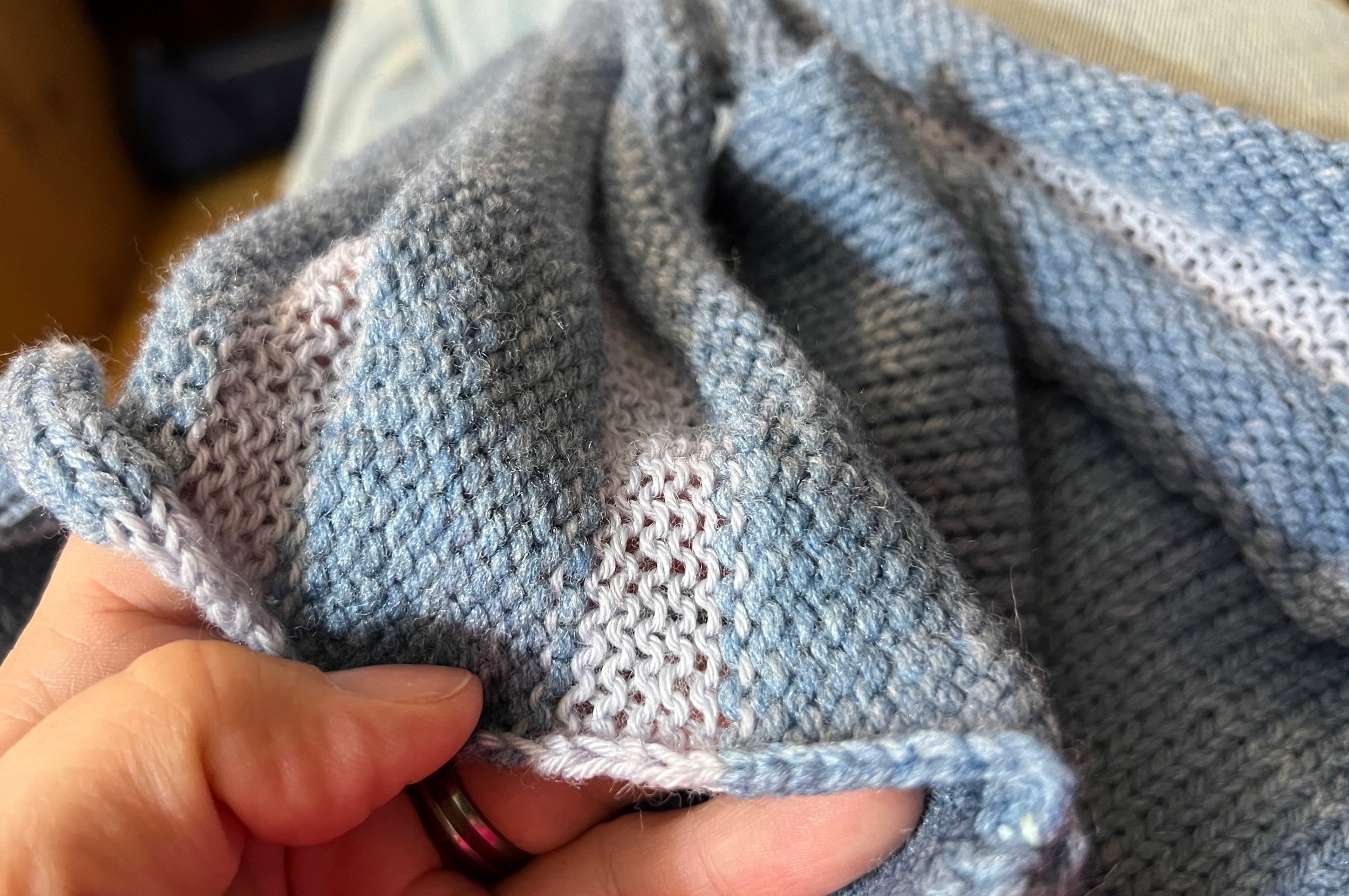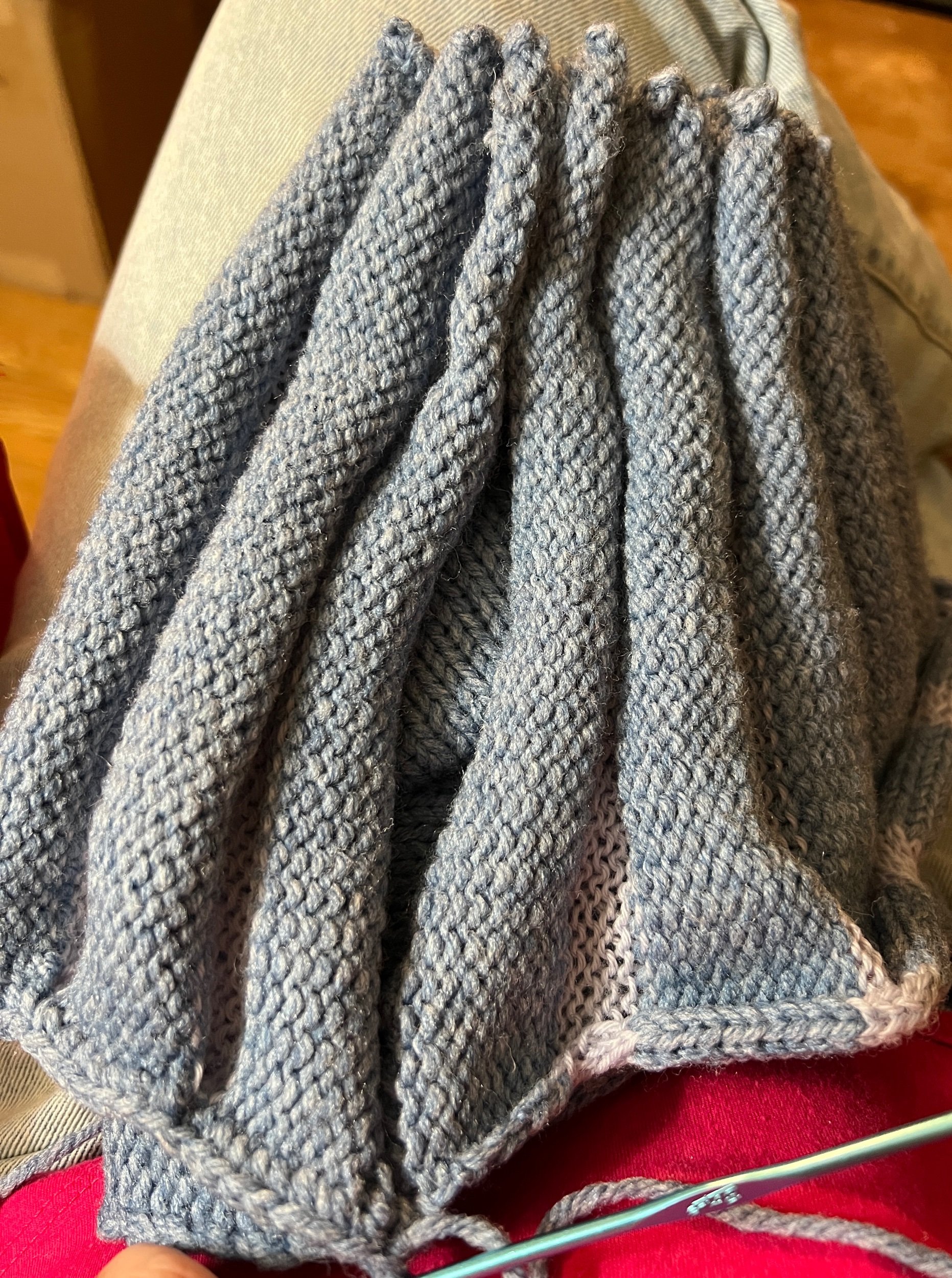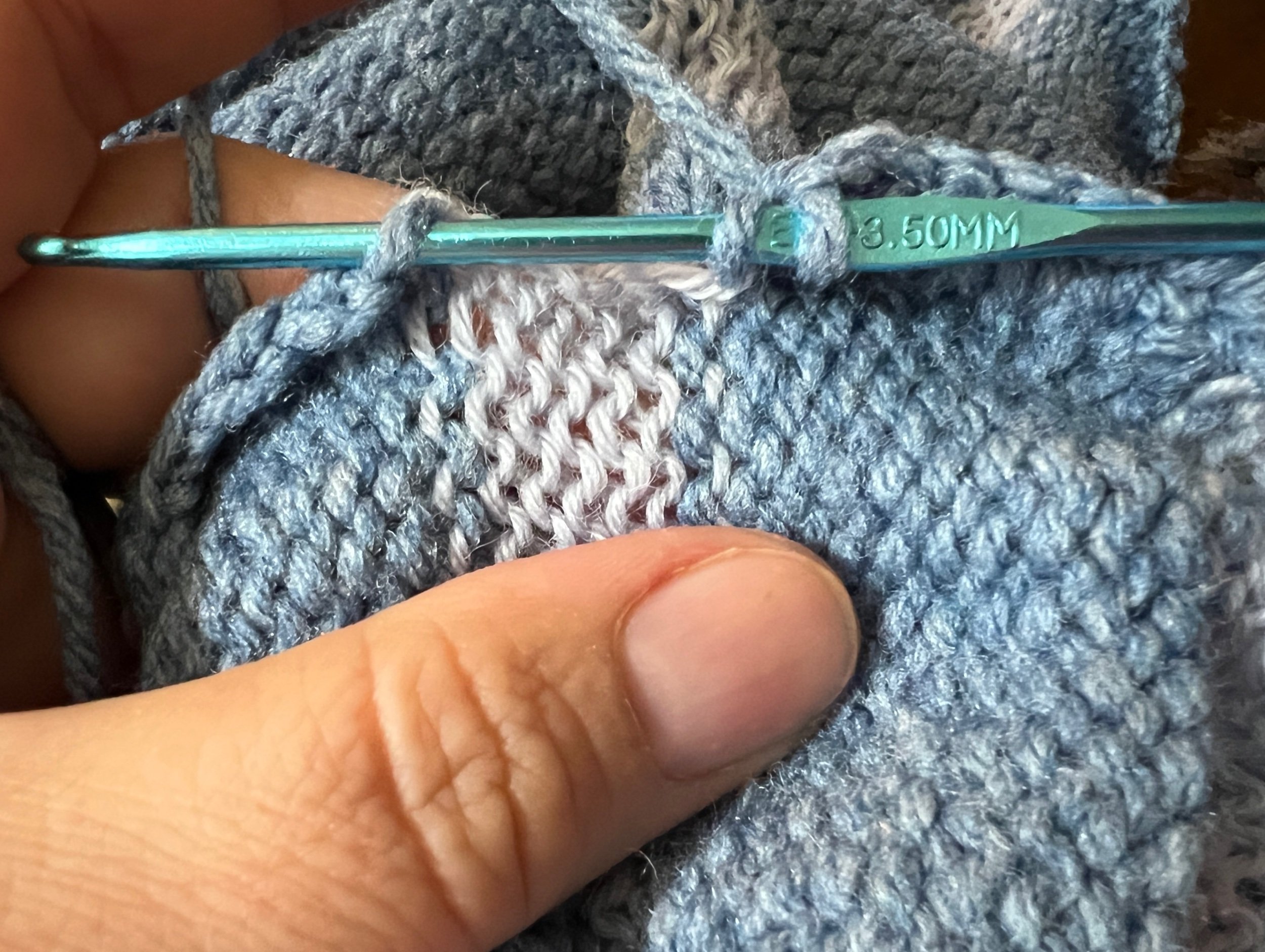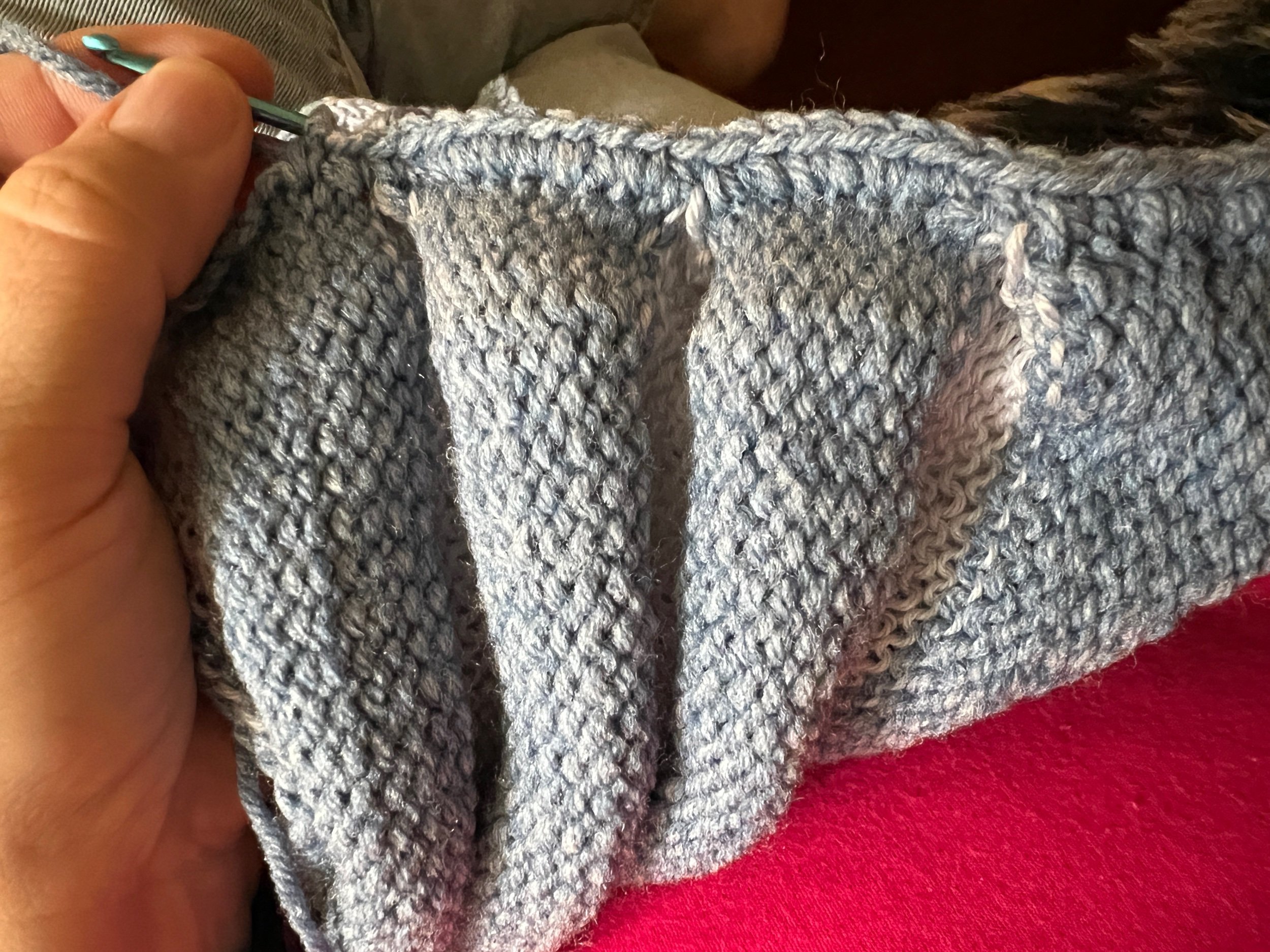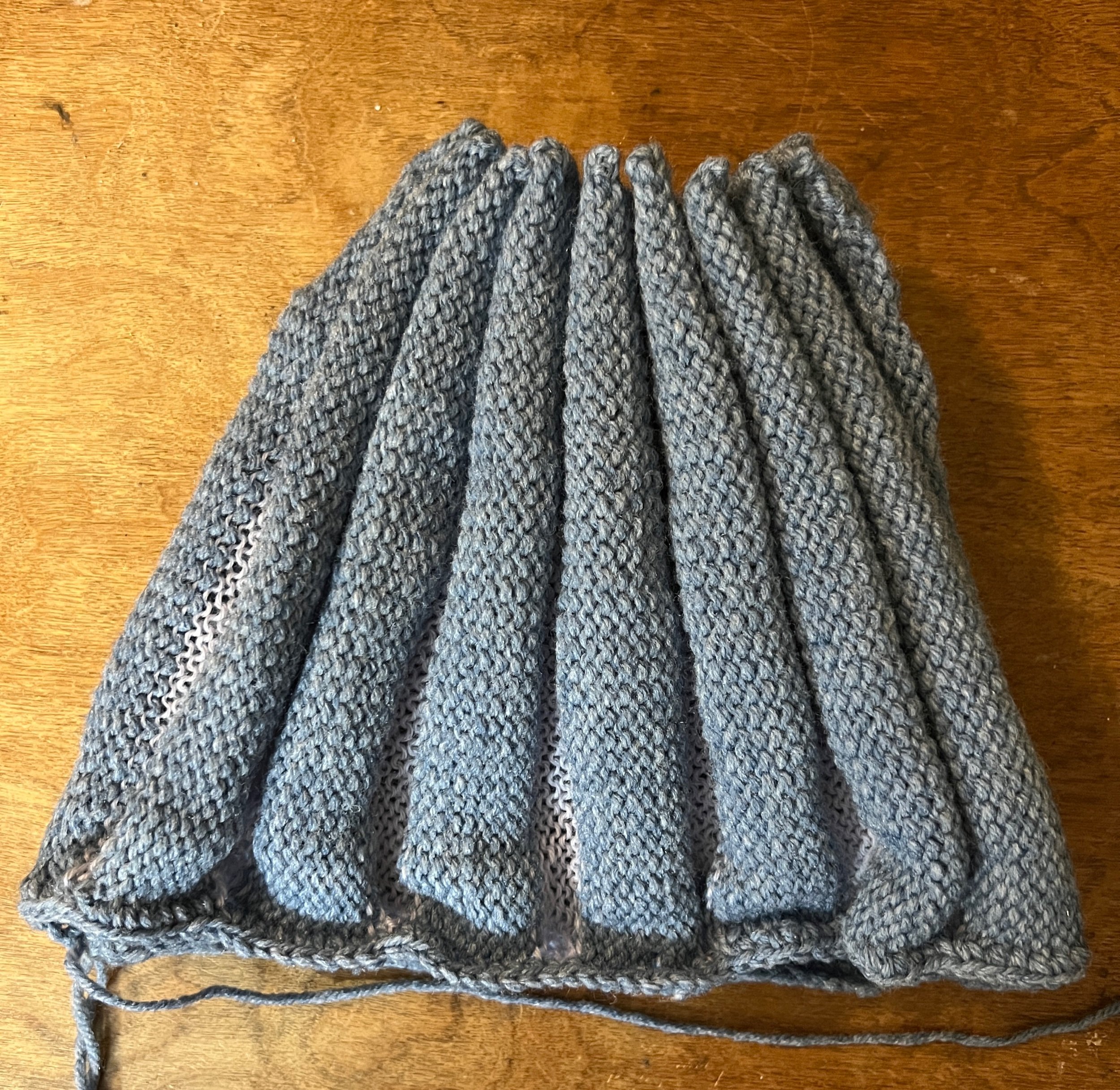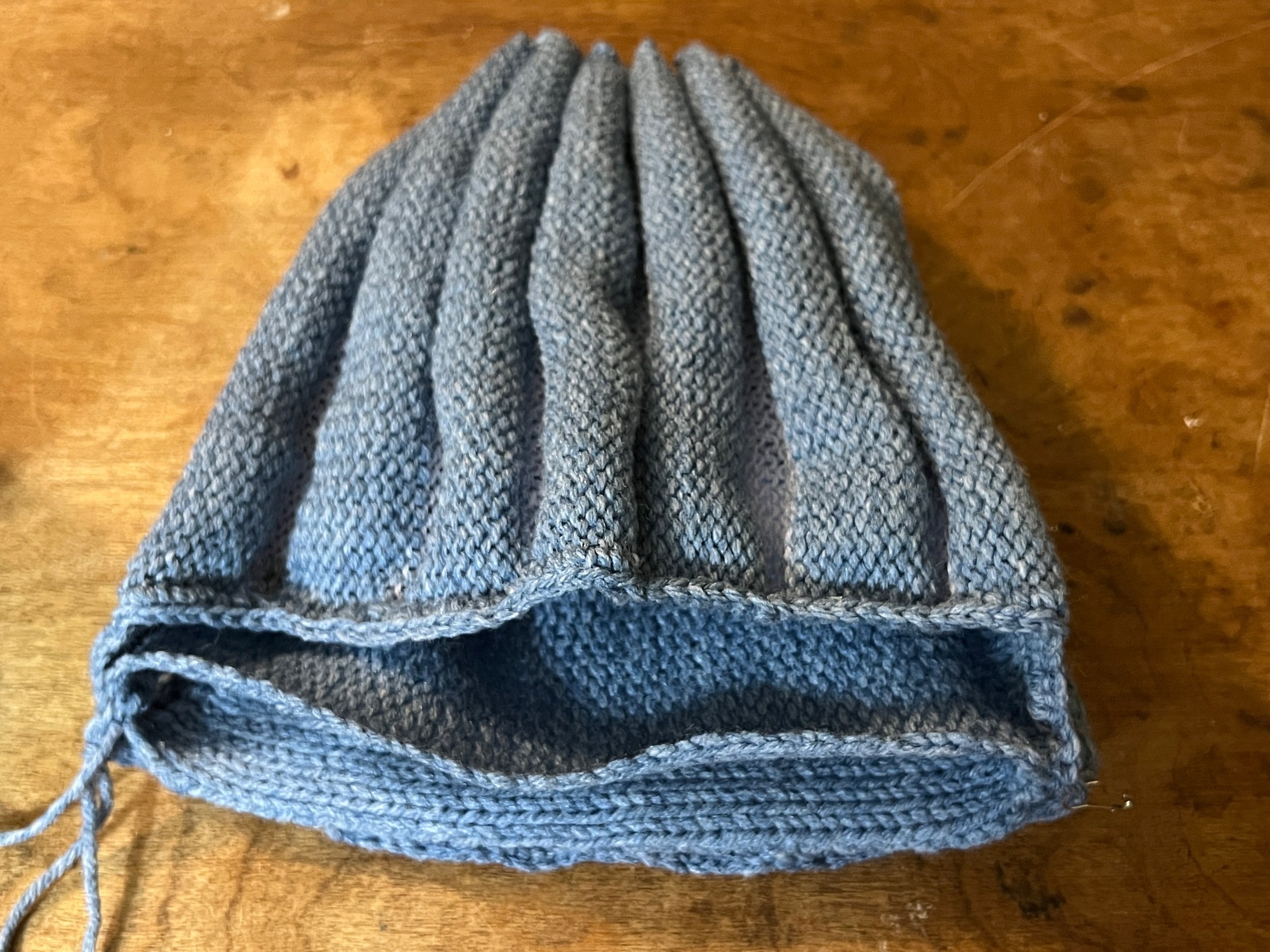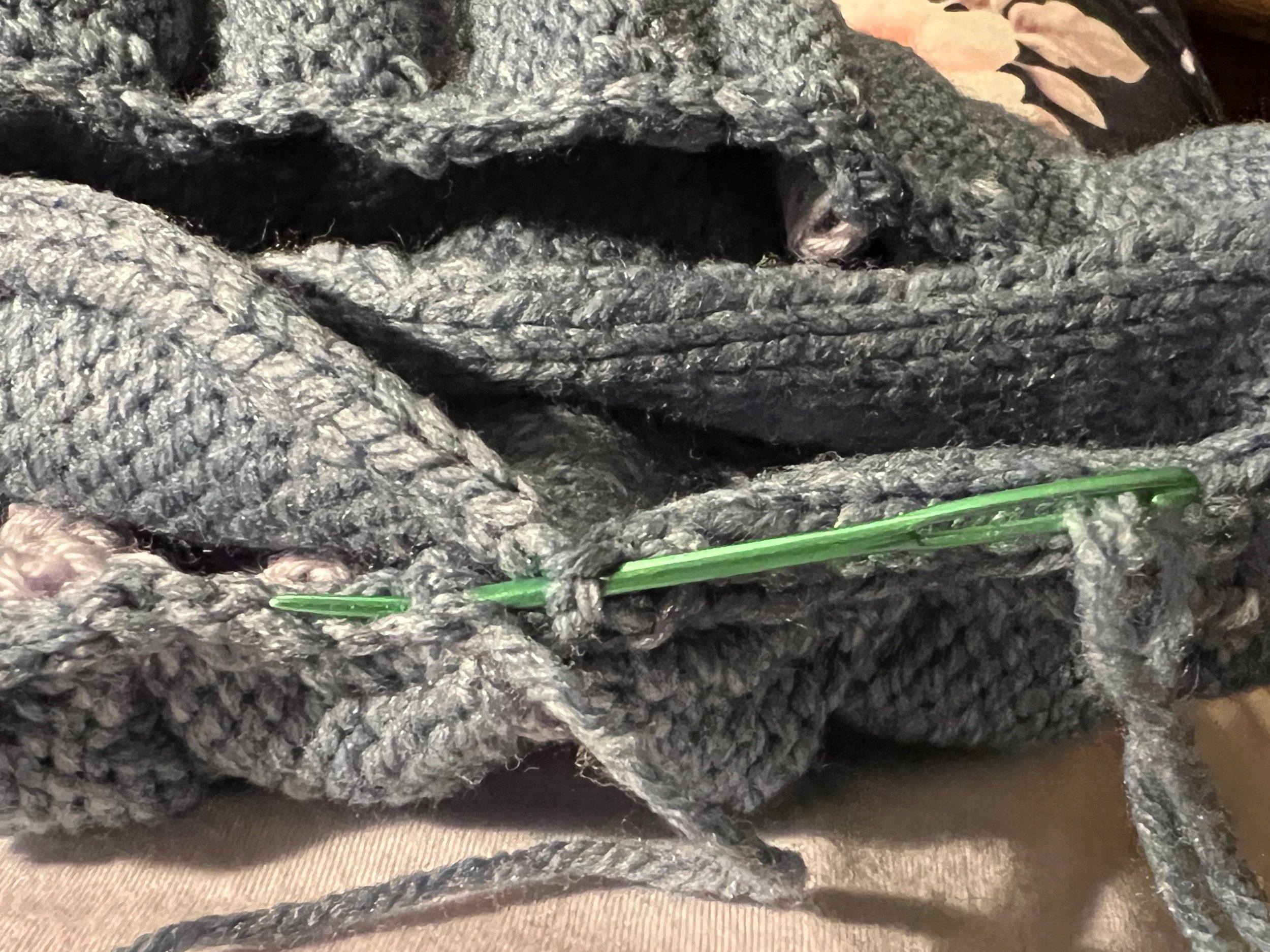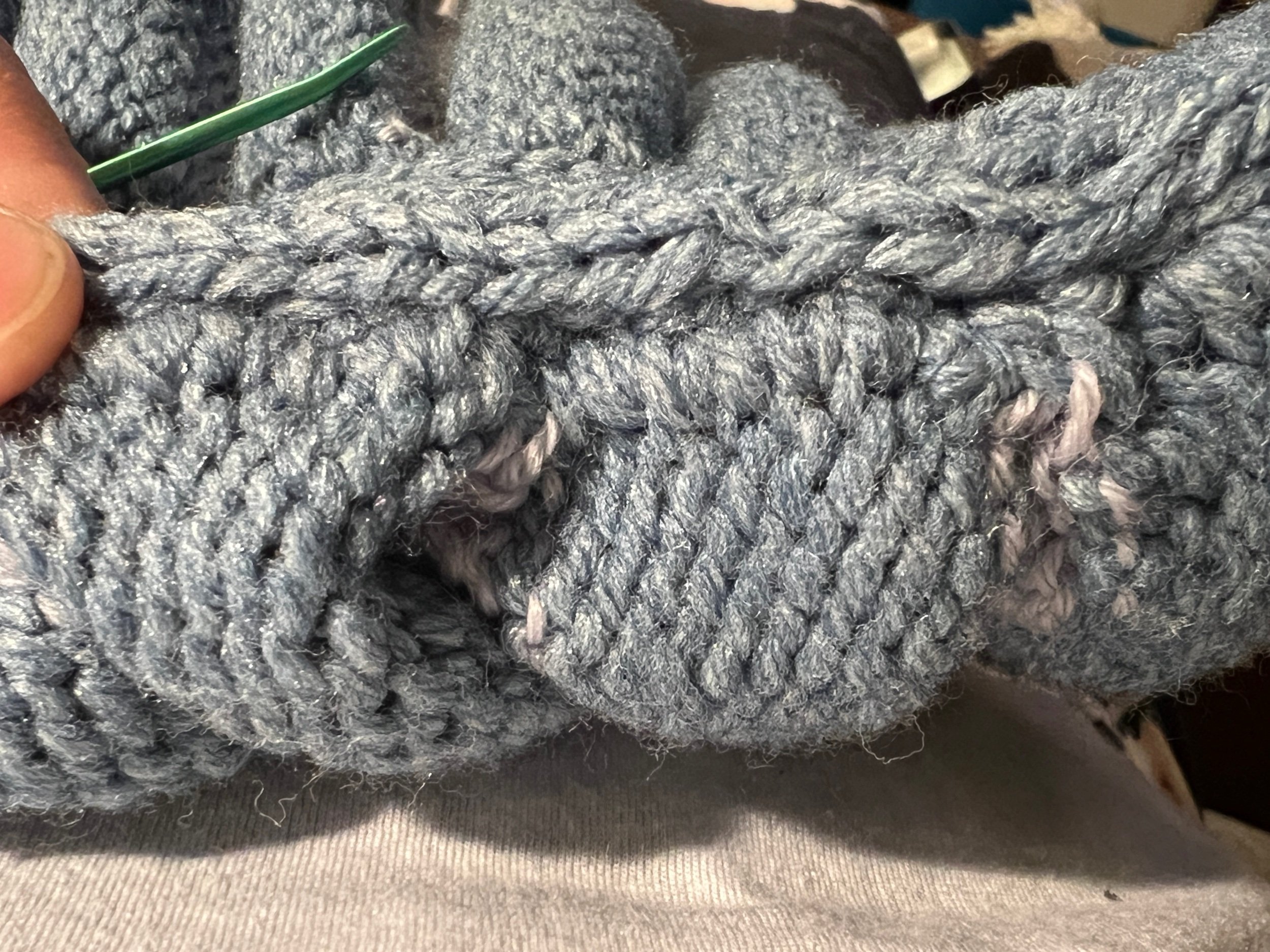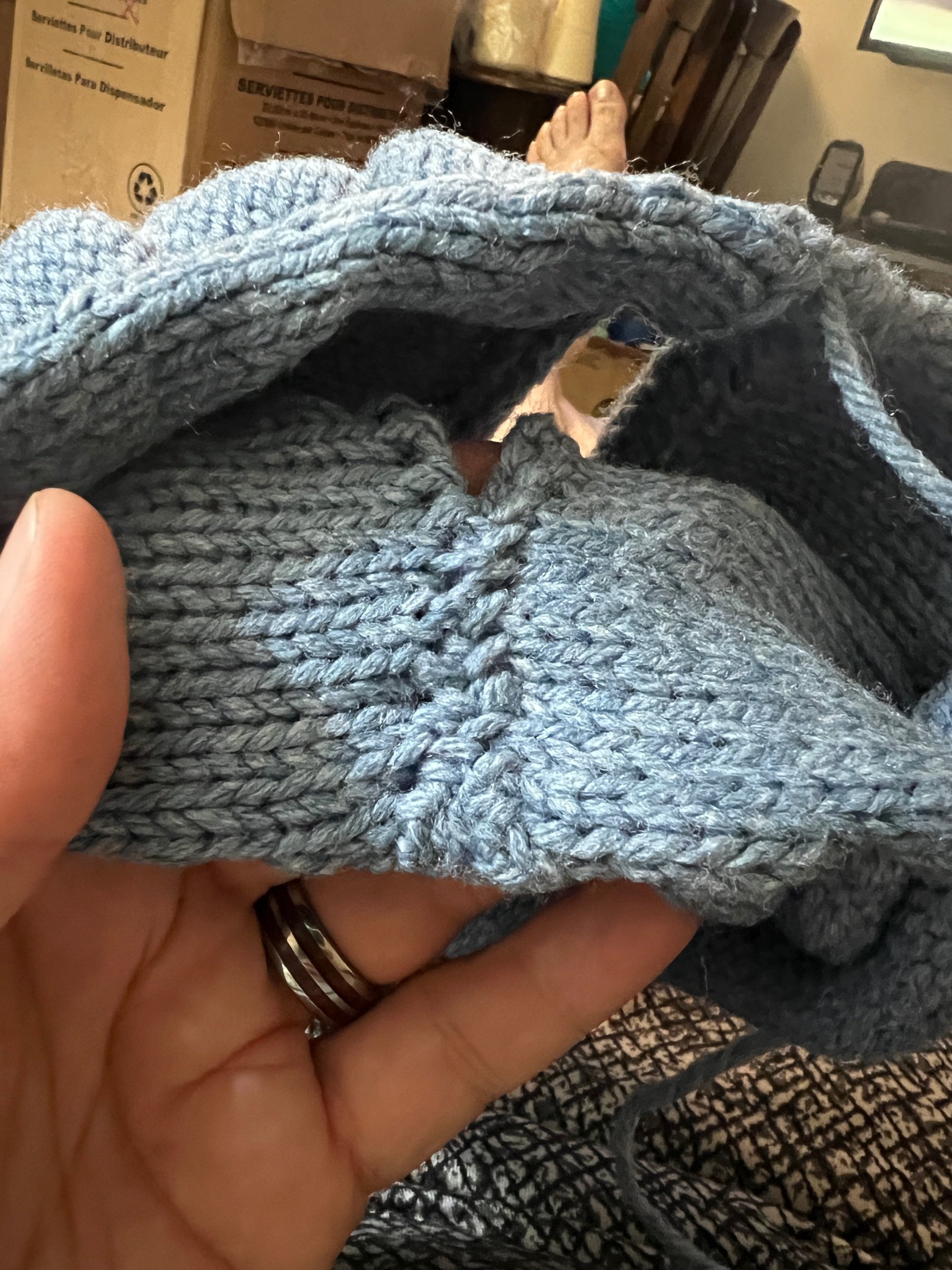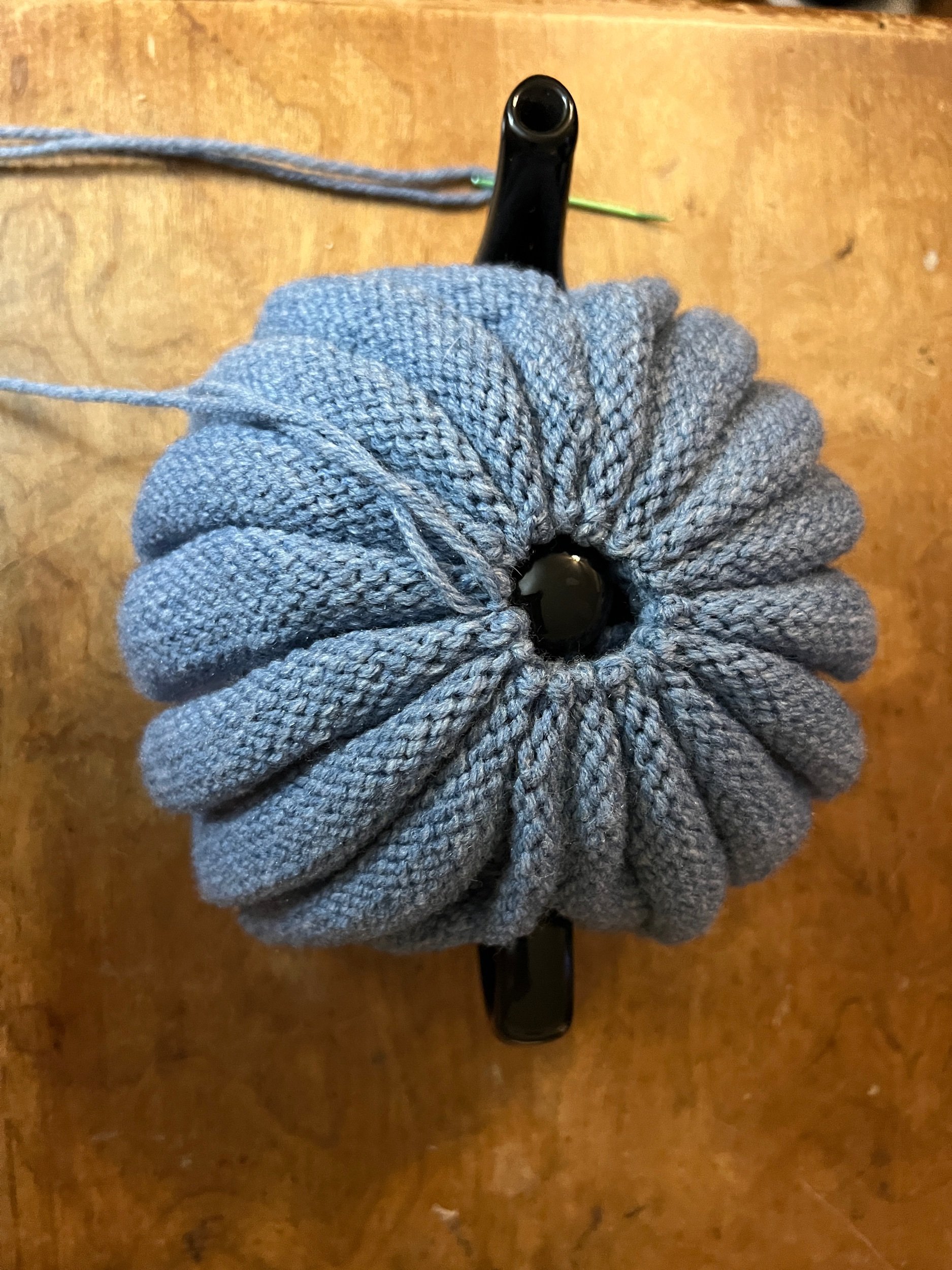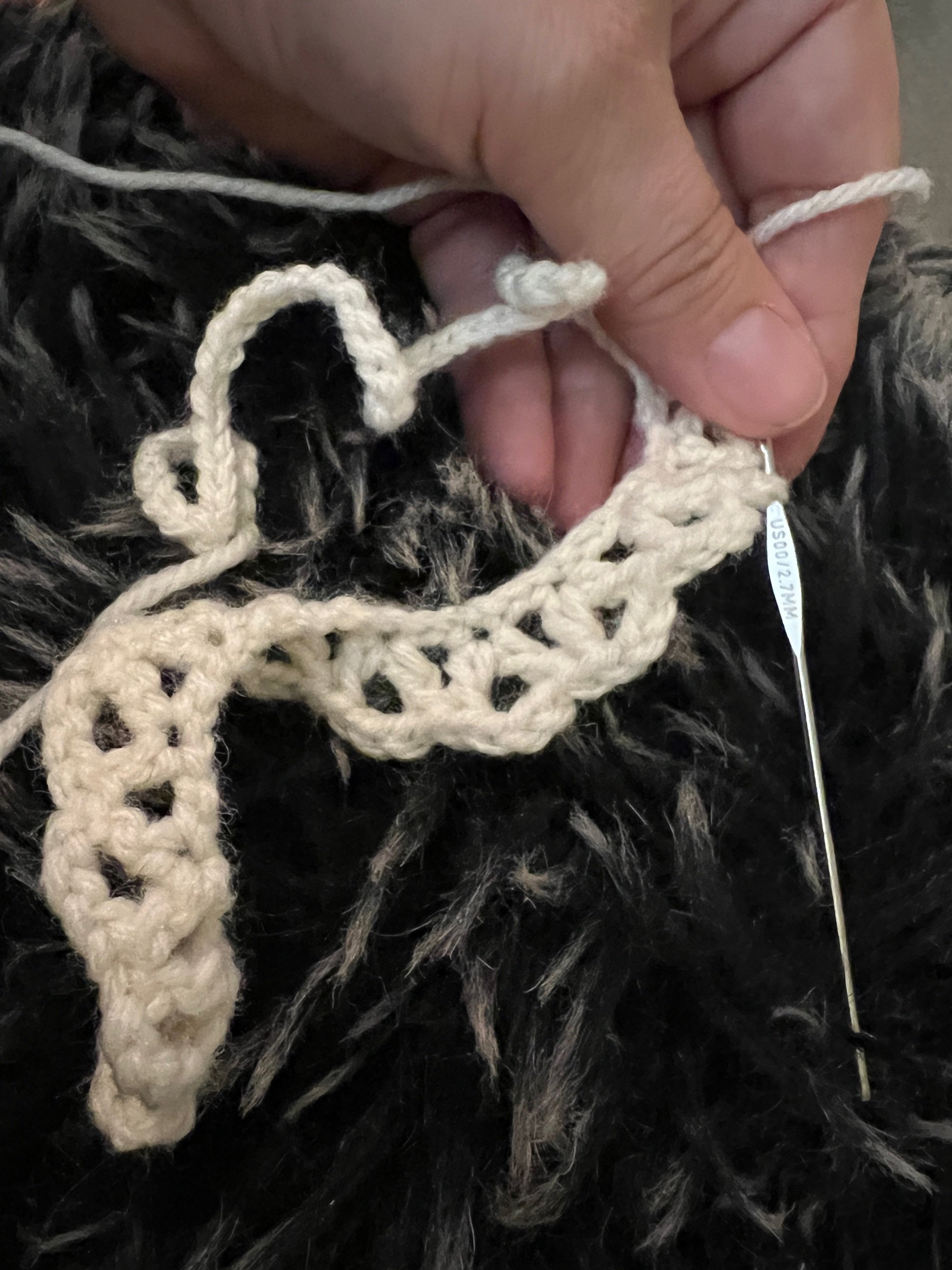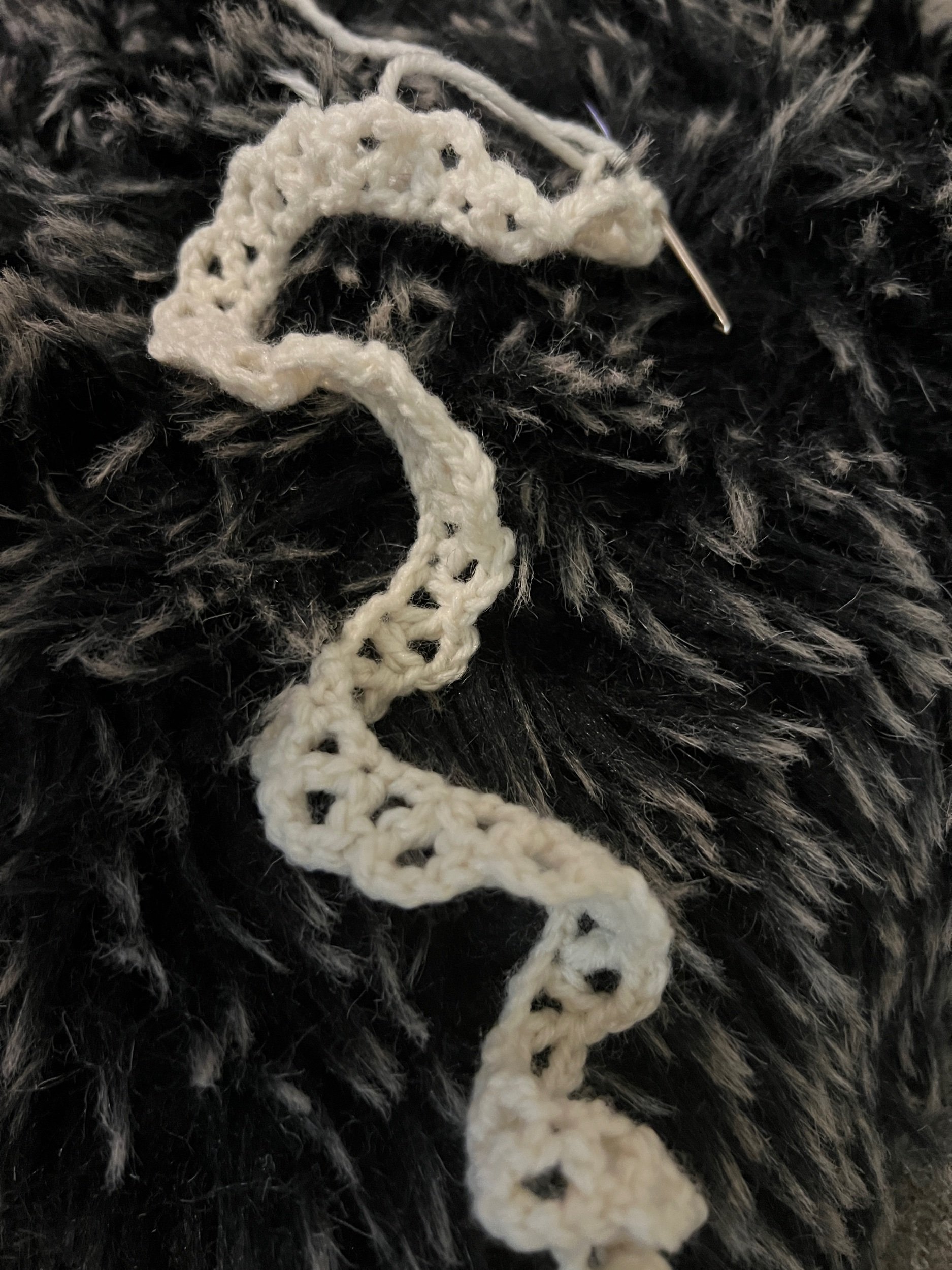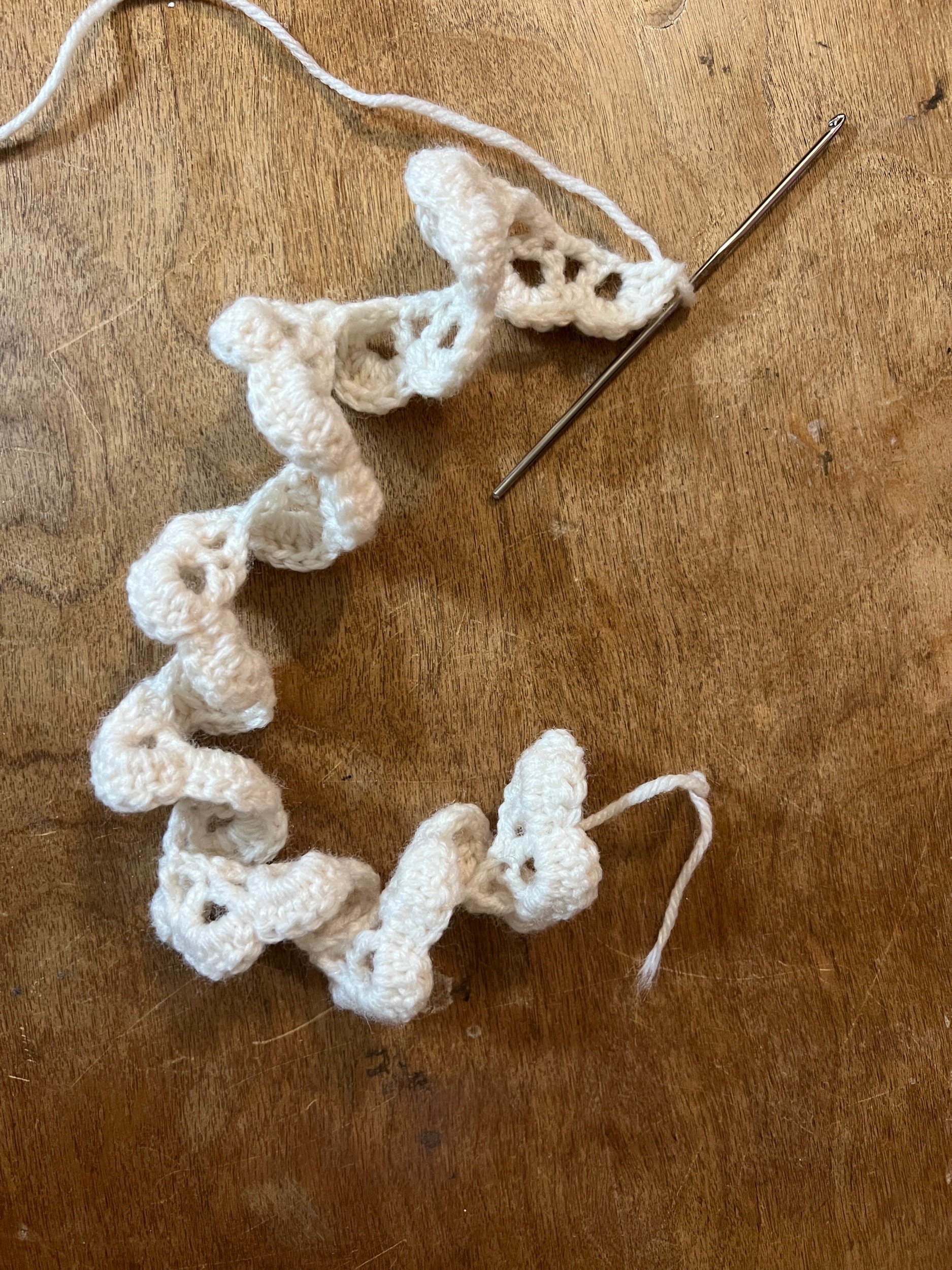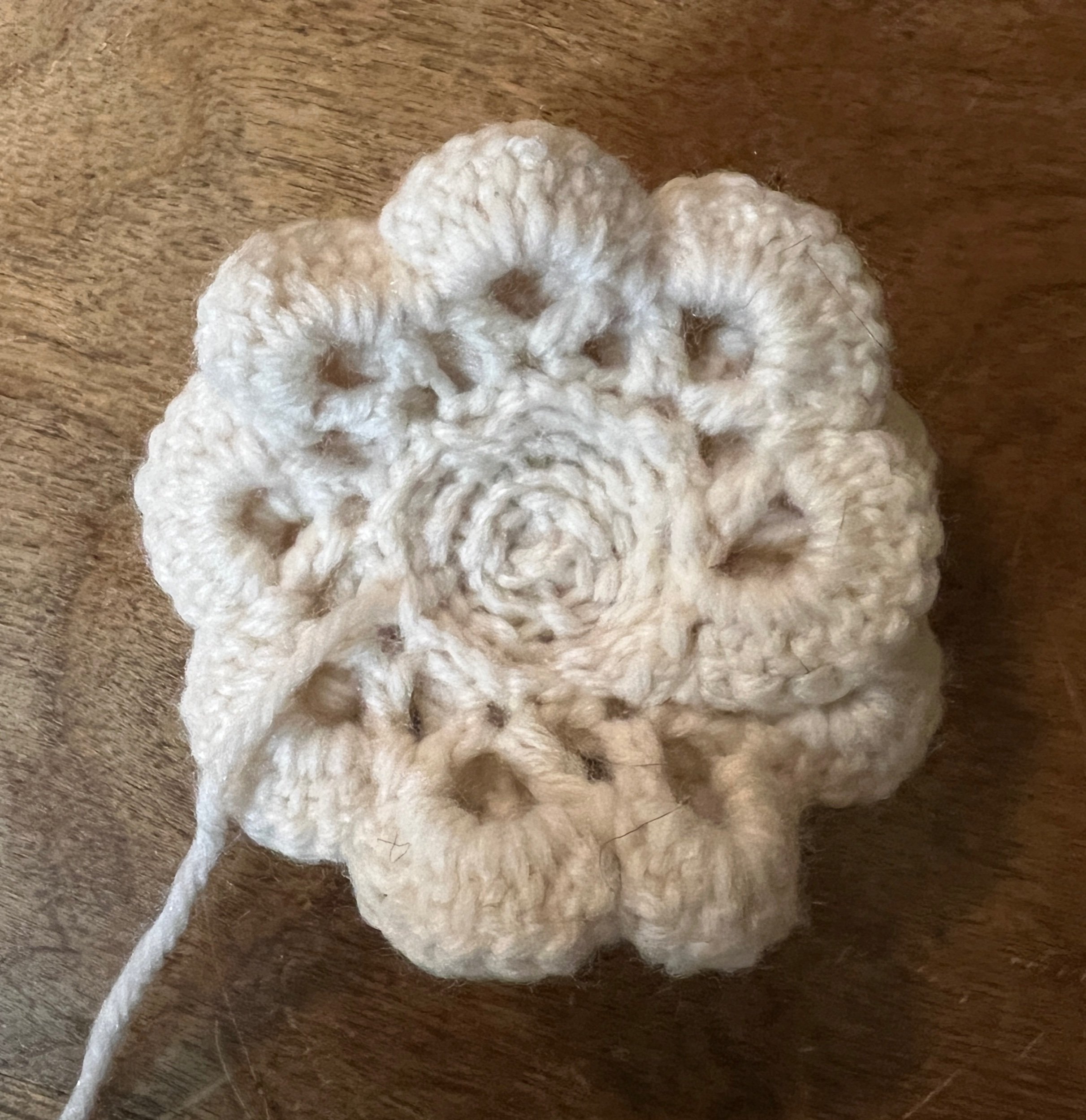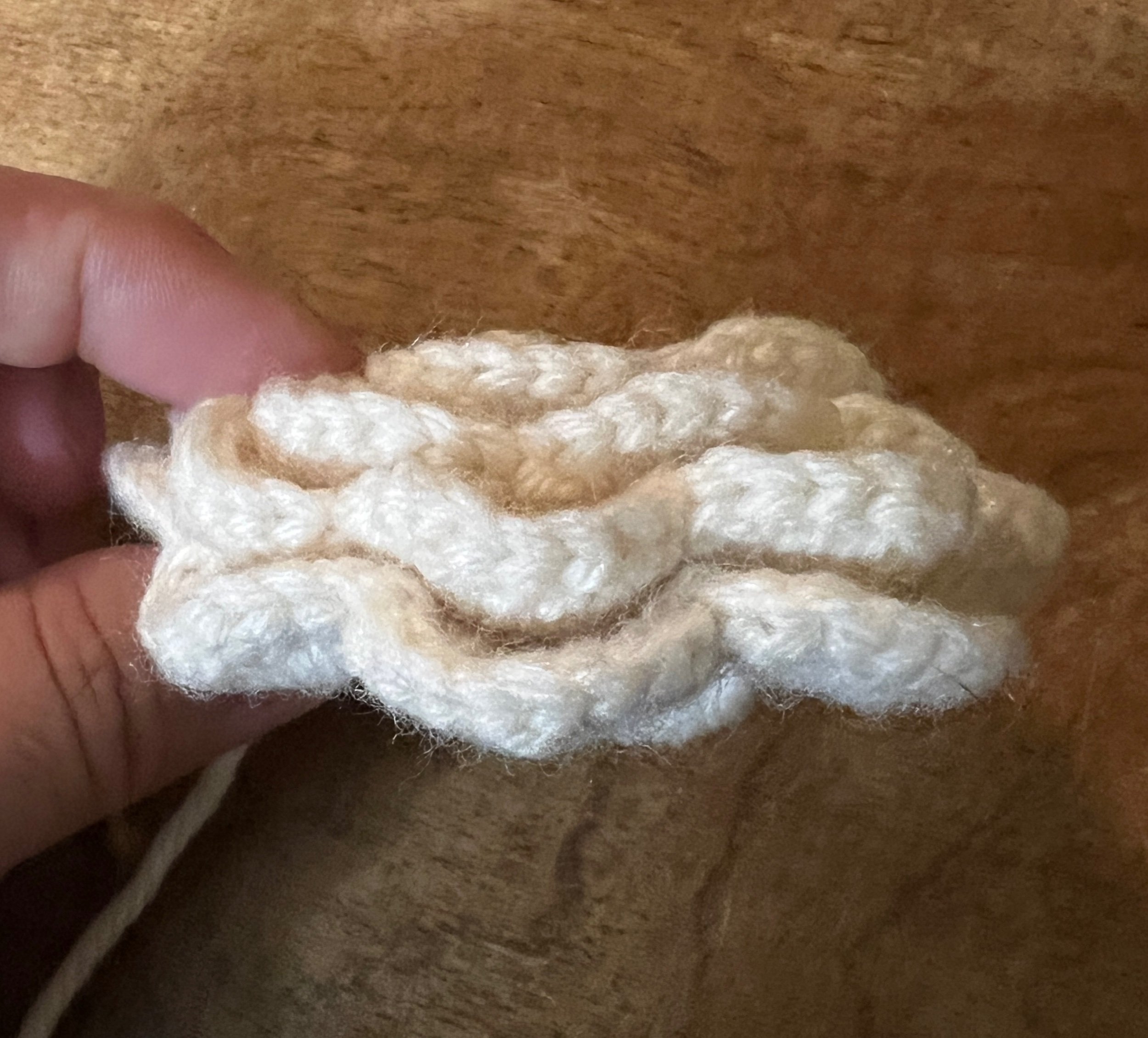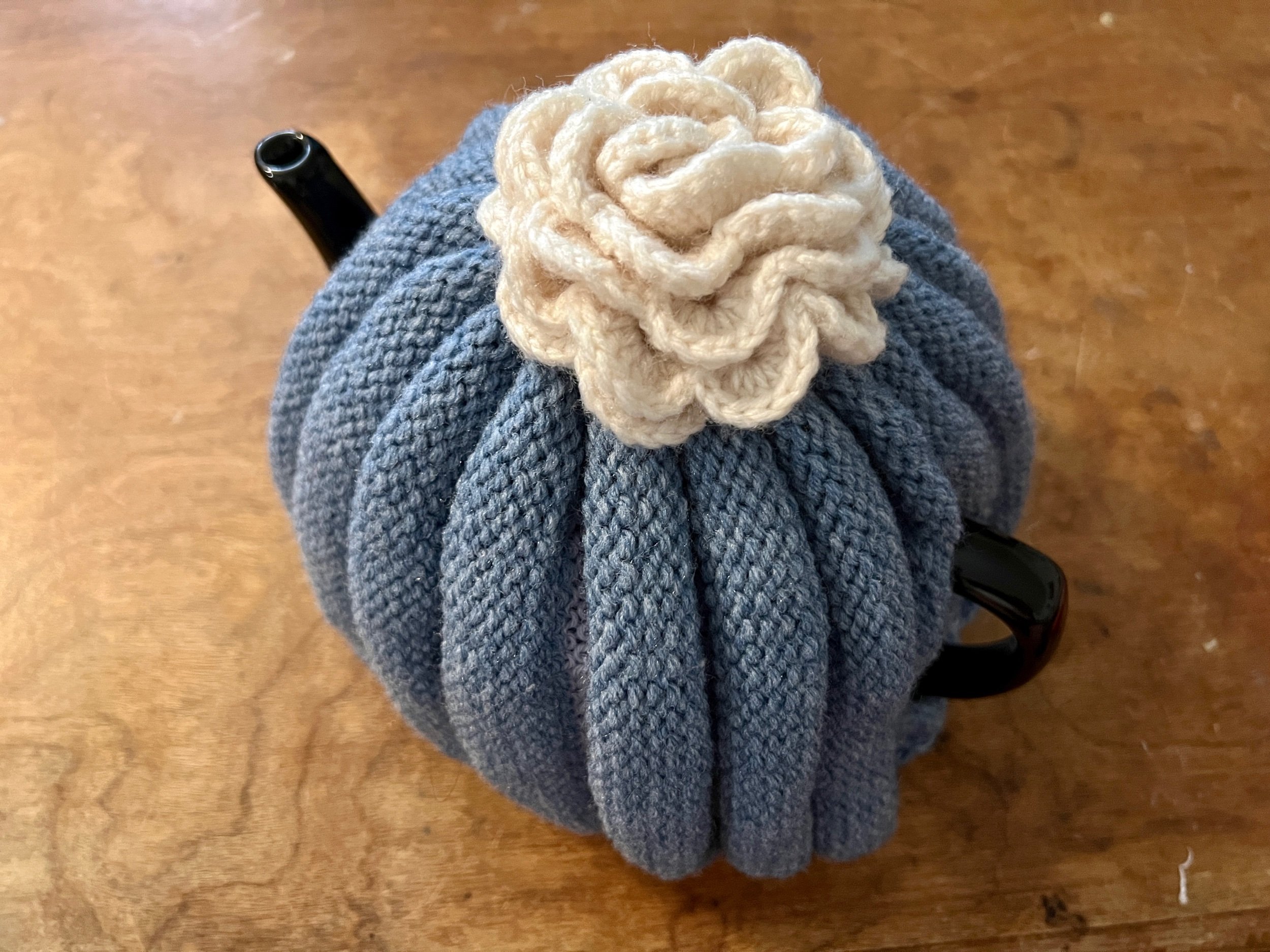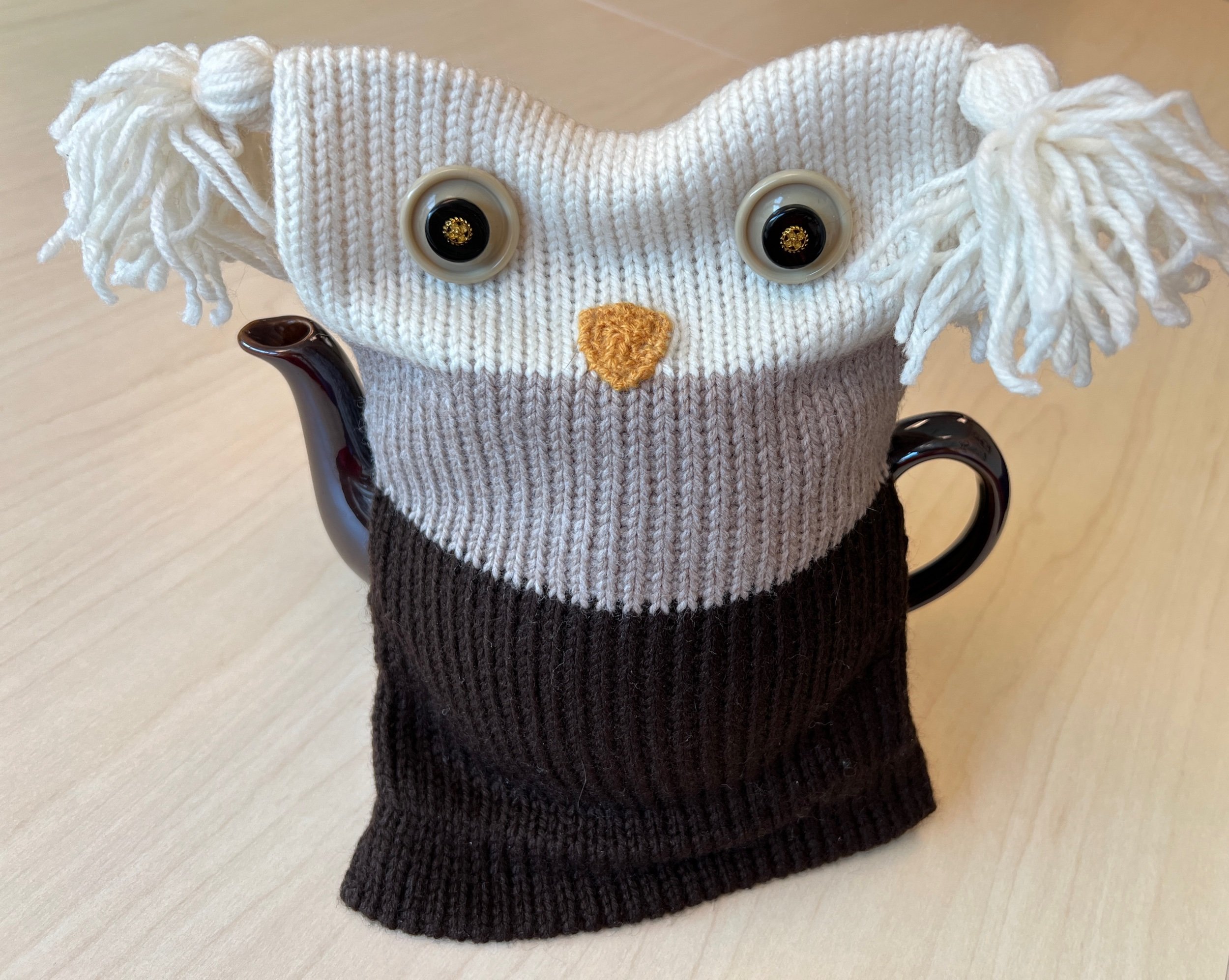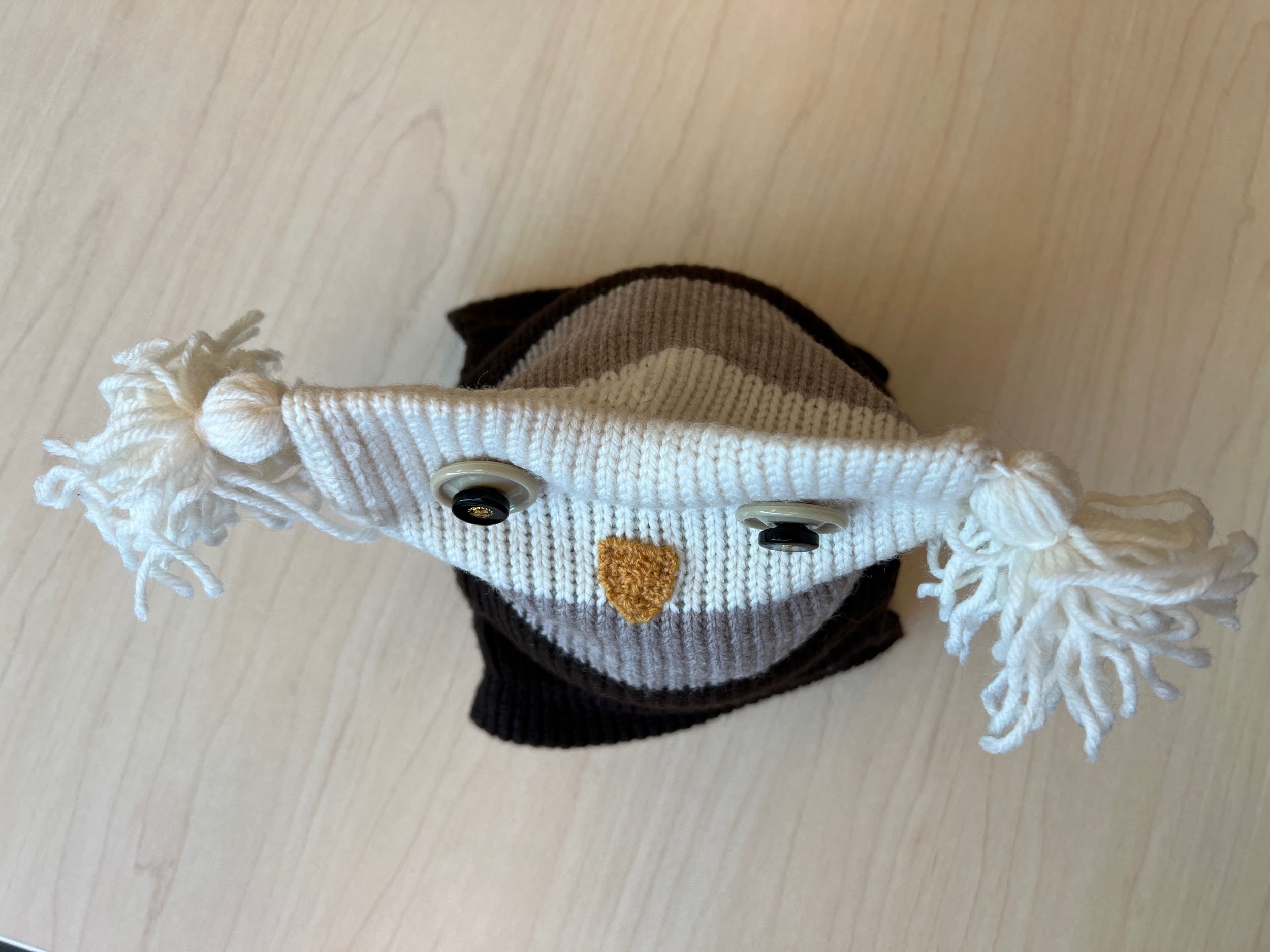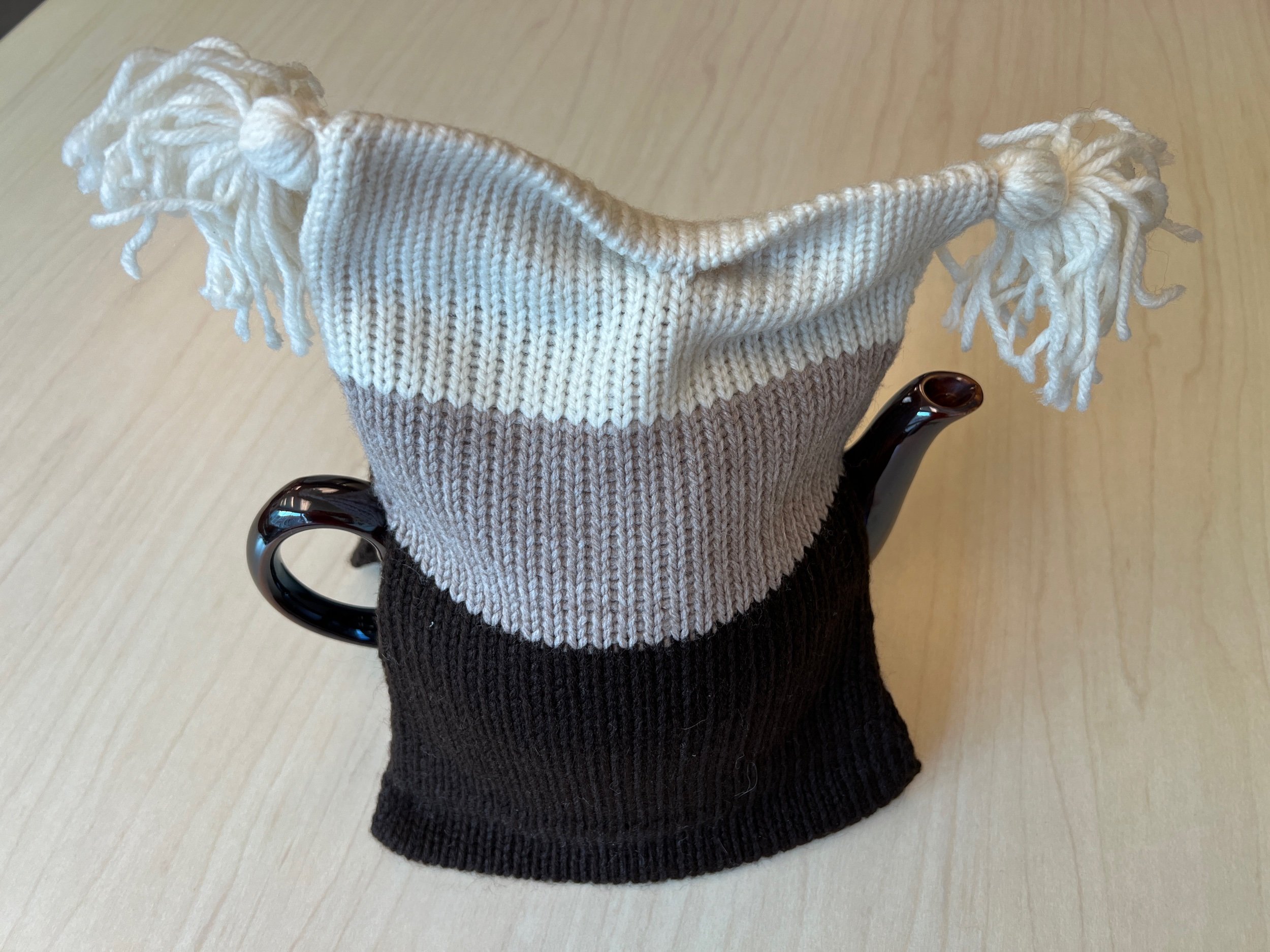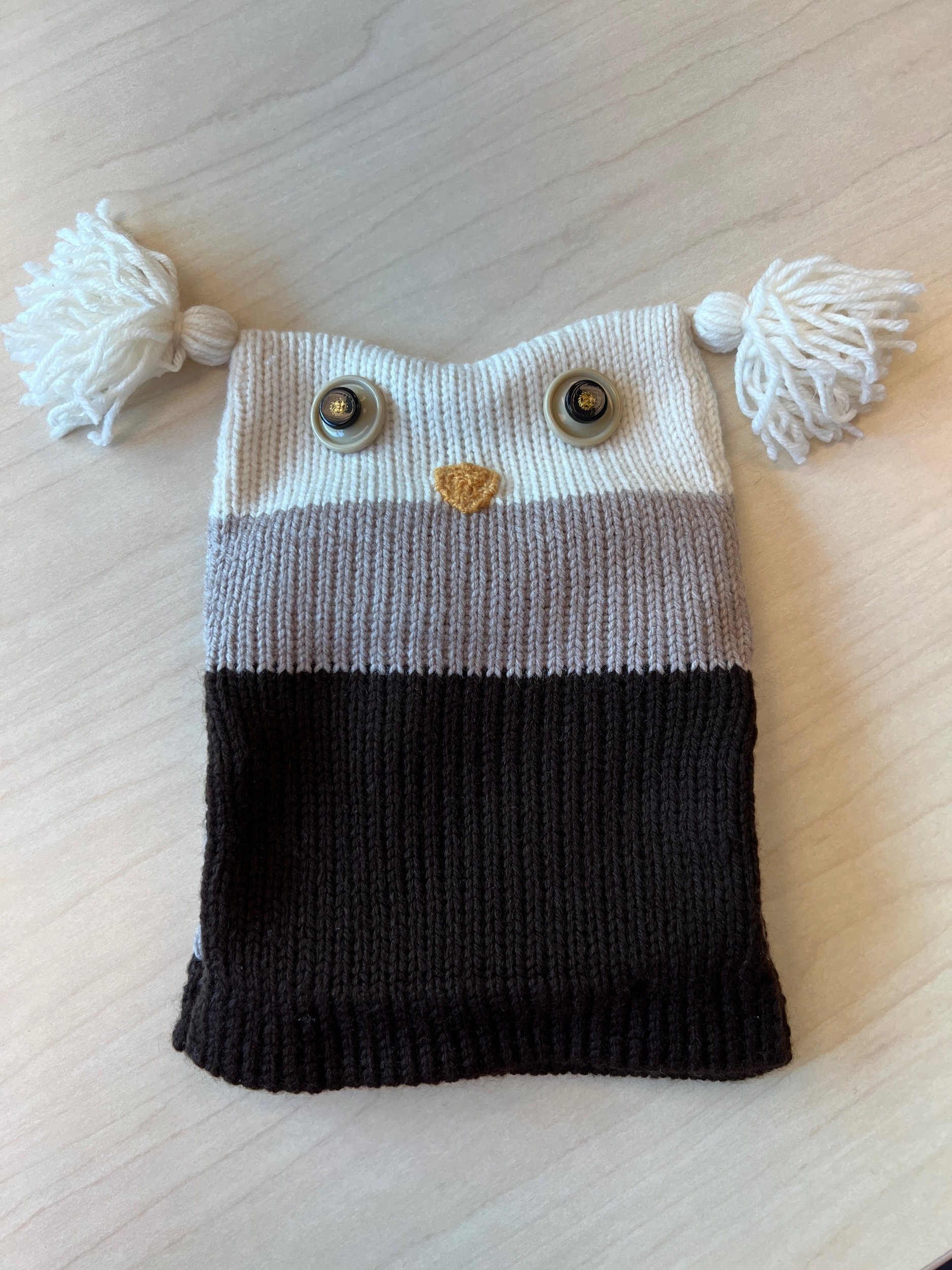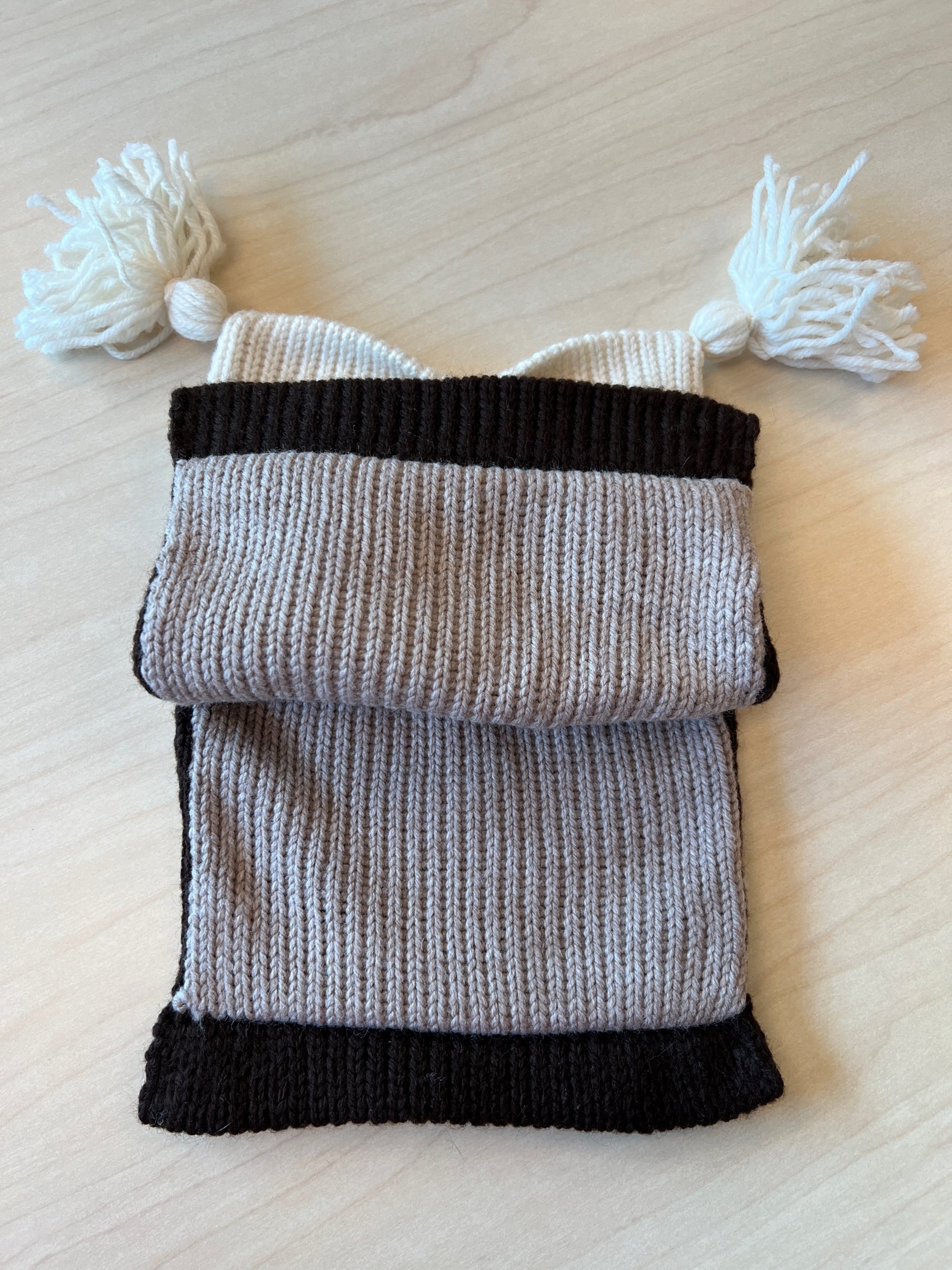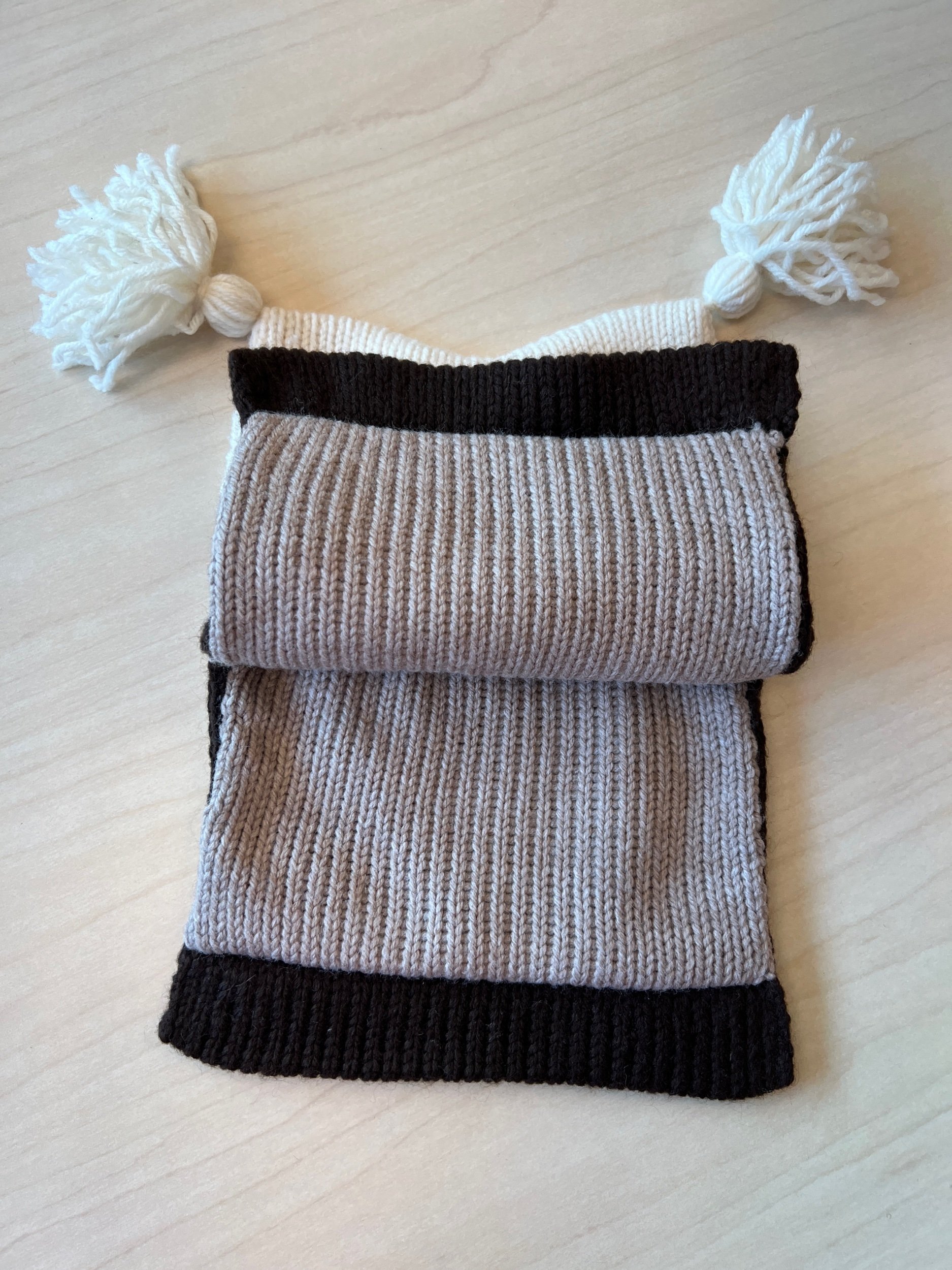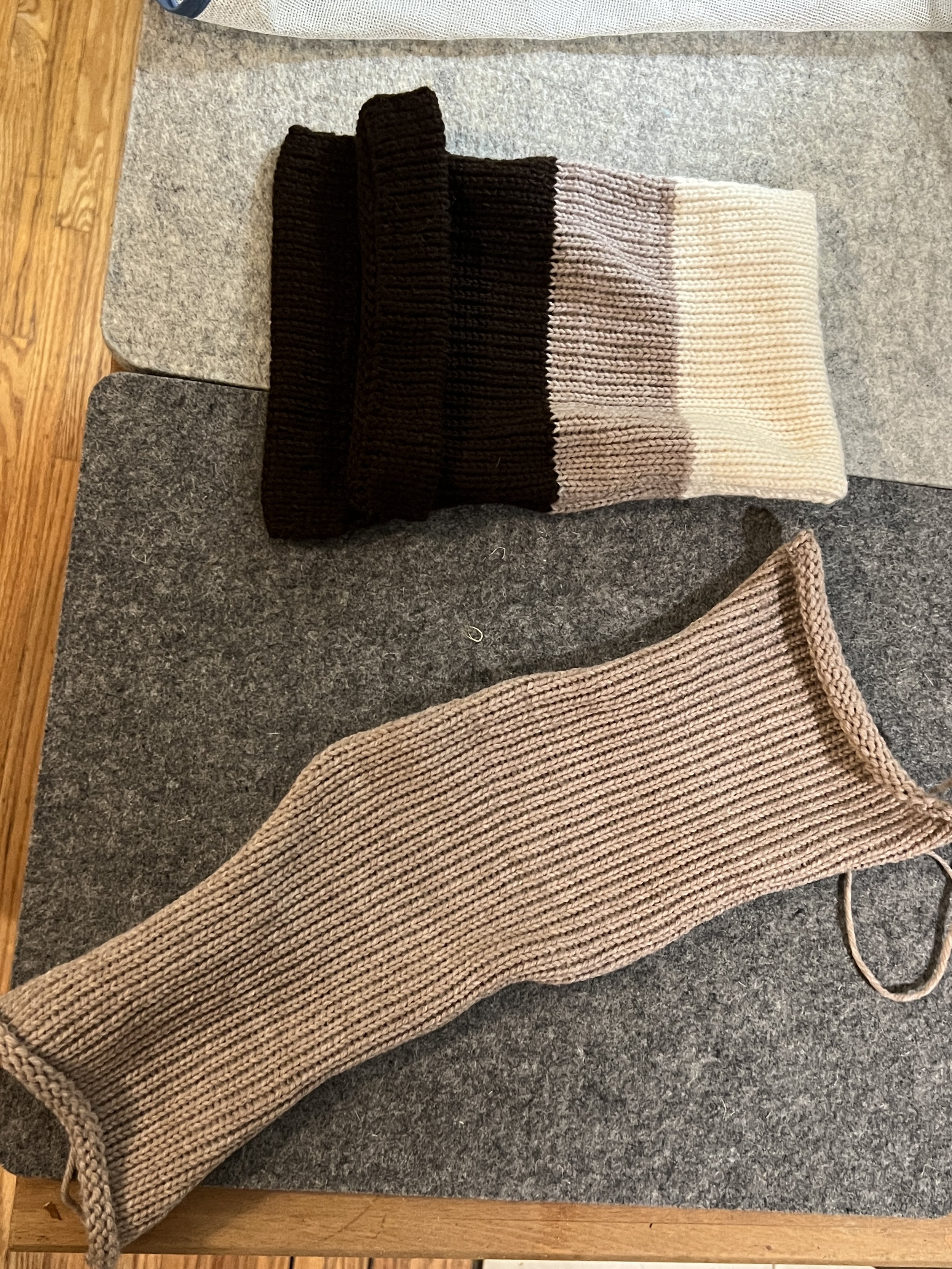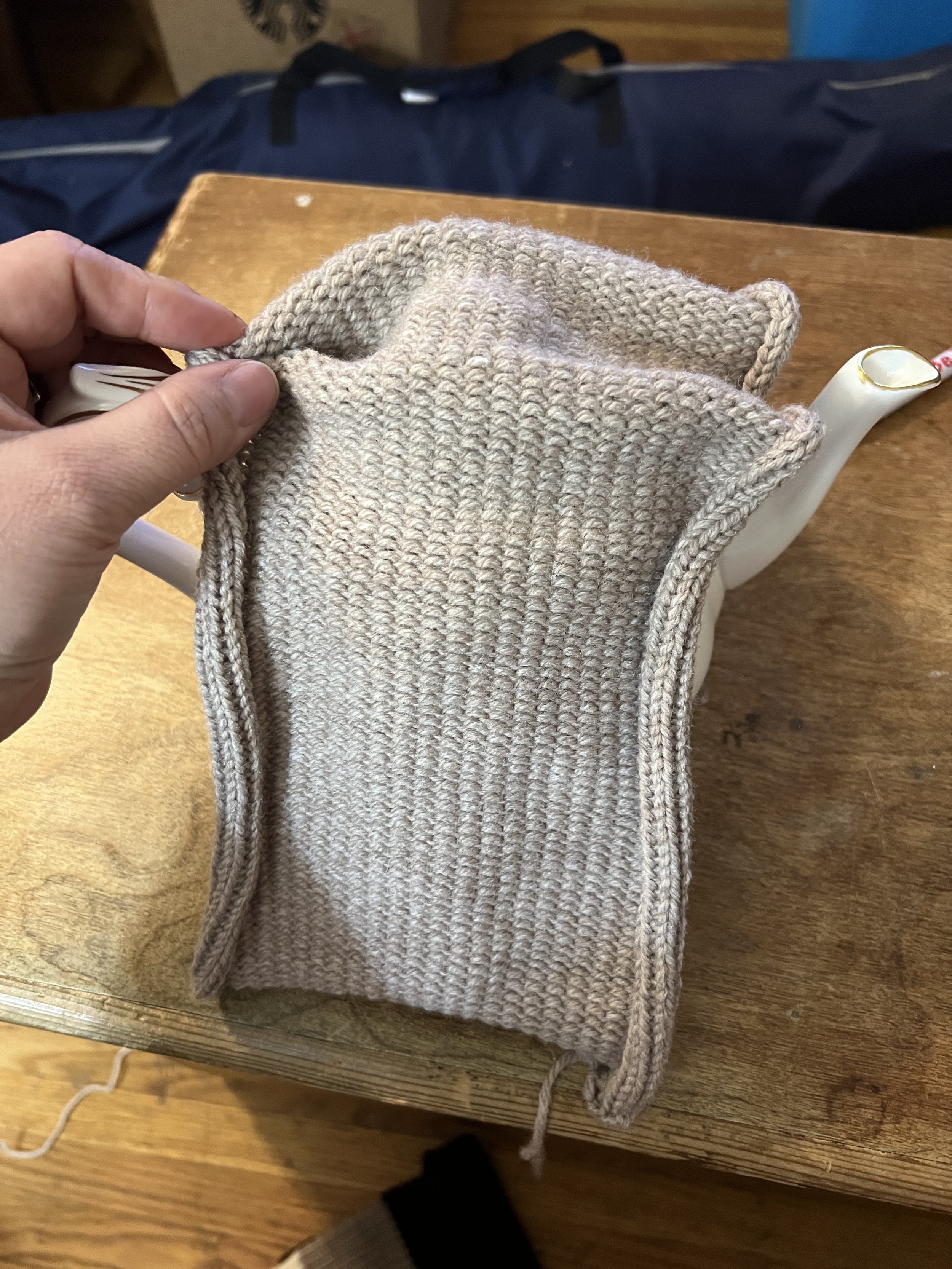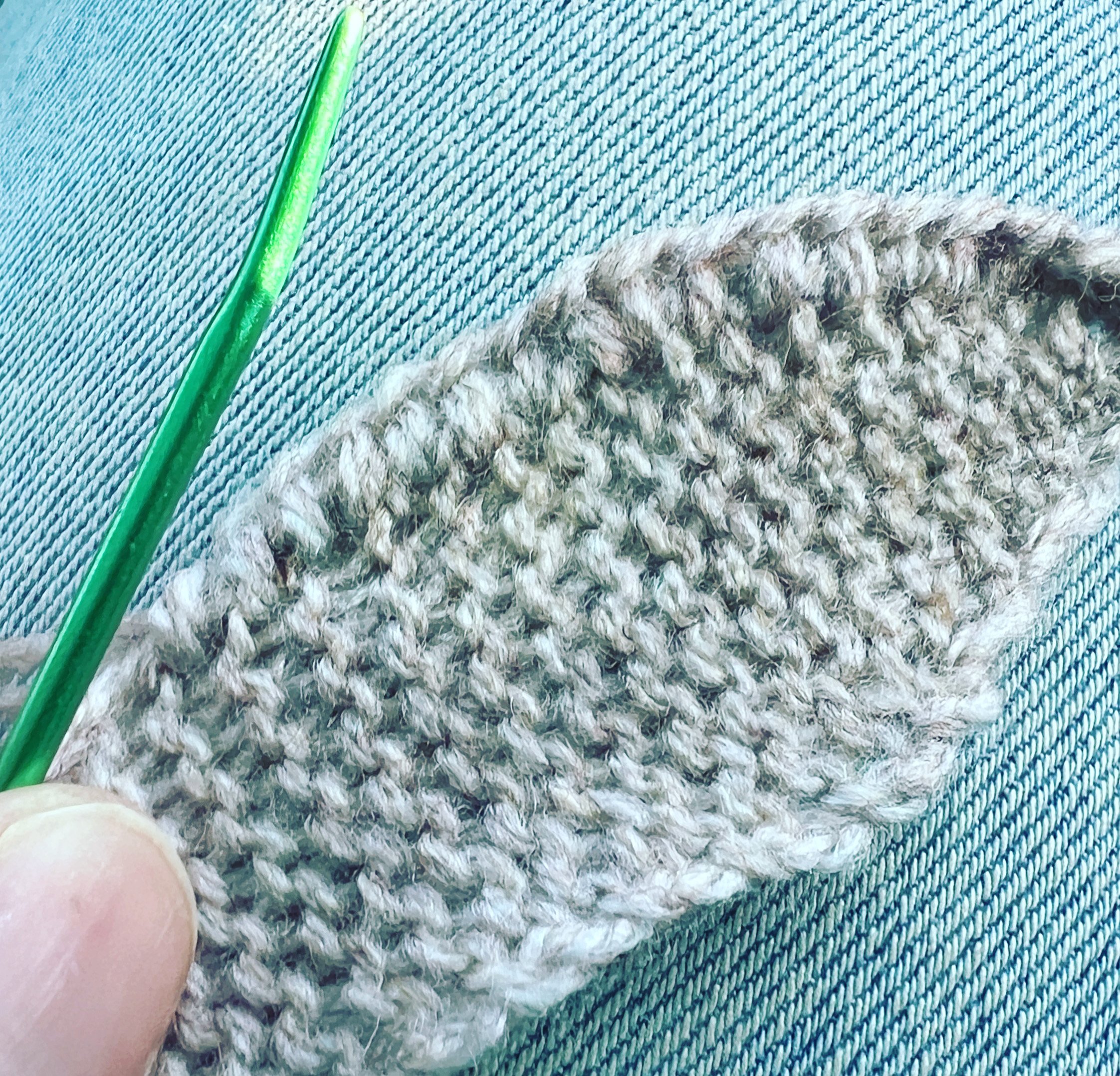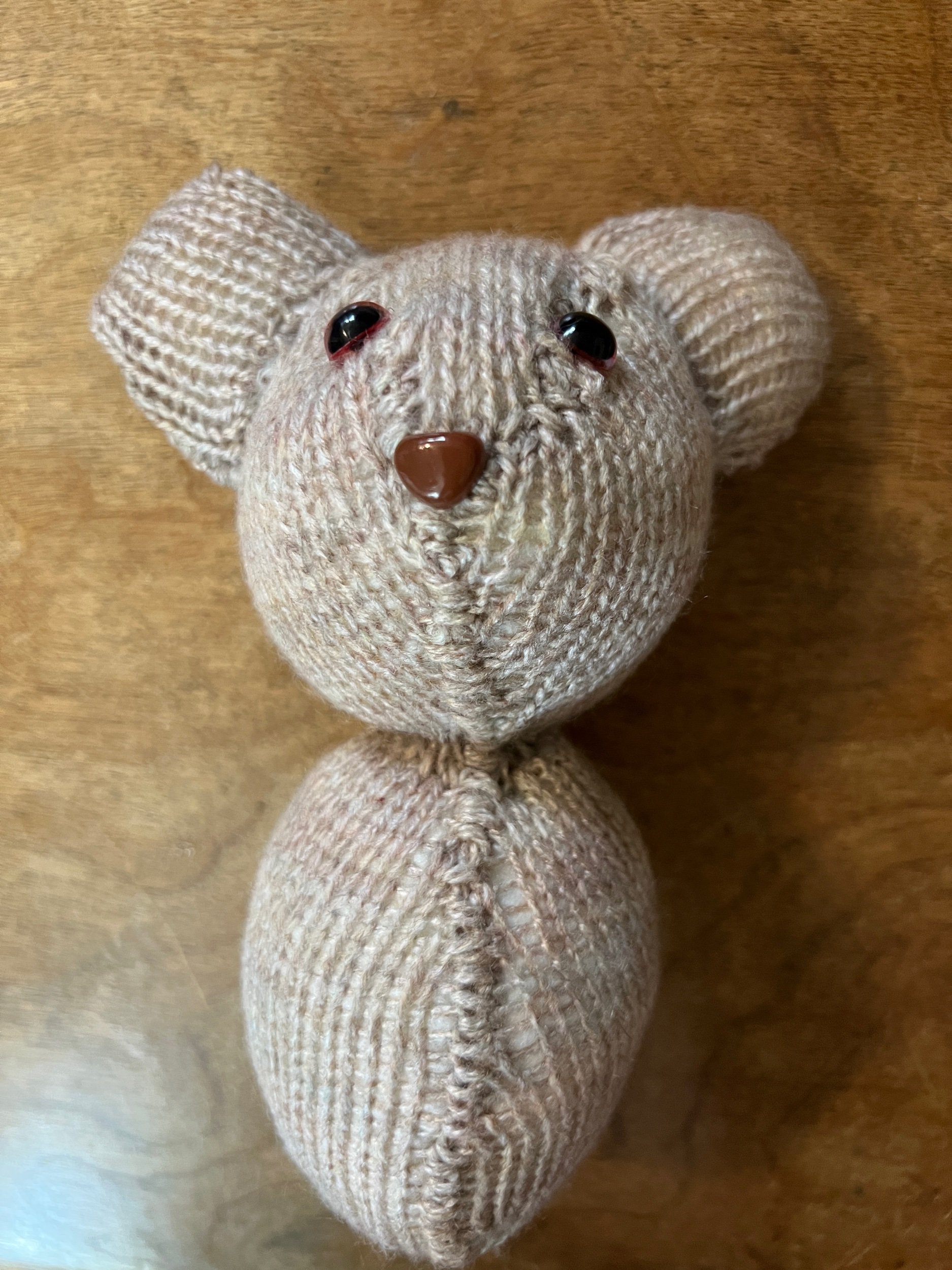Knitting the Welt - (Time mark 36:35) - Before we start knitting the welts and the cuffs, we must lightly press each piece. This is because the fabric hasn’t settled into its correct sizing. Must be done before joining. Pin and lightly press. Now we knit the back welt in k1p1 rib we start by placing the pattern paper for the back at the starting line of the welt. Push the required number of needles to the B position and pick up the first row of stitches onto the flat bed with the purl side towards you.
Set the stitch dial two numbers lower (ie. from 7 to 5) to make rib stitch tighter. Reset the Knit contour row setting to a 10% higher setting than tension gauge reading for stockinette (ie from 41 to 45). Knit from right to left. Knit the required number of rows. To make the K1P1 rib use the latch hook to form every other stitch in this manner: Enter the hook at the area where we will have the ribbing border the knitting. Now drop that column to that area and then reform all the way back up to the top stitch placing that stitch back on the needle. Repeat as needed. Leave the end of the yarn 3x longer than the width of the back welt for closing up the last stitches.
Now setting the carriage: cam lever to SLIP, Side levers to DOWN to the circle icon, Russell levers to II setting. Push needles with reformed stitches to the D position. then knit one row waste yarn. Change cam lever to stockinette work 5-6 rows. Now remove fabric.
Pull ravel cord out. Knit front welt and cuffs as we manually did already.
Since the cuff is narrower than the sleeve we must pick up and place the stitches in the following manner. (TIME MARK 40:55) Push the required number of needles to the B position. Then pick up the stitches from the first row of the sleeves main knitting and place them onto the needles in the B position in order to decrease stitching to fit the cuff.
Joining the Pullover sections - Okay so now that we have the front, back and two sleeves knitted let’s put them together. First let me give you the order in which we will be doing the joining. Begin by joining the front and back segments at the shoulder sections. Start tat the back section of the right shoulder. Knit the beck band in k1p1 rib, close the last row of stitches for the welts, cuffs and neckband, and then join the left shoulder sections. This will be followed by joining both ends of the neckband and the side seams of the back and front by blind stitch. We will then join the underarm seams and finally set in the sleeves.
Begin with the right shoulder. Push the same number of needles as the shoulder stitches to the B position - pick up the main yarn stitch of the back section of the shoulder with the right side facing you and place them onto these needles. Then pickup the main yarn stitches of the front section of the shoulder with the opposite side facing you and place them onto these needles. Unravel the waste. Push the needles to the D position keeping the back panel against the gate pegs behind the latch while keeping the front section in the hooks themselves. Push the needles back into the B position so that the stitches behind the latches slip off the needles and over the stitches in the hooks. Now using a darning needle with the yarn tail close the stitches with a darning needle using the back stitch method - removing the fabric from the machine.
Knit the neck band - we first set the pattern paper at the starting line for the neckband. We must exchange the stitch scale for one with 10% higher number than the one we used for knitting stockinette. Set the stitch dial and the row number dial a the same setting we used for the welts. (45 rows.) Push the required number of needles for the neck band to the B position. With the reverse side of the front and back facing you pickup the neck edge and place them onto the needles in the B position. Knit the neck band as you did the welts and cuffs. That completes the neck band. Use your darning needle -
Close the back rows of stiches on the back welt. DIAGRAM
Using the darning needle insert the yarn into the first stich from the front. From the front again guide the yarn into the second stitch next take the yarn back to the first stich from the back and then over to the third stitch. Go to the second stitch again and then pull out the yarn at the forth stitch. After you have done this procedure for all the stitches you then unravel the waste yarn.
(TIME MARK 46:26) With the back welt now completed we then use the same method to close up the last stitches of the front welt, cuffs and neck band. Now for joining the left shoulder sections which is identical for joining that was done on the right.
Next I will explain the blind stitch method of joining the side seams, both ends of the neck band and the underarm seams. We begin by threading a darning needle with our main yarn, with the right side of the fabric facing you, pick up each sinker loop between the last two stitches of the edge. Do this for every other row and then pull it tight to close up the stitches. Now we’ve come to setting in the sleeves.
Using waste yarn and a darning needle Place two lines of stitching along the sleeve cap. Then draw the threads just enough to fit the sleeve cap to the arm hole. Neck pin sleeve in the arm hole in close intervals matching seams. Then do short stitch basting. Set sleeve with slip stitch method using crochet hook and main yarn. insert hook along and create crochet seam. When done remove basting. Turn inside sleeve to same orientation to inside out sweater. Still some finishing touches to complete. Using a darning needle work yarn tails into seams. Final light iron pressing.
Pullover complete!



